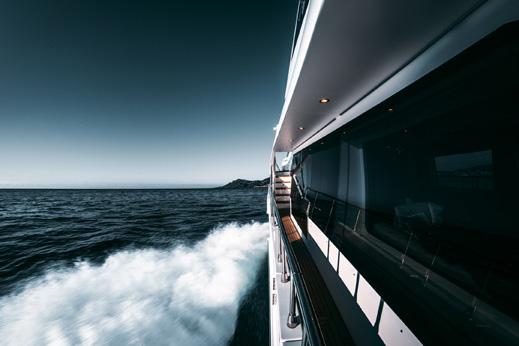


























200 TONS BOAT TROLLEY
9250 SQM YARD TO ACCOMODATE VESSELS UP TO 50 METERS
12 METERS X 35 METERS LONG LIFTING SLIP
560 TONS TRAVEL LIFT “CIMOLAI”
DOCKAGE FOR VESSELS UP TO 50 METERS







We’re proud to present the sixth edition of our superyacht travel guide, packed with destination information and itinerary ideas.
As regular readers and guests at our events know, at ESTELA we enjoy a theme. Historians recently marked the 200th anniversary of the death of Napoleon Bonaparte, which seemed a good excuse to retrace the French Emperor’s exploits around the Mediterranean and beyond.



This year we travel from our home in the Balearics to of exile, Elba.

Napoleon used Malta as a base before his assault on the orient, so we explore the cultural hotspots including Valletta, Mdina, Alexandria, Egypt. We visit ‘Alex’, also taking in El Alamein and Rosetta in the Mediterranean, before passing through the Suez canal to the watersport nirvana that is the Red Sea.
Our feature destination this time is Croatia. In a bumper chapter, we explore every nook and cranny of its 3000nm of coastline, from Dubrovnik in the south to Rovinj near the Italian border.

Westward, waters off Gibraltar and Cádiz is where rival empires duked it out for naval supremacy and the spoils of colonisation. Even Lanzarote wasn’t left untouched, as a depository for thousands of Napoleonic prisoners of war.
Crossing the Atlantic, we visit marvellous Martinique, the home of Joséphine Bonaparte, before heading to Antigua, the target of many French raids. It was, of course, the base for Admiral Nelson, before taking on Napoleon’s navy at Trafalgar.


As a bonus, we had to include St. Helena, of course! This fardeath. Aside from the coffee, he didn’t like the place much. But if scuba diving is your thing, it’s really rather great.
Remember, wherever you’re heading this season, ESTELA is Gibraltar and Latin America, and our agency and bunkering network covers most major superyacht destinations.
Whatever you need, we’re always here to help.
Fair winds and following seas!
James van Bregt Editor editor@estelayachting.com

+34 696 59 84 03










Egypt’s superyacht traffic centres on the Suez Canal, but its marina infrastructure and regulations are being transformed to attract more visitors. We explore Alexandria and the Mediterranean coast, as well as the finest Red Sea diving locations at Hurghada and Sharm el Sheikh. Coupled with transfers to Cairo, Giza, Luxor and Aswan, Egypt has much more to offer than merely world-class diving and watersports.

Our bumper feature this time is Croatia. We travel from Dalmatia towards the Italian border, exploring every nook and cranny of its 3000nm of picturesque coastline. From Dubrovnik to Rovinj, we stop in Mljet, Ston, Korçula, Lastovo, Vis, Hvar, Braç, Makarska, Split, Trogir, Primošten, Krka National Park, Šibenik, the Kornati islands, Zadar, Opatija, Pula and the Brijuni islands. We suggest where to dock, what to see and where to eat.
MALTA...................


110

Following in Napoleon’s footsteps, we take in southern Corsica and northern Sardinia. From Ajaccio and Bonifacio we drop south to Alghero, the Maddalena Archipelago, Porto Cervo, and



exile, Elba


As ever, we update you on everything there is to see and do in the Balearics. Scheduled direct this year, while PMI is second only to Nice as the busiest private air terminal in the Mediterranean. More and more HNW visitors are discovering our backyard. This time, we present a complete 21-day sample itinerary, taking in Menorca, Mallorca, Cabrera, Ibiza and Formentera.
Heading west, we stop in Gibraltar, where ESTELA has a new outpost. From here, we call at Cádiz before setting off to Lanzarote, as a staging post for the journey to Martinique, the home of Joséphine Bonaparte, for some French-style





We check in again on Antigua, after a two-year absence, with suggestions of where to drop anchor and where to eat. The bonus destination in this edition is St. Helena, where Napoleon was exiled


It’s a long way from anywhere, but If scuba diving is your thing, don’t miss this chapter!
practical information about the destinations featured in this year’s itineraries. Alongside useful local numbers and marina info, there are anchorage guides, jet ski and scuba diving rules, as well as emergency contacts.









Each edition of “The Y” is designed around a theme related to a destination in the guide, which we carry through into ESTELA’s marketing materials and events during the year. As the main destination this time is Egypt, we couldn’t resist choosing Napoleon and the French Emperor’s campaign in the land of the pharaohs.

The design is inspired by the encyclopaedia ‘Description de l’Egypte’, written by 160 French scholars and scientists who accompanied Napoleon during the Egyptian campaign. This monumental tome, which took around 20 years to complete, documents the exploration of this previ-
Photography is inspired by historical depictions of the Egyptian campaign, while the graphic elements in these pages are taken from Napolesome original or adapted maxims by Napoleon, for which he was famous.
We hope you enjoy reading!
Explore the entire original series of “Description de L’Egypte” here: bit.ly/descriptiondelegypte




In our promotional video, premiered during the “Captains’ Dinner at the Museum” in Palma, a young captain calls his agency, ESTELA, and requests a blue rose for his beloved.

The call ends and he resumes reading a book about Napoleon, imagining himself stepping into the shoes of the famous leader.

In the opening scene, we see Joséphine, writing to her beloved husband to request a blue rose. As a passionate collector of roses (as well as lovers), Joséphine Bonaparte created a botanical garden at her Parisian home, Château de Malmaison, where she planted more than 250 varieties of rose. In her quest to acquire every known kind, she enlisted the help from her powerful

Watch the video: bit.ly/Napoleonbluerose

husband, who sent home many new varieties on his travels.

In a dream sequence, Napoleon charges his vivandiers from ESTELA with Egypt’s ancient monuments. In the 18th century, ‘vivandières’ were sutlers, or vendors, supplying food, drinks and other items to army regiments, as well as providing medical assistance. The latter laid the foundation of the establishment of the Red Cross.
Our intrepid agents, modelled on a vivandière of the time and a legendary Mamluk, Rustam, a bodyguard and trust ed aide of the Grande Armée, set off and return triumphant with the prized blue rose, of course!







Napoleon’s forces arrived in Egypt in June 1798, with the objective of bringing “enlightenment to the Orient” by imposing the assumed superiority of the Western value system, and ‘liberating’ people from Barbaric despots. The emperor preposterously styled himself the ‘Saviour of Egypt’.


Some 30,000 soldiers had sailed from Toulon for Alexandria -- conquering Malta along the way, to serve as a strategic base between Paris and the empire’s new Oriental outpost -- along with 160 scholars and scientists. The military objective was to cut off

British mercantile routes to India through the Red Sea, while the civilian group was tasked with studying and documenting the ancient ruins and artefacts of the region.
Despite Alexandria being heavily who controlled this part of the Ottoman Empire, were no match for superior French weaponry and the city fell almost instantly.
As French forces progressed towards Cairo, an army of 50,000 Mamluks, Arabs, Bedouins and Egyptians was vanquished easily at Embaba, in the

Battle of the Pyramids, ceding control of the country to Napoleon.
Here, the Institut d’Egypte was founded, with French scholars installing printing presses taken from Vatican store rooms, along with a library of 215,000 books chosen from the Vatican Library. The scientists, meanwhile, procured instruments for the Institute’s new labs, tasked with acquiring knowledge and understanding of Egypt and its population.
However, the French foray into Egypt was short-lived, as Britain’s admiral Horatio Nelson’s ships were off Aboukir just weeks later, picking

Deprived of his navy and supply lines,
Napoleon headed onward by mule and camel, seeking to further advance on Ottoman-held territory in Syria. However, without fresh supplies from France, his under-equipped, plagueridden and hungry soldiers were no match for local resistance, aided by the British. After three years of signing a peace treaty in 1801.
While the military venture had resulted in defeat, the cultural legacy was more enduring.
‘Egyptomania’ took hold in France, where all things Oriental became highly desirable, while the scholarly and scientific work over three years formed the foundation for the study of Egyptology.




Aside from liveaboard dive boats in the Red Sea and packaged river cruises along the Nile, it’s fair to say that leisure yachting in Egypt is in its infancy. However, after a study in 2021 concluded that yachting visitors spend on average 94% more than the average tourist, a government strategy was launched to attract more yachts to its 2,400 kilometres of coastline.

New marina projects have been greenlit, while upscale facilities such as Marina Marassi (to 100m) have
recently opened, joining Marina El Alamein (to 60m) on Egypt’s Mediterranean coast. The entry/exit
new digital portal for yacht formalities is now live (bit.ly/ESTELA-Egypt-MTS).







While the Nile is navigable from the Mediterranean delta as far as the Aswan Dam 1100 km to the south, the river remains a busy commercial waterway, with hazards such as sandbars and strong currents. To navigate the river, a security permit has to be obtained from the Coast Guard as well as permission from the Ministry of Foreign Affairs. Navigation is restricted to day- time only. There are several bridges and locks, which open at certain times of the day or on request, while maximum draft must not exceed 1.5m, ruling out most motoryachts and all sailing yachts. Navigation is only possible during winter, from October to May, when the level of water is higher. The river depth falls considerably during the summer months.

The Nile is also home to wildlife including crocodiles and hippos, so the only recommended way to experience the best of the Nile remains aboard a dedicated LuxorAswan dahabiya cruise, or on the Berge, stationed in Luxor. This popular itinerary takes in the Pyramids of Giza, the Valley of the Kings, and the temples of Luxor and Karnak.

While the main attraction on Egypt’s northern coast is Alexandria, followers of military history may want to consider a visit

El Alamein, just 15 minutes’ drive from the town’s marina.
Opened only in 2021, the El Alamein War Museum is a small facility, but is packed with fascinating memorabilia, explained with great enthusiasm by engaging and knowledgeable guides.
Crammed with weapons, uniforms, photographs and other artefacts, it provides great insight into the strategies and tactics deployed in this important conflict. Among the wide range of items belonging to Allied and Axis forces, the
jewel in its collection is Field Marshal Rommel’s hat, donated to the museum by his nephew.
The nearby Commonwealth War

over 7,000 Allied soldiers who died during the battle, while in the German War Cemetery lie 4,000 German soldiers who perished here.
site to visit, displaying the trenches
and other obstacles deployed. The houses the remains of several tanks and other vehicles destroyed in battle, which is particularly popular with younger visitors. The museum and surrounding grounds are worth a twohour excursion.



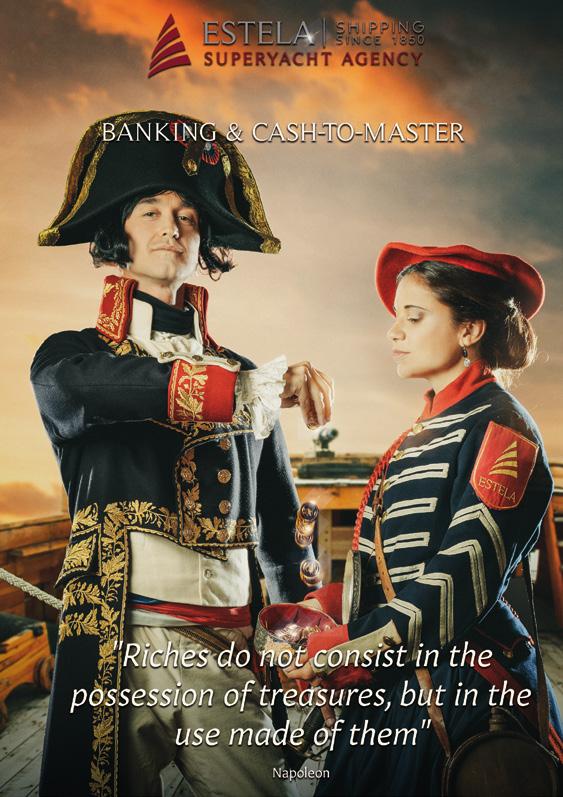


Egypt’s second largest city, with ‘Alex’ is best known for its world famous library, as well as ancient landmarks including Pompey’s Pillar, the Citadel of Qaitbay and the Pharos of Alexandria lighthouse, one of the seven wonders of the world.
Egypt’s principal sea port was the a thousand years, named for its Macedonian founder, Alexander the Great in 332 BCE. ‘Al-Iskandariyah’ in Arabic, was one of the greatest cities in the region, not only for its importance as an Ottoman transit point between the Red Sea and the Mediterranean, but also as a centre of Hellenic scholarship and science.
In early Christian history, Alexandria burgeoned into a prosperous metropolis, though it went into decline after being conquered by Muslim Arabs in the 7th century CE, with the capital moved to Cairo. Only after Napoleon’s forces took over in 1798 did the city regain prominence, this time at the centre of a booming cotton industry. American cotton had been introduced by Muhammad Ali Pasha, the founder of modern Egypt, turning the country into a major producer and exporter, concentrated in the fertile Nile Delta region.Today, Alexandria is not the most gleaming photogenic city, but scratching beneath the concrete exterior, there is a great deal to enjoy on a day’s guided tour.


According to Greek biographer and author, Plutarch, the person to blame for the original library burning down was Julius Caesar. Pursuing Pompey into Egypt in 48 BCE, Caesar was cut off by an Egyptian armada in the port of Alexandria. The emperor ordered the enemy ships to be burned, which destroyed the the city, including the famous library. The building was only partially destroyed, but a later attack ordered by Roman Emperor


the job. All that remains of the original bibliotheca today are the storerooms underneath the ruins of the Serapeum, under Pompey’s Pillar.

the city’s reputation for learning and culture, the new library houses a vast collection of eight million books and manuscripts, stored under diffused light designed to preserve its tomes. The complex also contains cultural event spaces and museums, with something to see and do for visitors of all reading ages. The library can admit up to 2,500 readers at a time.
Within the ‘Bibliotheca’ complex is the Antiquities Museum, documenting Alexandria’s development through the ages, from the Pharaonic period, through to the Greek and Roman periods, on to the Byzantine and Islamic eras. Rebuilt on the site of the original library, this archaeological museum was created to house the 1,316 artefacts found during its construction. Some of the most interesting displays cases and funerary statues, as well as Greek statues.
The Manuscript Museum not only has a beautiful display of rare manuscripts, ancient texts and books, of conservation and restoration. Its collection includes the only surviving scroll recovered from the original library, while there is also a display of drawings, maps and early photographs that documents the city’s long history.

Walking to the sea front from the bibliotheca, you will arrive at the start of the Corniche, a long pedestrian promenade stretching along the eastern bay of the city. A 45-minute walk west brings you to the Citadel of Qaitbay, a fort completed in 1480 Pharos Lighthouse.
For four hundred years the fortress withstood Ottoman attacks and protected Alexandria, until a British damage after which it fell into ruin. King Farouk designated the remains a royal palace in 1904 and it was
turned into a maritime museum in 1952, after the Egyptian revolution. It is still open today, though the views over the harbour.
Much of the fortress was constructed from the rubble of the phenomenal Pharos Lighthouse, which previously stood here, on Pharos Island. The lighthouse, built over twelve years in the third century BCE, stood at 110 metres high upon completion, costing some $3 million in today’s money to build. The pyramids of Giza were the only taller man-made structures in the world at that time. A permanent
surface made of polished metal.

The lighthouse was as much a statement of Alexandria’s importance in the Orient, as a landmark for
and the Mediterranean sea. Today, however, it is a dive site, thought to have crumbled under the sea in a

series of earthquakes and tsunamis, succumbing to the waves in 1375. But to visit the remnants of the lighthouse, discovered only in 1968, visitors now need scuba gear, diving to between 8 and 15 metres depth.
Above water, Alexandria National Museum museums. Inaugurated in 2004 and set inside a renovated Italian style palazzo, it documents Alexandria’s rich history through a collection of 1800 artefacts. They chronicle the metropolis’ transition from antiquity to the Modern Period through a small but perfectly formed collection, with some stunning items on display.
co-Roman times and relics discovered in underwater excavations, including a sphinx uncovered at Aboukir. The basement is dedicated to the Pharaonic period, celebrating the link between the living and the afterlife.



through the Byzantine, Islamic and modern eras, with coins, weapons and jewellery.


Another diminutive museum worthy of an hour’s visit is the The Royal Jewellery Museum, set in the former royal palace of Princess Fatma Al-Zahra. The two-storey building itself is worth exploring for its frescoes, mosaics and ornate stained glass. The museum houses over 11,000 items, including the large collection belonging to Prince Mohamed Ali
Worth a look is the highest memorial pillar in the world, Pompey’s Pillar, constructed in honour of Emperor Diocletian in the 4th century CE.
Standing some 30 metres tall, with two sphinxes on either side, constructed in solid Aswan red granite, the monument was erected to mark Diocletian’s put down of a revolt in the city.
The column rises from the ruins of the Temple of Serapeum, named for the hybrid Greek and Egyptian sun god, Serapis. The column was named erroneously by travellers after the Roman general Pompey, murdered by Cleopatra’s brother. Only later was an inscription uncovered on the base, stating that it had been built to support a statue of Diocletian. The temple was destroyed in uprisings in the second and fourth centuries CE, leaving the pillar alone standing, with only a pair of surviving sphinxes and a nilometer for company.
From the Pillar, it is a 5-minute walk to the Catacombs of Kom El Shoqafa, which were discovered only in 1900, when a donkey fell through a sinkhole. This is the largest-known Roman burial site in Egypt and one of the last major works of construction dedicated to the religion of ancient Egypt.
While the site doesn’t compare catacombs in Luxor, they are nonetheless impressive. Three levels of subterranean tombs and chambers were dug here, to a depth of 35 metres, holding more than 300 corpses.
Entry is via a spiral staircase around a well, into which bodies of the dead


resting place. The triclinium was a large chamber where relatives would have paid their last respects with a funeral meal, while there were spaces for worship, as well as the Hall of Caracalla, containing the bones of Emperor Caracalla’s horses.
Other important buildings in Alexandria are the imposing Mosque of Abu Abbas Al Mursi, standing on the site of the tomb of a revered
Mursi, from Murcia in Spain. This vast mosque is one of three in this large

complex, and is notable for a soaring central tower and interior with intricate mosaics, tiling and carpentry.
Saint Mark Cathedral is the most important Coptic Orthodox church in Alexandria and is the historical seat of the Pope of Alexandria. The cathedral stands on the site of the church founded by St. Mark the Evangelist, the founder of Christianity in Egypt in 60 CE.
Of course, no visit to any Egyptian city is complete without a trip to a souk. Chefs may want to head to Souq Ibrahimiyyah in the morning, to catch vendors hawking fresh produce, seafood, and a variety of
only, the best of the day’s catch is to be found in Anfushi Fish Market .
For antiques, curios and souvenirs, Attareen Antique Market and Sayed El Safty are the places for you. For local jewellery, Sharia Faransa (France Street) is lined with gold and silver merchants, named after the place where Napoleon’s army’s horses were stabled.
From Alexandria, the Giza Necropolis is a two-hour drive away, on the outskirts of Cairo. The ‘city of the dead’, in the ancient capital of




Pyramids of Giza, the Great Sphinx, and burial sites of the pharaohs, Khufu, Khafre, and Menkaure, queens and nobles of the Fourth Dynasty. The brand new, and eagerly awaited, Grand Egyptian Museum (GEM) is set to open on a 500-acre site in Giza later in 2023. Limited guided tours started in May, to test site readiness. The new museum houses the complete Tutankhamun collection, including jewellery, statues, furniture and Tutankhamun’s famous death mask. Immaculately preserved, the new displays are custom-made, with adapted lighting, temperature and

humidity control to maintain their condition for the next decades.
GEM offers educational programs for children and adults, including lectures and activities around Egyptian culture

hieroglyphics, for a fully immersive experience.


Napoleon was a keen mathematician While his colleagues climbed the pyramid, he calculated that with the stones from the pyramids, one could build a wall three metres high around all of France. Monge later redid the calculation and found it was correct.
Trivia: On his visit to Giza, Napoleon amused himself by encouraging his companions challenged. The winner was the oldest of the contestants: 53-year-old mathematician Gaspard Monge. Monge had with him a gourd of brandy, from which he offered each of the others a generous sip as they reached the summit.

For those brave (or mad) enough to venture into hectic, dirty and noisy Downtown Cairo, the good news is that its famous Museum of Egyptian Antiquities won’t be closing after the opening of GEM. Containing some of the world’s most important collections of ancient artefacts, it is the oldest archaeological museum in the Middle East, inaugurated in 1902.
It houses the largest collection of Pharaonic antiquities in the world and has an extensive collection, spanning from the Predynastic Period to the Greco-Roman Era, with more than 100 exhibition halls.

Inaugurated in 1902, the Museum is an historic landmark in downtown Cairo, and home to some of the world’s most
Among the museum’s stunning collection are the complete burials of treasures of Tanis, and the Narmer


of Upper and Lower Egypt under one king, which is also among the museum’s invaluable artefacts. It also houses the kings Khufu, Khafre, and Menkaure, the builders of the pyramids at the Giza plateau. An extensive collection of papyri, sarcophagi and jewellery completes this uniquely expansive museum, though undoubtedly some of the new GEM at Giza.
The Museum of Islamic Art (MIA) in Cairo is considered to be the largest museum in the world dedicated to in Islamic Art. MIA houses more than 100,000 artefacts, covering all branches of Islamic art through the ages.
Its rich collection of manuscripts and artefacts covering medicine, surgery, horticulture and astronomical instruments are a treasure trove for researchers, historians and students of Islamic sciences. Collections chronicling daily life include utensils, as well as jewellery, weapons, wood, ivory carvings, textiles, carpets and more.

There are many mosques to choose from, but if visiting one, you should probably make it the Mosque of Muhammad Ali Pasha , also referred to as the Alabaster Mosque. Built in Turkish style inside the Summit of Saladin Citadel in the mid-19th century, it accommodates up to 10,000 worshippers.

Its most notable external features are the twin minarets, which at 84

metres are the tallest in all of Egypt. From here, take in the phenomenal views across the domes, spires and minarets on the city skyline and take in the ‘Symphony of Cairo’ , as the constant cacophony of noise is laughingly called.
Inside, it’s all about the 21-metre diameter central dome, standing 52 metres high, with the hall beneath lit by giant chandeliers and a constellation of suspended lanterns.

Of course, no visit to Cairo would be complete without a visit to its most famous souk, Khan el-Khalili. This is one of the oldest markets in with shops, stalls and eateries, selling everything from handmade crafts, jewellery, spices, textiles and traditional Egyptian goods.


Heading east towards Port Said, some 30 nautical miles along the coast lies the historical city of Rosetta, known locally as ‘Rash ī d’, at the entrance to the Nile. Most famous as the place where Napoleonic forces discovered the Rosetta Stone, the 800 CE city is a charming coastal town with a rich architectural heritage and colourful buildings.
Tip: Let your trusted guide direct you to the best places and negotiate for you, as well as fend off the street vendors, beggars and wannabe tour guides, of course.
Given its strategic maritime location, Rashīd was a key regional trading centre until the 18th century, declining in importance as Alexandria expanded. port and was at the heart of the Nile delta-grown rice trade.

The most notable building here is the 1497 Qaitbey Fortress, similar to the Citadel in Alexandria, built to protect the city and Nile entrance from Ottoman attacks. It was later occupied by French forces and renamed Fort Jullien
Thomas Prosper Jullien.
Rebuilt on the site of an earlier fortress
whose name is attributed to many buildings in Cairo and elsewhere, it played an important role in repelling invaders. However, by the time Napoleon’s men arrived, it had fallen into a bad state of repair and it was during extensive renovations that the French discovered the Rosetta Stone.
The tablet of black granite-like rock would hold the key to understanding

Ptolemy V, while the full script was decoded by French scholar, JeanFrançois Champollion.
The Rosetta Stone decree marks the anniversary of the crowning of 13-year old Ptolemy V Epiphanes, in the ancient capital, Memphis, in 196 BCE. With the defeat of Napoleon’s forces at the hands of the British, the



the British Museum in London, where it remains on display today. A replica is on display in the Rashīd Museum, along with a collection of artefacts from the Islamic and Coptic periods, including pottery, tombstones, textiles and jewellery.
hieroglyphics, which had fallen out of use 1400 years earlier. Inscribed in three translations of the same religious decree -- in hieroglyphic and demotic script, as well as Greek -- scholars were able to use the Greek inscription as the key to deciphering the other two. An English physicist made a phonic connection between the hieroglyphics and the pharaoh,
Under Ottoman rule, the city became a prosperous trading centre, used by British and French traders to store and transport grains, coffee, silk and other commodities from their colonies. Armenian, Turkish, Syrian and Jewish merchants moved into Rashīd, leaving their distinctive stamp on the town’s ‘delta architecture’, still evident today in its mosques, churches, houses and monuments.
A number of these are now open to the public, including House of Amasyali, House of Abu Shaheen and a 400-year old bath house, Azouz Hammam, which was in operation continuously until the 1980s, with water pumped in from the Nile.
House of Amasyali is one of Rashī examples of merchants’ mansions, adorned with lanterns, latticed windows and colourful interior decoration. Next door stands House of Abu Shaheen, with a 200-year old mill on the ground
work horses. The shrine, Abu Mandour, standing on the river bank, has long been a pilgrimage site for many Egyptians, while three of the town’s twelve mosques stand out for their ornate architecture and heritage; Al-Mahalli Mosque (1721 AD), Zaghloul Mosque (1577 AD), and Abbasi Mosque (1809AD).
Trivia: A canal of some kind has existed in Egypt since antiquity, even in the time of the early pharaohs, while the Nile was also connected to the Red Sea. Records from the




waterway between the Mediterranean and


From Port Said, transit through the Suez Canal to the Gulf of Suez, entering the Red Sea and Egypt’s beautiful waters that are made for cruising, diving and water sports. Home to some of the world’s snorkelling and water sports, coupled with year-round warm weather, the Red Sea is the perfect spring or autumn destination.
For an interactive map and guide to dive sites in Egypt, visit bit.ly/ESTELA-EgyptDiving or scan:



The channel was decommissioned by Caliph al-Mansur in 750 CE and only when traces of the old canal were discovered in the nineteenth century, Frenchman Ferdinand de Lesseps in 1856 constructed a canal open to ships of all nations. Excavation took eleven years, using 30,000 people, the majority of whom were forced labour.

The Canal operates in a convoy system, with yachts and other vessels
transit time for yachts is between 12 and 16 hours.
Hurghada is a popular embarkation point, with a wide connections, all the amenities of a well-established resort and a modern marina, with berths to 60m at Abu Tig Marina.
Nearby lie two islands, Giftun El Kabeer (Big Giftun) and Giftun el Sagheer (Little Giftun), which offer great options for both beach lovers and keen divers.
Giftun El Kabeer has two popular beaches, Mahmya and Orange Bay, with bars and restaurants nearby, while the uninhabited Giftun el Sagheer has shallow reef dives and steep walls and tunnels for experienced enthusiasts. The smaller
island boasts some pristine white sand beaches and great snorkelling, for those seeking isolation.
Divers can expect a range of hard and soft coral, napoleon wrasse and parrot


gorgonians in the swell, while turtles, barracuda and tuna are sometimes spotted here.

There are many great dive sites in the Hurghada area, though the best known here is Gota Abu Ramada, or the ‘Aquarium’. Here is the largest and most beautiful shallow coral garden in the region, home to huge quantities
morays, among others.


years, by the country’s wealthy Sawiris family, it is sometimes described as Egypt’s ‘Marbella’.



While Dahab is the best known spot Soma Bay, around 45 km south of Hurghada towards Safaga, is a large lagoon with shallow waters, perfect for beginners and intermediates. This area’s steady northerly tradewinds are conditions found off Hurghada and El Gouna, a little up the coast from here.
A little further up the coast, 24 km off El Gouna, is the new island resort, Tawila, with lagoons made for swimming and snorkelling, also popular with bird watchers. While it is unlikely that yachting visitors will be attracted to any of Egypt’s resort towns in themselves, it is worth noting that El Gouna is the most upscale among them. Developed in only the past thirty
One of Egypt’s best reef dives is to be found off Safaga. Panorama Reef is a colourful block of coral with sweeping views over hard corals on steep slopes and soft corals around the plateaus. Among the abundance of marine life are white-tip sharks, grey reef sharks, hammerheads, eagle rays, schools of barracuda, turtles and tuna. The here, while the colour comes courtesy the anemones.
While a side-trip by car to Luxor or Cairo from Hurghada is a possibility, the drive will take some 4 and 5 hours respectively.



to Luxor is around 60-90 minutes. Other on-land excursions include quad-biking, dune buggy driving, or hot air balloon rides over the desert.
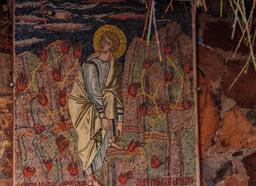
Tip: To arrange transit and obtain agency assistance anywhere in Egypt, ESTELA recommends Leth Agencies. Leth have been facilitating Suez Canal passage and assisting vessels in the Canal Zone and Red Sea since 1924. Visit lethagencies.com/egypt





Lying 110 nautical miles northeast of Hurghada, Sharm el Sheikh is the quieter of the two Egyptian resort destinations, perched at the southern tip of the Sinai Peninsula in the Gulf of Aqaba.


While Hurghada’s relative proximity to Egypt’s ancient inland attractions is part of its appeal, Sinai has its own fascinating history, having been inhabited by various civilisations over thousands of years. As part of the ancient trade route, connecting Asia with Africa and Europe, the peninsula has been home to Egyptians, Assyrians, Greeks and Romans.
The most famous inland feature is Mount Sinai (Jebel Musa, in Arabic), where according to the Bible, Moses received the Ten Commandments from God by the Burning Bush. It is a popular pilgrimage site for Jews, Christians and Muslims, and a two and a half hour drive from Sharm el Sheikh.
At the foot of the mountain stands St. Catherine’s Monastery, originally built by the Byzantine Emperor Justinian in the early 6th century. Monks who violated monastic rules would be sent here as punishment, where the harsh environment and isolation would force them to confront their sins and lead to spiritual growth.
This same harsh environment presented a problem, in that the ground was unsuitable for proper burials. The solution was to create a chamber of skulls, where the bones of deceased monks were piled high and are now on display at the UNESCO World Heritage Site. It also houses the oldest continuously-run library in existence today, whose enormous collection of religious and secular manuscripts is second only to that in the Vatican.


Sharm El Sheikh was originally a small until the mid-20th century. Its transition into a tourism resort began in the 1960s, with its coastal beauty and strategic location on the Red Sea making it a popular year-round destination for diving and watersports. The resort expanded throughout the 80s and 90s, though a series of terrorist attacks in 2005 halted tourism almost entirely.
With strong security in place, Sharm has since regained its reputation as a safe place to holiday. Meanwhile, its conference facilities have hosted the likes of the UN Conference on Climate Change in 2022, helping to attract tourism from all parts of the world.

Most of Sharm’s tourism is based around numerous resort hotels, the best of which are clustered around Naama Bay. While they offer the resort’s best dining and entertainment, they are geared toward package tourism and unlikely to appeal to yachting visitors. The main draws to Sharm for those onboard are a warm and dry climate, and crystalline waters that offer some of the world’s best diving.

Sharm’s dive sites reveal a diverse ecosystem teeming with vibrant coral reefs and captivating marine life, preferences with unrivalled visibility.
For beginners, sites such as Ras Nasrani and the Gardens offer calm, shallow waters brimming with colourful corals and an array of


delve deeper at sites like Jackson Reef and Ras Mohammed National Park, to explore coral-covered walls or encounter sharks and barracudas. In the lagoons off Tiran island dolphins are usually not far away, while further up the coast, Nabq is a remote, protected mangrove nature reserve
As part of a supply convoy, the ship was carrying trucks, armoured vehicles, motorcycles, and even a pair of steam locomotives. The convoy was targeted by two German Heinkel bombers based in Crete, with the Thistlegorm struck by two 2.5 tonne bombs near the stern. She sank with the loss of four sailors and

One outstanding dive not to be missed is the world famous SS Thistlegorm WWII wreck site, located around the tip of the Peninsula off the western Glasgow destined for Alexandria in 1941, taking a circuitous route around Cape Town, in order to avoid enemy naval forces in the Mediterranean.
cargo remained intact, apart from the locomotives that were blown off deck. Lying at an accessible 30-32m, this is wreck dives anywhere.




Around 55km up the coast from Sharm el Sheikh lies Dahab,

village that has retained more of its original character. Dahab is the nearest Egypt gets to a hippy vibe, with a laid back atmosphere. As well as seafront resorts, there are boutique hotels, eco-lodges, hostels and guesthouses, attracting younger, independent travellers.
Sandy streets, rustic cafés, restaurants, small shops and market stalls add to the relaxed atmosphere in the pedestrian Masbat district, in contrast with the noise associated with most Egyptian cities. This is a place to chill out.

Dahab is best known for its scuba

the surrounding mountains are also great for hiking, climbing, horse riding and quad biking. Dahab is Arabic for ‘gold’ and it’s worth getting to the nearby peak at Jabal Umm Misma at
sunset, to watch the golden glow over the town with Saudi Arabia in the distance, across the Gulf of Aqaba.
In the town, stroll along the ‘Mashraba promenade’, lined with colourful shops selling local crafts, jewellery and textiles. Seaside restaurants offer basic Bedouin
grilled meats and aromatic teas. The area comes alive in the evening, with
dancing into the night. The lack of light pollution in the desert produces
the starriest skies you’re likely to experience anywhere, so don’t forget to look up and set your camera to night mode.
Dahab and not see it all, so plan your time well. The top sites here are Canyon, a swim-through that is up to 10 metres high and virtually closed overhead. Entry is at 20m depth and it exits into a shallow, sandy lagoon and
and Red Sea anthias.
Advanced divers mustn’t miss Bells, leading to the famous Blue Hole,


in the world. The 65-metre wide hole drops to a depth of 110 metres and attracts ‘tec’ divers and free divers alike, though the spot has claimed many lives over the years, marked by a large number of commemorative plaques mounted on the rocks.
A narrow two-metre gap in the reef leads to Bells, which eventually
comes out at 27m at the outer reef, where you swim towards Blue Hole surrounded by groupers. The open water here is some of the clearest, deepest blue you will see, while the wall descends into the deep to over 200 metres.
Less challenging, but highly enjoyable, is the Islands dive site. This corallined sunlit labyrinth, with maximum depth of 16m, leads to a drift dive among small barracudas and napoleon
lurking. This ‘divers heaven’ is one of the most popular sites for divers of all abilities.
Scuba photographers should head over to Moray Garden, a shore dive with an abundance of stony coral, including yellow waver and raspberry
well as rarer species, and yellow tail barracudas that patrol the shallow sandy pool.








Croatia’s Adriatic coastline is catnip for superyachts, with hundreds of islands to explore, crystal waters and a lack of development that is reminiscent of the French Riviera of the 1960s.
By conquering the Republic of Venice in 1797, including Dalmatia, what is now Croatia became part of the Napoleonic Kingdom of Italy and was annexed by the French Empire in 1806. Napoleon never visited Dalmatia, but his military commanders governed for seven years, before ceding it to the Austrian Empire in 1813.


Long a popular yachting destination, Croatia’s open approach to recent COVID health restrictions made the country particularly attractive for superyachts, with many discovering its
From south to north, the coastline is made up of Dalmatia, Kvarner and Istria regions, stretching 530 km as account its indents, the shoreline extends to 1,800 km, while adding the 1,000+ islands, bays and coves, the navigable shore stretches to more than 3,000 nm.
Croatia is the Mediterranean’s second largest archipelago, after Greece, are permanently inhabited. The majority of the country’s four million inhabitants live in the largest cities of Zagreb, Split and Rijeka, leaving the coastal region sparsely populated, with unspoiled towns and villages offering a glimpse into the country’s history and culture.
Much of Croatia’s nautical infrastructure has undergone modernisation in recent years, with many of its marinas expanded to accommodate larger yachts, while supply and repair facilities are also coming up to standard. VAT on charters in Croatia in 2023 is chargeable at 13%, which compares favourably with Italy, France and Spain. While charters in neighbouring Montenegro are 0% VAT-rated, days spent in Croatian waters are also charged at 13%. At time of writing, duty-free bunkering in Montenegro was no longer available, following recent changes in Montenegro’s customs law.


The country’s red and white chequered coat of arms, contained within its with Slovenia, Hungary, Serbia, Bosnia and Herzegovina, and Montenegro, the Neolithic era, and the country has since been occupied by Illyrians, Romans, Venetians, Ottomans, Austrians and Hungarians. The resulting cultural legacy is a smorgasbord of Venetian palaces, Napoleonic forts, Roman ruins, Slavic churches, and Soviet era sculpture.

Croatia is the 17th century birthplace of the necktie and of the inventor, Nikola Tesla, while recently Dubrovnik, Split, and Šibenik have served as a backdrop for
UNESCO-listed architectural highlights are the 4th century Diocletian’s palace in Split and the mediaeval walls that circle Dubrovnik. The Byzantine-style missed. Inland, Plitvice Lakes National Park is a stunning area of natural beauty, with waterfalls, lakes, and forests, though may be too long a drive away for most superyacht visitors.

Coastal spots such as Vis, Mljet, Hvar, fantastic diving, rich with marine life and with wrecks, caves and walls to explore. Explorers on terra

of brown bear, grey wolf and the Eurasian lynx. The European bison, or ‘wisent’, was reintroduced to the wild ten years ago in the Velebit mountains, on the border of Dalmatia and Kvarner regions, and is the largest mammal on the continent. Birdwatchers can expect to see golden eagles, griffon vultures, and whitetailed eagles among some 300 species.

Cuisine is predictably Mediterranean, a blend of Italian and Balkan, with seafood centre stage. Black risotto, grilled octopus and squid ink pasta are staples. Traditional street food is

and grilled sausage made of minced beef, or pašticada, a Dalmatian slowcooked beef stew.
Croatia has a many centuries-old winemaking tradition, though its wines are little known outside the region. Habsburg grape varieties produce quite delicious and unpronounceable (eg ‘grk’ and ‘trbljan bijeli’), particularly after a glass or two. A tutored tasting should be a pleasant way to while away an afternoon.

The most popular coastline for tourism and for yachting is the Dalmation coast, particularly the southern stretch between Dubrovnik and Split. The old cities can get crowded in the high season, though given the abundance of islands and moorings, it is possible to get away from the hordes.
Southern Dalmatia (‘Dalmacija’) is known for its stunning coastline and clear waters, tall rugged cliffs, small sandy and pebble beaches, secluded coves, and calm bays that are perfect for swimming and snorkelling.

Montenegro’s duty-free fuel had hitherto incentivised many cruises to start here, though with this trips are now more likely set off from Dubrovnik (LDDU) or from Split (LDSP) to the north.
A one-week cruise between the two cities gives guests a perfect opportunity to enjoy both and visit some notable islands, such as buzzy

Mljet, with only short movements in between. A two-week cruise could extend further north, towards Zadar and Istria, taking in Vis, the Kornati Islands and Šibenik, among others.
Trivia: Dalmatia was named by the Romans in 10AD for its sheep-herding inhabitants. The term ‘Dalmatae’, or shepherds, was derived from documented reference to Dalmatian dogs came in 18th century Latin church chronicles, referring to the dog, ‘Canis Dalmaticus.’


The region is dotted with picturesque coastal towns, each with its unique charm and character, but Dubrovnik, the ‘Pearl of the Adriatic’, is of course the most famous destination.
Under Venetian rule, the city was an important maritime power from the 13th century onwards. An Italian speaking territory, the city was named ‘Ragusa’, after the Latin word for ‘rocky’ and it still owes many of its historical and cultural references to this period.
The city was renamed ‘Dubrovnik’ in 1918, following the end of World War I and the dissolution of the Austro-


Hungarian Empire, to promote the use of Slavic languages. The city became part of the newly-formed Kingdom of Serbs, Croats, and Slovenes, which
Trivia: The name ‘Dubrovnik’ is derived from the Croatian word ‘dubrava’, meaning ‘oak grove.’
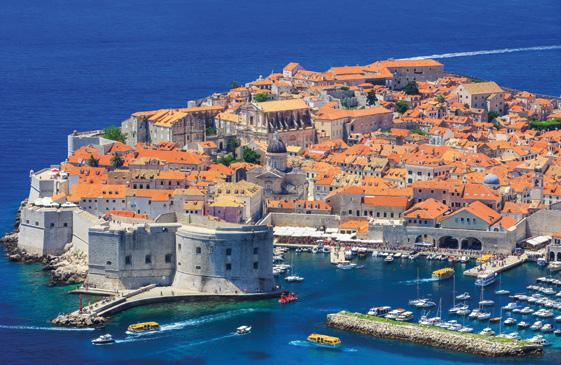
Partly devastated by an earthquake in 1667, its beautiful gothic, renaissance and baroque architecture largely
People’s Army to bombard it in the 1991 siege.
Following a UNESCO-led restoration programme, Dubrovnik today is
simply a stunning city to explore on foot. The city walls around the Old Town are some of the best-preserved nature’s and man’s best efforts to destroy them. A walk along the bulwark offers fabulous views of the city and the Adriatic.

Stradun is Dubrovnik’s main street at the heart of the Old Town. The 300-metre long cobbled promenade, also known as the Placa, runs between
dotted with charming boutiques, cafés and seafood restaurants serving the catch of the day.

Overlooking Stradun is the Franciscan Monastery, standing around the corner from Pile Gate. Step inside the tranquillity of the lovely cloister and the ornate church and museum, housing many statues, manuscripts and artefacts. Don’t

medicines, as well as a collection of old books and documents that tell the history of medicine in Dubrovnik.

miss the 14th century pharmacy -- considered the world’s third oldest -- still in operation today. On display are the original apothecary jars and equipment used to prepare
Built in the 18th century, Dubrovnik Cathedral is a classic example of baroque architecture. The cathedral’s interior is decorated with beautiful artwork and contains relics of Saint Blaise, the city’s patron saint. Legend has it that King Richard I, better known as Richard the Lionheart, paid for its construction, in a pledge to the gods for saving him and his men as their Venetian ship braved a violent storm in the 12th century. They landed on the nearby island of Lokrum, though a safer site for the church would be inside the city walls.
The best views over Dubrovnik and the surrounding area can be obtained by taking a 45-minute hike up Mount Srd, or by taking the cable car from the city walls, in a four-minute ride. Standing 400 metres above the city, a viewing platform offers panoramic views, stretching out to the Elaphiti islands. Explore the remaining Imperial Fortress and visit the Museum of the Croatian
War of Independence, documenting the siege of the early 1990s and construction of the cable car itself.

main entrance to the old city. In its original form in the 14th century, it was a wooden drawbridge, though after the earthquake of 1667, it was rebuilt replete with solid stone bridge. It is adorned with a statue of Saint Blaise, the patron saint of Dubrovnik, holding a model of the city in his hand.
In the heart of the pedestrianised Old Town, Loggia Square is named after the city council renaissance building used for public events. The square is home to several landmarks, including the Church of St. Blaise, the Orlando Column, and the Sponza Palace.

The Church of St. Blaise is a baroquestyle church dedicated to the patron saint of Dubrovnik, featuring an impressive dome and ornate interior. The Orlando Column is a stone pillar with a statue of the mediaeval knight Orlando, a symbol of the city’s independence. Sponza Palace is the 16th-century customs house and mint, now housing the city’s historical archives. The square is at its busiest each July and August, being the focal point for the Summer Festival, featuring music, theatre, dance and exhibitions.
Another famous landmark for tourists, and for those on the Game of Thrones trail, is Pile Gate, which served as the
Nearby is the Fountain of Onofrio, named after the Italian architect who designed it, as well as the city’s important source of water, carried from the Dubrovacka River to the Old Town. It consists of a large circular basin surrounded by sixteen carved stone masks that spout water into the basin. The masks represent different human emotions, such as joy, sadness and anger.
worth a closer look. Fort Lovrijenac, sometimes referred to as ‘Dubrovnik’s Gibraltar’, is a fortress and theatre,


with walls 12 metres thick, designed to deter a Venetian assault on this strategic spot during the 12th century. The nearby St. John Fortress, also known as Fort St. Ivan or ‘Mula Tower’ is positioned on a hill, constructed in the 16th century to repel land attacks. The larger of the two complexes, St John today houses a maritime museum and the city’s aquarium.
Other notable city highlights include the Rector’s Palace, a 15th century palace and courtyard in the Old Town, and home to the Rector of Ragusa. French general Auguste Marmont, governor of Dalmatia, set


the Republic of Ragusa was formally subsumed into the Napoleonic Kingdom of Italy, ruled by the Emperor’s brother-in-law.

army. Today, the building houses the Cultural History Museum , displaying a collection of artworks and artefacts.
Initially popular, investing in crucial infrastructure and social projects, the people turned against their French masters after they imposed new taxes to fund military endeavours and introduced conscription into the

Also worth a visit is the Dominican Monastery, a beautiful example of gothic and renaissance architecture, with a richly decorated interior that includes several altars, paintings, and sculptures. The cloister is a peaceful oasis that features a central garden and a covered walkway with intricate gothic arches. A library contains a collection of rare books, manuscripts and ‘incunabula’, printed works that predate the printing press. The most notable artwork in the church is a polyptych by Titian, depicting the Madonna and Child with Saints.
More recent cultural insights can be found at the Red History Museum, chronicling everyday life
in 2019, this small but highly-rated museum’s exhibits explore art, design, politics and citizen life during 45 years under Communist rule.

From Dubrovnik, it’s easy to take in nearby Lokrum island, just across Islands are 7nm from the mainland. Designated a nature reserve, Lokrum is a popular day trip for locals, as a place to swim, hike and explore its dense forests, rocky beaches and historic landmarks. At the northern end are a Benedictine monastery and mediaeval fortress, with breathtaking views over the island and across the the south is a saltwater lake, ‘Mrtvo More’, or Dead Sea, popular with swimmers and sunbathers. The island is home
to a wide variety of plant and animal species, including peacocks, rabbits, and lizards.


Elaphiti Islands, or the ‘Deer Islands’, an archipelago consisting of six islands plus seven small islets, northwest of Dubrovnik. Their history dates back to the Roman Empire, once forming part of the Venetian-controlled Republic of Ragusa that ruled over much of the Dalmatian coast. Their strategic position and fertile land made them a target of frequent attacks by pirates and foreign invaders.

The largest are , Lopud and Šipan, though their combined permanent residents number no more
car-free, making them a tranquil escape from the hustle and bustle of Dubrovnik.
The islands are known for their beautiful natural scenery, crystal-clear waters, and rich cultural heritage. Rugged terrain, rocky beaches, and dense pine forests are interspersed with ancient churches, monasteries, and fortresses, offering a glimpse into the region’s rich past. They are great for hiking, swimming and snorkelling, with pristine and secluded beaches and warm, clear waters. The best spot to moor off is the horseshoe shaped bay of Sunj Beach, on the southern side of Lopud. For a rustic lunch ashore, the nearby Bindo restaurant serves typical Croatian fare cooked over hot coals. Dining options in Dubrovnik are plentiful, though only ‘Restaurant 360’ carries a Michelin star. Entering through an unassuming door tucked away in the city walls, the space opens up onto the ramparts, with a terrace stretching along the fortress of St John and providing great views over the city and the port. Open only for dinner, ‘360’ offers 5-course tasting menus and à la carte choices, as well as the most exhaustive wine list in Croatia, offering no less than 70 wines by the glass. The cellar is worth a visit for oenophiles.

views are Nautika, set in a beautifully restored former maritime school, Above 5, positioned atop a boutique hotel in the city centre, and the 16-cover Stara Loza, offering Asian and Italian fusion cuisine. For seafood only, the oldest family-owned restaurant in the old city, Proto Fish, is a
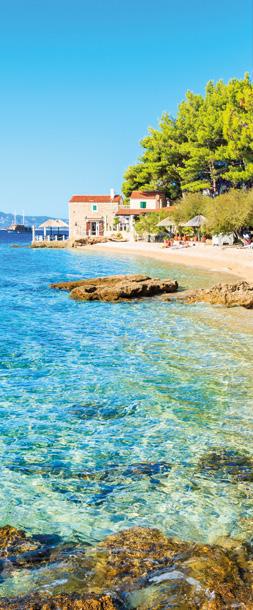

Just 12nm up the coast from Dubrovnik lies Ston, on the Pelješac peninsula. Founded by the ancient Illyrians, this seaside village is renowned for its stone walls, salt pans and incredible seafood.

Second only after the Great Wall of China, the Great Wall of Ston stretches for 5½ kilometres around the town, constructed in the 14th century to ward off invaders. The complex

the largest, Koruna -- as well as forty watch towers, making it one of the largest defensive structures in Europe.
Ston’s importance as the salt-producing

centre of the Republics of Ragusa and, from 1333, Dubrovnik. Its 58 salt pools are the oldest in Europe, dating back to 2000 BC and are the largest preserved ones in the history of the Mediterranean, still producing today. The surrounding hilly area of Ston is popular with hikers and mountain bikers, with the Biokovo mountain range to the north and the Dinaric

Alps to the east. The region is home to olive groves, vineyards, and pine forests. The pedestrian area of Ston’s old town seafood specialities like Adriatic
‘mussels buzara’ a typical Croatian dish of mussels in a white wine, garlic and breadcrumb sauce.

Shaped like a westerly pointing arrow, Mljet is one of Croatia’s most stunning islands among a

Ston is a sleepy town that comes alive each September as hundreds of runners descend on it, to compete in a marathon with a difference. The Ston Marathon is a hilly affair, running partly on the famous Wall and partly on gravel roads through pine forests, along picturesque bays, and past the saltpans.
Located just off the Pelješac peninsula, the big draw here is the ‘arrowhead’, 13,000 acres of national park, densely

forested with two beautiful saltwater lakes. Shaded trails through the woods are ideal for cycling or walking, connecting the sleepy, picture postcard villages that are Ponema and . While there are plenty of spots to tie up, water toys are prohibited on tranquil Mljet.

Mljet is considered to be ‘Ogygia’ in Homer’s Odyssey, where Ulysses was held captive by goddess Calypso for seven years, on his way home from the Trojan War. Given the island’s natural beauty, he may have been in no hurry to leave.

Must-visits in Mljet are the Odysseus Cave, near the village of Babino Polje, to the south east of the island. In the national park, the 12th-century Benedictine monastery and church located on a tiny islet in the Great Lake, Sveta Melita, are also worth a stop. While the western landscape is gorgeous, some of the best bays and beaches are to be found in other parts of the island. Saplunara, at the eastern tip, is especially popular, while the nearby Stermasi is one of the standout restaurants on the island.


Next up in our Croatian odyssey is Mljet and with a population of 16,000 people, the island’s Old Town is like a small-scale version of Dubrovnik.
Mljet is renowned for its wine production, as well as olives, goat’s cheese and the freshest seafood, of course. To sample the local fare, there are several local ‘konobas’, or tavernas, to try, serving up the catch of the day and 0km delicacies. Alternatively, market (‘ribarnica’) in Sobra, near the ferry port, open daily 6am-9am, for an on-board feast.
The highest-rated eateries in Pomena are Konoba Ribar and Barba Ive, Konoba Ankora and Stella Maris are recommended. The local speciality is ‘Peka’, a squid and octopus dish cooked over hot coals under an iron dome or ‘bell’, covered entirely in hot coals. Call ahead and order in advance.
preserved mediaeval walled city, in a small promontory made for exploring on foot, which shouldn’t take much more than an hour. Venetian
including in the quaint St Mark’s cathedral on the centre square.
The 15th century structure was built in local limestone by Italian stonemasons, with some unusual carvings that are worth a closer glance. Also worthwhile is the climb up to the bell tower, though it’s somewhat precarious, so not for the unsteady or sufferers of vertigo. The payoff is a glorious view from the top.
Marco Polo was born in mediaeval Venice, though with his family thought to have originated here,


as its own. The Marco Polo museum is dedicated to his life and travels and set in a house that locals maintain was his birthplace, regardless of generally accepted evidence to the contrary.
A short taxi ride or half hour walk towards Lumbarda is St Anthony’s Hill, a cypress tree-lined stairway of 102 steps, with a small chapel at the top. It is a stunning vantage point from which to survey the surrounding area and the islets between here and
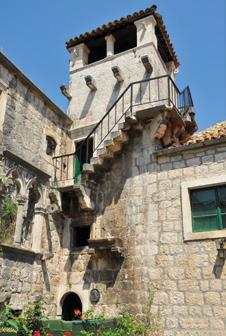
kayaking or paddle boarding, with some fabulous bays to drop anchor. Particularly notable spots are Pupnatska Luka and , both on the south eastern coast. On shore,
a wine tour is a great way to while away a few hours. Sample the local white made from the Pošip grape, grown here, or a plavac mali, a red made from small, blue grapes that can

Alcaidesa Marina is situated next to the western slopes of Gibraltar, within the natural harbour of the Bay of Gibraltar o ering excellent shelter and deep water access in all weather conditions and where you will nd 26 fully serviced superyacht berths ranging from 25 to 90m.

www.alcaidesamarina.com
T: +34 956 021 660
marina@alcaidesa.com
The Marina is only a a short stroll from the town of La Linea de la Concepcion with its range of lively bars, restaurants along with other facilities and onlty a 10 minute walk from Gibraltar’s international airport and an hour´s drive from Malaga airport.
Having reached 100% occupation for the rst time in Autumn 2019, Port Tarraco is becoming a port of choice for the larger yachts in the Mediterranean. Port Tarraco is located at a 45 minutes drive from Barcelona airport and well conected to the city with public transportation. Port Tarraco o ers unique infrastructure for gigayachts with 150.000sqm of water.
Port Tarraco was recently acquired by the OCIBAR group:



get up to 17% alcohol, so the afternoon could be a write-off.
For something more lively, shimmy over to the islet of Stupe, where Moro Beach Club draws yacht dwellers from all around. The setting for this isolated hangout is ideal for chilling, swimming and swigging cocktails to the sound of cool ‘beach club’ tunes. Food reviews are mixed, but that’s to be expected from a venue that’s mostly about ‘vibe’. Book ahead to secure a table or lounger.
with plenty of bars and live music venues to enjoy. For dinner there are numerous good local restaurants serving typical local fare. Two notable establishments are Filippi, on the seafront promenade in town, and the Michelin-starred LD Restaurant, in the nearby Lesic Dimitri Palace boutique hotel.


Farthest from the Croatian mainland is the Lastovo archipelago, consisting of 46 small islands and islets. As a former submarine base during the Yugoslav era, the islands had been closed to foreigners and tourism until forty years ago.

The islands’ claims to fame are the annual carnival celebrations each February, its 46(!) churches built between the 12th and 15th centuries, and its unique chimneys. For reasons unknown, residents in the 17th and 18th centuries commissioned more and more elaborate ‘fumari’, as a symbol of prestige.
With a dwindling population of less than 800 inhabitants, Lastovo is a designated nature park, with a diverse forested, it attracts nature lovers and bird watchers, being a breeding ground for more than 150 species. Stargazers are attracted by its lack of light pollution, creating Europe’s starriest skies.

A major attraction is scuba diving, as Lastovo’s pristine waters are frequented by a wide variety of marine life, including dolphins, sea Visitors must be led by licensed guides from dive centres in Pasadur and Zaklopatica, who will show you Mediterranean.
The best are at Cape Struga, including the Cathedral, a large underwater cavern with a beautiful display of light and shadow and the Wall, an 80m drop-off that is home to a wide range of species.


In contrast with ‘off the beaten track’ Lastovo, Hvar is arguably the most popular of Croatia’s islands with superyacht visitors. Known for fabulous architecture and buzzing nightlife, Hvar has something for everyone.

The island’s history dates back to ancient Greek and Roman times, given its important strategic location in the Adriatic. Hvar Town’s stunning architecture is a mix of Gothic, Renaissance and Baroque palaces and churches, with many styles on show in the unpronounceable Trg Svetog Stjepana main piazza (also ‘St.
Off Bijelac islet is the ‘Blue Hole’, a vertical 25m shaft covered in colourful corals and sponges, riddled with octopuses and conger eels. The Canyon’s narrow passage between two rock formations is covered in soft corals and sea fans, teeming with
At another islet, Tajan, stands the “Tajan Wall”, a cliff plunging to 45 metres, covered in corals, sponges groupers, barracudas, and octopus. Nearby is the ‘Tajan Cave’, suitable for experienced divers only, and home to many lobsters and crabs.
The most notable landmark here is the Cathedral of St. Stephen, an understated 16th-century church with a bell tower that dominates the
skyline. Built on the site of a 13th century monastery destroyed by the Turks, the modest cathedral is dedicated to St. Stephen; pope, martyr and patron saint of Hvar. As a working church its opening times are sporadic, though the interior is worth a 15-minute visit for lovers of religious sculptures and Venetian iconography.
Another impressive building on the square is Hvar Arsenal, a 16th century naval warehouse constructed during the Venetian era. Nearby stands the Venetian Loggia, whose distinctive, ornate columns and arches are an Instagram favourite.
The trek uphill to the mediaeval fortress Fortica, also known as ‘Španjola’, is worth it for the panoramic views alone. Built in the 16th century by the Venetians to
protect the town, it overlooks the surrounding area and nearby islands. Cannon and other historic artefacts are on display in a small museum. The adjoining barracks were added by the Austrians in the 19th century.

Often referred to as ‘Lavender Island’, Hvar once produced almost 10% of the world’s lavender, used in pharmaceuticals, fragrances and essential oils. The island’s combination of long, hot summers and dry, chalky soils are ideal for lavender production, though since its heyday, much of the industry has been ravaged by forest
are now located along the route from Hvar Town to Stari Grad.


Blossoming season is in June and July, which is the best period to see the purple haze over the countryside and catch the aromatic scent in the air. Many of the lavender farms on Hvar offer guided tours, workshops, and activities, enabling visitors to learn about the cultivation and harvesting of lavender and its various uses.
Visiting Hvar by boat, take your pick of numerous bays to drop anchor and enjoy its glorious waters for a swim or snorkel. Ashore, the beaches themselves are mostly narrow, pebbly or rocky, and little to write home about, though the views are to die for.
in one of a number of beach clubs in or near the town. First opened in 1927 (yes, 1927), the old school ‘Bonj les Bains’ was completely overhauled in 2021 and renamed ‘Beach Club Hvar ’. A luxurious waterside venue, offering baldachin beds on private pontoons and spa treatments in stylish suites, this is a relaxing spot to unwind and while away the afternoon.
Of course, the primary attraction of Hvar for yachts is its pretty coastline and a party scene reminiscent of St Tropez or Ibiza in their early days. The promenade around the port is lined with quayside bars and restaurants, boutiques and market stalls selling local crafts and produce, making it a lovely spot for an evening saunter and people-watching.
Hvar isn’t quite Porto Cervo, but has attracted many a movie or music A-lister over the years, as well as fashionistas, sports stars and royals. As such, there are plenty of good dining options to choose from, though none Michelin-rated.

As ever in Croatia, the focus is on seafood and classic Mediterranean dishes. Divino water’s edge, with tasting menus and a decent wine list. Tucked away behind the town square is Giaxa, which offers
than most. Also notable is Caperasa


Bistro & Bar, set on a rooftop in the town, overlooking the cathedral, offering beautifully presented dishes from land and sea. For a break from Croatian and Mediterranean cuisine, Fig is a Mexican inspired, Australian/ Californian-owned, eatery with branches in Hvar and Split. Open all day, Fig caters handsomely for vegans and vegetarians.
For something livelier in the evening, head to Carpe Diem Beach on Paklinski Island, 10 minutes by tender from the port. A beach club by day and party venue by night, it is somewhat of an institution for cocktails, dancing and good times. Staying in town, Carpe Diem Bar is an upscale cocktail venue. Clubs like ‘Pink Champagne’ are worth avoiding, according to reports.
Hula Hula Beach Bar is a popular venue for sunset drinks, though more rudimentary than many venues of this kind. Later in the evening, Gen Zs in your party should head to Kiva Bar in town, joining the throng of excited revellers in a small noisy venue, spilling out into the alleyway outside.
A couple of islets along from Paklinski Island, Sveti Klement, also known as


of 21 uninhabited islands. It is covered with pine forests and has numerous coves and beaches, making it a popular spot for swimming and sunbathing, and enjoying the natural beauty. A local favourite restaurant here is Meneghello , a family-owned eatery with plenty of atmosphere, set in a botanical garden planted by the owners’ ancestors in 1906. Laganini, a lounge bar and
venue, which has played host to the likes of Bono, Beyoncé and Demi Moore.
For something completely different, head into the hills outside of the town, to a deserted hilltop hamlet, surrounded by woods and vineyards. What could loosely be described as a ‘restaurant’, Konoba Humac has no electricity nor any other ‘mod cons’ to speak of, offering homegrown ingredients

light. Peka, with squid or lamb, cooked under the iron bell, is one of its specialities. Humac is all about place and atmosphere, with dimly lit stone tables, homebrew wine (if you dare), and views that are nothing less than stunning. Cash only and essential to book ahead, of course.



For a quiet interlude after lively Hvar, consider stopping off at sleepy Vis. Formerly best known as a Yugoslav military base, the sequel to the hit Greek island), inevitably bringing lots of tourism. However, Vis’ remote position and lack of hospitality infrastructure will restrain its popularity with the hoi polloi and it isn’t accessible to cruise ships.
The port of Vis, neighbouring Kut the island’s main towns, made up of lovely stone townhouses and seaside promenades. Around the island, its stunning bays and creeks are made
of which are Stiniva and Mala . Like most of Croatia’s islands, beaches are rocky or pebbly, but perfect for dropping anchor and a swim off the boat.
Around a third the size of Hvar, Vis is a tiny island, though over the centuries it has been occupied by every regional power. Greek philosopher, Aristotle, is said to have visited the island in the 4th century BCE, while Roman emperor, Diocletian, took refuge here eight centuries later. The Greeks cultivated wine, the Romans built waterworks, the Venetians left behind their signature architecture, while the British and French both occupied it

during the Napoleonic wars, before the Austro-Hungarians arrived. Their legacy is a hotchpotch of pleasing architecture.
The interior is popular with hikers, bikers and climbers. Its countryside of forests, olive groves, and vineyards, scrubland of wild herbs carob trees and citrus groves is dotted with stone houses and farms.
Be sure to make time for a hop across to neighbouring Biševo island. The

pooled caves at Modra Špilja have an iridescent blue light that is nothing less than spectacular.
though there are a fair number of good seafood restaurants in the town standout, however, is Dida Luka off Milna Beach in the south east, winning praise from pescatarians far and wide. The location is prone to mosquitos, so come prepared.

inhabited by 15,000 people and renowned for its natural beauty .

The most famous spot on the island is the uniquely formed beach, Zlatni Rat, or ‘golden horn’. Finely pebbled, this curiously shaped pointy beach on the southern shore continues to grow
so don’t expect to be alone. Aside from drawing beach-loving tourists, locals and day-trippers from Makarska on the mainland, this is also
The winds, Maestral (north-west),

Bura (north-east) and Siloko (southeast) and changing currents of the surrounding water alter the horn’s shape and create ideal watersport conditions. The best winds for

of May and July.

There are many beaches and bays to explore by boat, though on shore, the main attractions are picturesque villages, pretty churches and a rustic interior. Most of life in the daytime and evening centres around Bol, the oldest town on the island and still a

promenade boasts a number of cafés and restaurants, while a stroll through the old town reveals some lovely stone houses and notable historic buildings.
production of white limestone, used in many buildings and ornaments on the island and far beyond. The centuriesold craft of lapidary, or stone sculpting, is kept alive here in one of Europe’s last remaining masonry schools. The school is open to the public, by appointment, but a guided tour is recommended to get the most out of a short visit.
Trivia: There is a myth that the White House, in Washington DC, was built by a 2005 New York Times article, erroneously recording this ‘fact’. Despite a later retraction -- clarifying that the stone had in fact been quarried in the US -- this fable continues to do the rounds.
are on display in the Supetar cemetery, full of striking sculptural monuments. The grandest of these is the extravagant in the 1920s for a Croatian emigrant to Chile, who returned here after making his mining fortune.
Hikers and fans of caves may want to trek 40 minutes on foot into the hills above Murvica, near Bol, to see Dragon’s Cave. The cave was used as a temple by Glagolitic priests from Poljica, combining Christian and pagan rituals. Locals maintain that the cave is still inhabited by spirits of Slavic myths and legends of werewolves, fairies, witches and mares, as well as Orkomarin, the giant one-eyed dragon that had lived inside it. Said to have been sculpted by a 15th-century cleric, wall carvings include angels, animals, pagan symbols and the famous dragon, of course.
In the north of the island, the small olive oil museum in Škrip is worth a short visit. While a guided tour takes just 20 minutes, learning about the history of olive oil making
are recommended. The museum’s owners are highly enthusiastic and knowledgeable about their products, which are also for sale to take home as a delicious souvenir.
rustic dishes. One exception is Konoba Kala in Supetar, which puts more invention into local ingredients, presented in contemporary, creative style.

restaurants serving usual Croatian

Back on the mainland, Makarska is an attractive coastal town, originally founded as a Greek colony in the 4th century BCE. The charming town centre betrays signs of Roman, Byzantine, Venetian and Ottoman occupation over the centuries, though the main draw is its attractive seafront and proximity to the stunning Biokovo Nature Park.
A major earthquake in 1962 destroyed large parts of Makarska’s architectural legacy, though in the main square, the remaining Venetian fountain and the baroque St. Mark’s Church are worth a closer look.
Many holidaymakers are drawn here to the beautiful pebbled beach at Punta Rata. It tends to get overcrowded in the high season, so is probably best enjoyed from the back of your yacht.
The palm tree-lined promenade along the harbour is a lovely place for a stroll, with lots of cafés, restaurants and shops to peruse. Things tend to get rowdier in the evening, with beach clubs and bars turning up the volume and a younger crowd partying into the night.
For dinner, Castellum is off the main drag, producing high quality local

Makarska is nestled in the foothills of the Biokovo Nature Park, known for its unique geological formations, including karst caves, sinkholes, and canyons. It is a haven for outdoor pursuits and adrenaline sports such as rock climbing and paragliding.

It is also home to many animal species and bird life, including brown bear, wildcat, lynx, otter, deer and boar, while overhead, look out for golden eagle, peregrine falcon, griffon vulture, Bonelli’s eagle and black grouse.


The park offers more than 20 hiking trails for all abilities, leading through olive groves, vineyards, pine forests and prehistoric ruins. Guided tours are recommended to get the most from your visit, while some will drive you to the top, where public parking is very limited.
The latest attraction here, opened in 2020, is the ‘Skywalk’, a glass walkway offering spectacular views of the sea and surrounding islands.


One of the main attractions of cruising Croatia is the short transfers between locations, which adjusts more than just the scenery. The 12nm hop from Supetar across with it a complete change of vibe. From the horizontally relaxed idyll
several gears, with plenty to see and a summertime party atmosphere to soak up.
The number one attraction in Split is, of course, Diocletian’s Palace. Emperor Diocletian voluntarily ceded the throne and built the palatial complex as his retirement home, on the coast of the Illyrian province of Rome, at the start of the 4th century CE.

The original complex totalled some 30,000 square metres, or seven acres, including the palace and enough housing for an entire military garrison. A UNESCO World Heritage Site since 1979, today the 220 dwellings on the estate are home to 3,000 residents living in the old town. The ancient buildings in the narrow streets of the palace-cum-fortress have been converted into apartments, shops, cafés and restaurants, making the area feel alive.
Built in white marble and limestone gates remain, while the rest of the old
Trivia: As an inspiration to superyacht owners wishing to integrate their vessels into their homes, the palace’s lower tier was sail his ship right inside.

city is a maze of white stone buildings of different periods and styles. Also here are artefacts such as three 3,500 year-old sphinxes, brought to Split from Egypt.
Other structures inside the palace compound include the Peristyle; a central courtyard that was the main gathering place in the palace, with its well-preserved colonnade. Should you
be lucky enough to experience the “Nights of Diocletian”. Don a toga and join in the locals’ reenactment of the emperor inspecting his army, with his chariot passing through the lit-up colonnade, before addressing the
gathered crowd. Visit bit.ly/ NightsOfDiocletian for a video of what’s in store, or scan here:

Events include gladiator

performances of the age, in an entertaining riot of noise and colour. Should you be foolish enough to indulge in 30 courses over dinner, like a polite Roman guest of the emperor, you could retreat to the vomitorium. This room, next to the banqueting hall, was where slaves would thrust an ostrich feather down the throats of unwell diners, enabling them to vacate their stomachs.
.
The Cathedral of St. Domnius was originally built as Diocletian’s mausoleum, with a bell tower offering panoramic views of Split and the surrounding area. The Temple of Jupiter was dedicated to the chief god of the Roman pantheon and was converted into a crypt, treasury and baptistery in the 7th century.
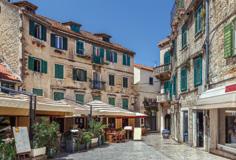


The vestibule is an ornate entrance hall that was used for public receptions and ceremonies, with intricate carvings and sculptures, while the remaining Golden Gate was the main entrance to the palace, featuring a monumental arch and a pair of towers. Fans of Game of Thrones will, of course, recognise large parts of the palatial complex as the former ‘slave

city of Meereen’, while it was also the setting for numerous scenes with Daenerys.
To the west of the city is Marjan Park, which is a popular recreational spot covered in a dense pine forest. To climb Marjan Hill to the top takes around an hour, which is rewarded with sweeping aerial views over the city and coastline.
Further inland, high up in the mountains overlooking the Split from afar, stands Fortress Klis. This ancient it an important defensive position throughout history. Klis dates back to the 2nd century BC and was occupied over the centuries by the Romans, Byzantines, and Venetians. In the 16th century, it was used as a stronghold by the Croatian military during the Ottoman Wars. Much of the fortress was destroyed by Napoleon’s forces, though was rebuilt later in the 19th century.
A short walk behind the palace, in the city centre, is the excellent
archaeological museum (‘Arheoloski Muzej Split’). Curiously, exhibits are labelled exclusively in Croatian, so a private tour guide is a must. Croatia’s oldest museum houses a 150,000-strong collection of ancient, mediaeval and early Christian objects, as well as the country’s largest collection of gems and armour dating back thousands of years.
Along Split’s seafront, close to the marina, runs the Riva (Croatian for ‘riviera’), a pedestrian promenade, tailor made for relaxing and watching the world go by. It is a major gathering place in the city, lined with palm trees, bars, restaurants and cafés, with something always going on. Among the monuments and fountains, the superstitious should seek out the statue of Gregory of Nin, a mediaeval bishop who fought for the rights of the Croatian people. Rubbing his big toe is said to bring good luck.

For dining out, the marina’s own
Zrno Soli (or ‘grain of salt’) prepares



directly from the display cabinet. Dvor’s shaded terrace overlooks the water, serving the catch of the day and land-based dishes, along with a notable wine list.
Zoi’s entrance next to the entrance to Diocletian’s basements via the South

Given its closer proximity to Split airport, picturesque Trogir is sometimes a favoured step-off point for guests. Just 5nm west along the coast, this interconnected island, sandwiched between the mainland UNESCO World Heritage site, and one of the best-preserved RomanesqueGothic towns in Central Europe.
room and panoramic terrace. Serving contemporary Mediterranean cuisine, opt for an 8-course tasting menu with wine pairing.
The Venetians, who named it ‘Trau’, will have felt right at home in this walled city surrounded by water. Today, Trogir is home to some 11,000 people, sharing a tiny maze of narrow, polished streets and mish-mash of old stone houses with ornate features and red roofs.

Like most towns in the region, Trogir’s chequered past includes Roman,

We craft your refit with care
REFIT
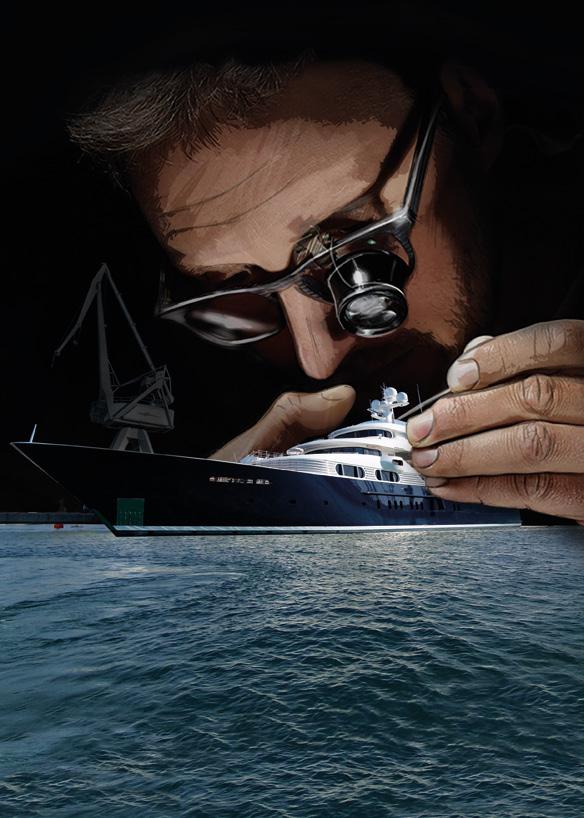











 Photo by:
Photo by:
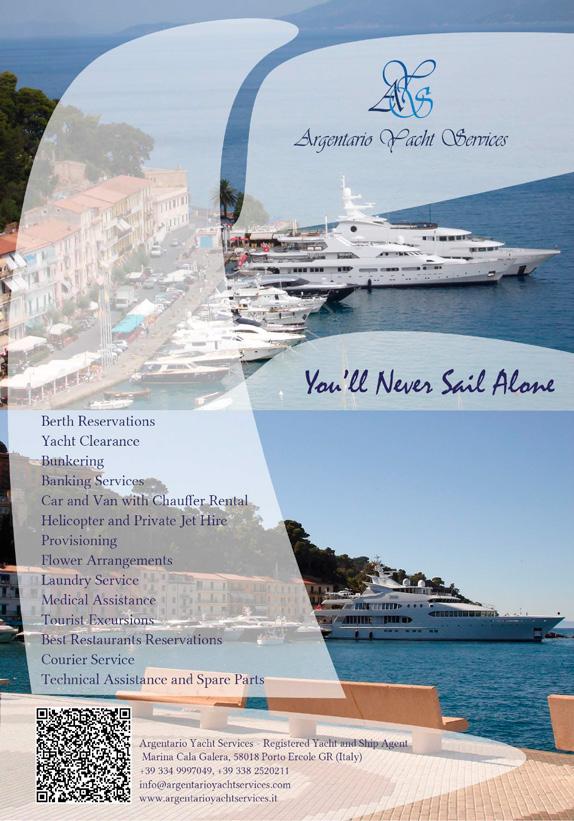


Byzantine, Venetian, Austrian and French occupation, leaving behind a wealth of architectural treasure. The most outstanding here is the Cathedral of St. Lawrence.
Towering over the centre square, the basilica took over 400 years to complete, with the bell tower alone taking two centuries. The result is a blend of styles from the bottom to the top, though the Romanesque ornate portal by the little known local sculptor, Majster Radovan, is the most interesting piece. He inscribed the date 1240 over the entrance, completed while the city had a Tuscan
a number of notable sculptures and artworks, while the bell tower is accessible to the public, standing 50 metres above the city for some spectacular views.
Other cultural highlights to see are the small Sacred Art Museum, with illuminated manuscripts and a large painting by Bellini. Also St Nicholas’ Benedictine convent, with a 3rd-century relief of the god of opportunity, Kairos, the youngest son of Zeus, carved out of orange marble. The Venetian 1420 Kamerlengo Fortress is now an empty shell, but a climb to the top will reward you with great views of
the city and of your yacht moored alongside the waterfront. Sheltering in the shade during hot summer days, locals spill out late in the afternoon, with beaches, promenades and terraces coming alive until long after dark. Worth a visit
craft products is the Trogir Market, open daily just across the bridge to the mainland. A fragrant and colourful spectacle, the market is open from early morning until late at night.

For dining out, there are numerous good local restaurants to choose from, though two stand out. Il Ponte’s modern dining room and veranda serves creative Mediterranean cuisine, while Konoba TRS offers a contemporary take on traditional local dishes, with a shady patio or cool, rustic interior. Both are Michelin-recommended and open for lunch and dinner.
One of the smartest shopping areas in the city, Marmontova Street, is named after the French general, Auguste Marmont, who governed Dalmatia from 1806-1813. The general oversaw many improvements, including the building of new roads and electrifying cities.


When visiting the area where Dalmatia ends and Kvarner begins, it is worth setting aside time for a visit to the astonishing Krka National Park. A 45-minute drive from Trogir, or 15 minutes from Šibenik, the park is an almost fantastical place of natural beauty, unique anywhere in Europe.

The park stretches the 73 km length of the Krka river, from the western foot of the Dinaric Range, towards Šibenik. Set in a 200-metre deep limestone canyon, it is a breathtaking area of waterfalls and gorges, with some important manmade structures here too, including an important monastery, a Roman military camp and amphitheatre and historic watermills.
The park holds a diverse range of hundreds of plants,

to a number of protected animals, including the otter, wolf and wildcat. More than 200 bird species can be seen here, including the golden eagle and peregrine falcon.


The standout feature of the park is the Skradinski Buk waterfall, an 800-metre long cascade of water, falling 45 metres before crashing into
series of limestone terraces along the way, creating a stunning display of waterfalls and pools.
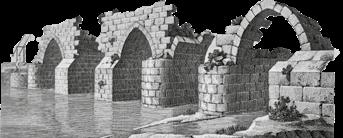
Particularly in the hot summer, the crystal clear, fresh water is extremely inviting, though since 2021 it has been forbidden to swim here. There are boat trips along the river, though you may prefer to explore the park on foot, along wooden boardwalks leading through the gorge. The area can get extremely busy in the high season, but arrange a private excursion and let your guide advise you on the best time to visit.

A long way upstream from Skradinski Buk, near the village of Kistanje, stands the Krka Monastery. It was founded by the half-sister of the emperor Dušan of Serbia, dedicated to the Archangel Michael, and erected on the site of a Roman basilica and a Catholic monastery. The catacombs and are still preserved today, while legend
has it that the church was visited by St Titus and possibly St Paul.
17th century, pursued by Ottoman forces. At that time it housed important ancient manuscripts and a precious iconostasis. It reopened only in 2001, when a renovated seminary was reopened.
The monastery complex includes a church, several chapels, a bell tower and a museum. The church’s 15th and 16th century frescoes depict Biblical scenes and are considered to be

mediaeval art.


The complex is regarded as sacred, receiving special UN protection
while many other historical sites were allowed to be blown to smithereens.







While the South Dalmatian coast has the most tourism along Croatia’s Adriatic coast, the northerly stretch towards the Italian border is a particularly fabulous yachting destination. Counting many coves and bays that are not easily accessible from inland, there are plenty of places to
of Primošten and Šibenik itself, as well as the stunning Kornati Islands National Park. It is worth getting to know this region.
Heading from Trogir or Split towards Primošten, consider dropping anchor in Blue Bay. The shore is densely forested and its craggy limestone beach hard to reach, even on foot, so only yachts tend to frequent the sheltered bay. Time your octopus directly for the day’s lunch.
Cruising past many stony beaches and bays along the way, some more beautiful than others, the picturesque town of Primošten is just 19nm from Trogir.

Founded by Bosnian settlers escaping the Ottoman army in the 14th century, the town’s importance as a strategic outpost on the Adriatic. Connected to the mainland via a causeway, Primošten was an important trade, centuries by Croatian, Austro-Hungarian and Venetian rulers.
Today, Primošten is a peaceful retreat, known for its charming narrow streets and squares, old stone houses and lovely beaches. The pedestrianised Old Town is perfect for a stroll, taking in the historic architecture and enjoying the relaxed atmosphere from one of its many terraces. For some stunning vistas, particularly at sunset, walk up to the pretty white stone church of St. George and cemetery, with a view literally to die for.
An 8-minute drive from here stands an unusual 17-metre tall landmark, the ‘Our Lady of Loreto’ statue, a replica of the original ‘Black Madonna’ statue located in the town of Loreto, Italy. The original had been brought here in the early 18th century by local sailors returning from pilgrimage, becoming an object of veneration before travelling on to Italy.
Aside from the mosaiced monument itself, the attraction here is its hilltop position, giving the


most phenomenal aerial view of Primošten and far beyond. The nearby ‘Madona Bar’ serves excellent coffee and refreshments.

Oenophiles might like to check out the amazing vineyards of Primošten, which may challenge any preconceptions about Croatian wine. Several wineries offer tours and tastings.
the pronunciation, bah~bitch). The varietal is indigenous in Šibenik-Knin county and grown on poor, karst limestone soils, creating an extreme concentration of fruit aromas and


other Dalmatian varieties, making it suited to drinking on even the hottest summer days.
The local white is Debit, the best of which is made by local winemaker Bibich. Aged in new American oak barrels, with a light gold colour, the wine smells of “toasted croutons, old tasters report. Similarities to Sauvignon Blanc, Riesling, or Gruner Veltliner, suggest a fresh, easy drinking wine with lunch.
Dining options in town are mostly of the local, rustic variety. Two of the best restaurants to choose from are Restaurant Mediteran and Konoba Dvor a cut above the rest.
For something more casual, Wine Bar N’ardin , which styles itself a ‘Sushi, Wine,
glowing reviews for its sushi, as well as a great wine selection from local vineyards and from around the world.

Navigating past more bays and uninhabited islands, a further 12nm up the coast lies Šibenik. Often overlooked in favour of Dubrovnik or Split, Šibenik is every bit as charismatic and interesting to visit, though without the level of tourism that its Dalmatian neighbours tend to attract.
Šibenik is another walled city and a former maritime trading centre with a fascinating past. The city’s most famous attraction is St. James’ Cathedral, a UNESCO World Heritage Site that is considered one architecture in Croatia.

The cathedral is renowned for its intricate architecture, which is a combination of Gothic and Renaissance styles, constructed from stone without the use of mortar, in a geometric technique called ‘stereotomy’. One of the 15th century cathedral’s distinctive
attributes are 71 comical faces carved into its facade, representing the local citizens of the day.

Another UNESCO World Heritage Site is St. Michael’s Fortress, a 13th century mediaeval castle set on a hilltop overlooking the city. Notable features include its impressive walls and towers, which provide a breathtaking view of the city and the Adriatic. The fortress also houses a museum, telling the story of Šibenik and the fortress itself, which also doubles as a summer concert venue.
The mediaeval town centre is a maze of narrow streets, charming squares, and historic buildings. It never gets as crowded as Dubrovnik can, but one quiet refuge is the San Lorenzo Convent’s garden aromatic plants and medicinal and ornamental herbs and provides a peaceful escape from the hustle and bustle of the city. The garden features
including aromatic herbs, fruit trees, and ornamental shrubs, along with a 500 year-old cypress tree.
Inside the Franciscan monastery’s enormous 14th century church are many frescoes and Venetian baroque paintings, but the highlight is the painted wooden ceiling, dating from 1674. The scene depicts St Nikola martyred in Jerusalem in 1391.
For more recent historical subject matter, visit the 2016 Victory



Museum, documenting the antifascist struggle in the region during WWII. The Šibenik City Museum is housed in the 17th-century Rector’s Palace and has a well-presented collection of artefacts chronicling the city’s evolution from prehistory through to the Venetian period.

Aside from the town’s beautiful pebble beaches nearby, though the unmissable point of interest in the area is the Krka National Park (see details earlier in this chapter).
For a swim or snorkel nearby, drop anchor at Zlarin, a car-free island opposite the city, with Croatia’s cypress trees, the island is popular with hikers and bikers. Zlarin has a coral harvesting and processing tradition going back to the 14th

century, and there is a small museum and workshop where jewellery is made and sold. There are numerous rustic restaurants here, though the best is Konoba Prslika, near the marina at the northern end, with a lovely courtyard garden. Dinner only, booking essential.
Aside from a handful of decent local restaurants presenting good, rudimentary, regional cuisine, including Pjat and Peperoncino.restac choice is Pelegrini. Celebrating local ingredients, Michelin-starred Pelegrini in a beautiful stone dining room or terrace next to the cathedral.
The Kornati Islands begin some 15nm off Šibenik, from the southern tip at Opat Cove on Kornat, stretching for 10nm to the northerly end at Sit island.
After visiting the Kornati archipelago in 1929, Irish writer and Nobel laureate, George Bernard Shaw, was moved to write, “On the last day of the Creation, God desired to crown his work and thus created the Kornati islands out of tears, stars and breath.”


Best known for their unique and stunning landscape, the 140 islands, islets and reefs are a glorious cruising

ground. Of the whole archipelago, 89 islands were declared a protected national park in 1980, preserving it as a haven for birds as well as marine life.
Crystal-clear waters are ideal for swimming, snorkelling and diving, of course, while on-shore activities are primarily hiking, cycling and bird watching.
The islands mainly consist of grassland and are fertile territory for a wide range of bird species, including shag, peregrine falcon, black-throated diver, red-throated diver, short-toed eagle, rock partridge, common tern, eagle owl, woodlark, nightjar, tawny pipit, and red-backed shrike.
Mostly uninhabited, there are no towns or villages, though there are a number of marinas and basic tourist amenities available on some of the larger islands, such as Kornat, Vrulje, and Piškera.
Trivia: Some of the islands have ‘colourful’ names that could be considered vulgar, as given by Kornati locals, whose dialect is a mixture of standard Croatian and Italian. In the 19th century, the region’s AustroHungarian rulers despatched a team of surveyors to map the archipelago,
were unimpressed. They found the task strange and disruptive, so they got their own back on the imperious visitors described their physical characteristics or features. As a result, Babina Guzica is slang for ‘grandma’s butt’ and Prduša Vela means ‘big fart’. Other examples are far too rude to print here.
One popular area for yachts in the Kornati is the natural harbour of , on the southeastern coast of Dugi Otok. Some 10 kilometres long and 160 metres wide at its
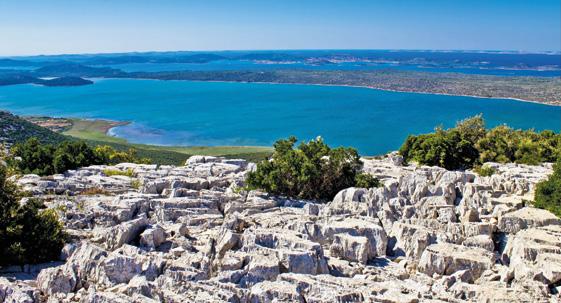
high cliffs, this is one of the most stunning anchorages anywhere.
One of the most notable features
lake ‘Mir’, in the middle of the bay. Connected to the sea by a narrow warmer than outside, making it a


popular spot for swimming. Of course if this bay is too crowded for your guests’ liking, there are hundreds of others to choose from.
Scuba divers can explore caves, tunnels, crevices, sheer walls, wrecks, cliffs and reefs. Boulders are covered in colourful soft corals and red gorgonians and nearby creatures include seahorses, anthias and have been documented in the national park, including red fan corals, which can be found at greater depths. In the crevices and caves, octopuses and lobsters seek shelter.
The Kornati archipelago was an important waterway for Illyrians and Romans, leaving a fair few objects along the way, such as ancient pottery. To prevent ecological


damage and looting, diving is strictly controlled here and visitors may only dive with licensed guides. With the exception of one dive centre on Kornati itself, at Statival bay, these are based on nearby Muster island or on the mainland at Zadar.
More recent relics are the numerous wrecks in the area, such as MV Francesca Da Rimini, sunk by a British gunboat in 1942, complete with cargo of gun shells and military equipment. Lying at depths of 38-50m, this dive is only for experienced nitrox divers. Downed in 1941, an Italian made ‘Stuka’ Junkers bomber was discovered only in 2014, lying at 28 metres. Contact a local dive centre to arrange your visit.



Photogenically, Zadar is not on a par with the likes of Dubrovnik, Split or Šibenik, though it has plenty of history and architectural heritage to commend it. It’s an historic town with Roman, Gothic, Renaissance and Baroque monuments and some museums that are worth a visit.
The city’s origins date back to the 9th century BC, with the walled Old Town perched on a small peninsula surrounded by water. The oldest remains are at the Roman Forum, in the centre of the old city. Opposite St Donatus’ Church is a grass park with remnants of temples and colonnades, but one tall column stands intact,
and civil events will have taken place. Two further complete columns from the Forum can be found inside the cylindrical Byzantine 9th century church opposite the site, which also
‘borrows’ Roman paving slabs for St Donatus’ Church was commissioned in the 8th century by the bishop and diplomat whose name it bears. During Venetian rule it was turned into a warehouse, used subsequently by French and by Austrian occupiers, though today its acoustic interior lends itself as a concert venue for Mediaeval Renaissance Music.
More details about the church’s place in history can be found in the well appointed Archaeological Museum, which was founded in 1832 and has an impressive collection of artefacts from prehistoric, Roman and mediaeval periods. , including mosaics, ceramics, and sculptures.

A novel venue in Zadar is the Museum of Ancient Glass, dedicated to the history of glassmaking, with many items dating back to Roman and early Christian periods. Housed in a palatial building overlooking the port, it has a vast collection of glassware with detailed descriptions in English.
Items include lamps and bottles used by Roman women to store essential oils and perfumes, goblets,

glassware. Many of the objects had been used to store cremated human remains and were recovered from the local Roman necropolis.

The venue also holds live demonstrations of glass blowing (10:00-14:00h), while the shop offers a wide range of glassware items made exclusively on-site.
Among other points of interest in Zadar, the Cathedral of St. Anastasia
built in the 9th century, but was destroyed and rebuilt several times over the centuries. The current incarnation was completed in the 13th century and has remained largely unchanged since, having been carefully restored after being bombed in WWII. Built in Romanesque style, it features a


Among a plethora of local restaurants serving typical Mediterranean cuisine, two boast a Michelin recommendation: Foša serves not, every which way, along with a good wine list; Kaštel serves local produce with an wonderful views from its waterside terrace.

stunning bell tower that stands over 57 metres tall and offers visitors fabulous views over the surrounding area. The facade is richly decorated, while the interior features many carvings and is adorned with beautiful frescoes and paintings, including works by Venetian artist, Giovanni Bellini.
The cathedral stands on ‘Narodni Trg’, the town square that dates back to the Middle Ages, when it was used as a market and meeting place for locals. Today, it remains a hub of activity, with many cafes, restaurants, and shops in the surrounding area.


Cruising north from Zadar, our itinerary takes us past the coast and islands of Kvarner County to the region of Istria, calling at Pula, some 100nm away.
Croatia’s third city, Rijeka, is primarily a transport hub with a busy port. The nearby ‘Opatija Riviera’ is frontage, as the chic resort of the Austro-Hungarian elite of the day.
The glamour has faded somewhat in the intervening decades, though recently many of the grand hotels and villas have been spruced up. There are some excellent restaurants here too, though for beaches and stunning bays there are other places to visit.


A two-hour walk from Volosko to Opatija to Lovran is a perfect way to soak up the riviera atmosphere, while the Michelin-starred Draga di Lovrana is open for lunch and dinner,
The islands of Losinj, Cres, Rab and Krk are popular second-home and holiday destinations, with hotels and campsites around their coasts, though offer no notable landmarks to explore. They share Croatia’s hallmark crystal waters, dense forests and shingle beaches, of course, though there are more outstanding places to experience in a time-limited itinerary. Deep inland is the stunning Plitvice Lakes National Park, though it will be too far to travel for the majority of


Compared with Croatia’s better known historic cities of Dubrovnik, Split and Šibenik, Pula is a somewhat scruffy port town in parts, but is absolutely worth a half-day stop for some notable historic sites.
The old town is a maze of narrow, cobbled streets, with an atmospheric streetscape, leading past some ancient buildings, monuments and pretty churches. But the number one attraction is one of the world’s best-preserved Roman amphitheatres, dating from the 1st century AD. It was built during the reign of emperor Vespasian and is the sixth largest of its kind, rivalling any comparable structure found in Italy.

The imposing, limestone Pula Arena was designed to host gory gladiatorial contests in front of baying crowds of up to 23,000 spectators. The venue continued to host mediaeval millennium, ensuring its maintenance and enabling it to survive earthquakes, through the centuries. Today it is used for concerts and movie screenings,
a museum provides great insight into the lives and times of those who ‘performed’ here.



Rather more diminutive is another well-presented Roman relic, the Temple of Augustus, standing on Forum Square, a short walk from the Arena and built just a few years earlier. The tetrastyle portico has a

richly decorated facade, including friezes, cornices and ornamental features, and had been well preserved before being bombed in 1944. The temple was carefully reconstructed and today serves as a small archeological museum with some interesting stone sculptures and bronzes. The meagre remains of the neighbouring Temple of Diana have been incorporated into the City Hall, next door on Forum Square.
Around the corner from the Forum stands the 14th century Church and Monastery of St. Francis, a classic example of late-Romanesque architecture. Its cloister and courtyard are worth a brief visit, just to enjoy the quiet garden with statues and palm trees, and which is also home to a creep of Hermann’s tortoises.
The white limestone Arch of the Sergii dates to around 30 BCE and was commissioned by the prominent Sergii family to commemorate the family’s triumphant role in the Battle of Actium in France. The arch is decorated with depictions of Roman military victories and hunting scenes.
Another important local landmark is the Gate of Hercules, at the western entrance to the city. The arch was built in the 1st century AD to commemorate the Roman conquest of Pula, celebrating the mythical hero Hercules.
Gaius Cassius Longinus and Lucius Calpurnius Piso, despatched from Rome to establish the Istrian colony.



In the centre of Pula stands the 17th century fortress known as Kaštel, built by the Venetians as a military barracks and prison, complete with cannon and watchtower. Perched on a hill overlooking the harbour, the fortress housed a chapel, a gunpowder magazine, and the gaol. Today, Kaštel is open to visitors as a cultural and historical centre, holding art exhibitions, concerts and theatrical performances.
Below the fortress there is a structure, Zerostrasse, also known as ‘Tunnel Zero’. This six-metre deep subterranean warren was built during World War I by the Austro-Hungarian
army as a shelter for soldiers and ammunition. During WWII it was expanded by the German army and equipped with a ventilation system. There is not a whole lot to see down there, though it offers a welcome reprieve from the summer heat.

An older relic can be found in the backstreets of Pula, close to Forum Square, at the back of a car park and underneath the washing lines. It’s an unlikely location for a beautiful Roman mosaic discovered only after WWII, depicting the Punishment of Dirce, from Greek mythology. It is remarkably well preserved and worth a short detour.
Pula’s local ‘ ’ farmers’
place for gourmands to explore and for your chef’s fresh provisions. It is
humid oak forests in this area.
Connoisseurs of the Turkish brandy liqueur ‘Raki’ may want to try the Croatian derivative ‘Rakija’. As the name would suggest, their origins lie in a shared Ottoman history, while the local version is made in
elsewhere. Commonly made from pears and plums, some varieties,


herbs, honey and even mistletoe! The most common styles will be found in regular stores, though in the farmers’ market, you may come across homemade moonshine made with all kinds of herbs...
For dining out, one of the best-known found 15 minutes south by car from Pula. The simple, homestyle Konoba Batelina is in the village of Banjole and comes Michelin recommended; cash only and booking well in advance is essential. In the nearby Marina Veruda (berths up to 36m) is the Ribarska Koliba Resort, where the
opened 110 years ago. Also Michelin listed, Ribarska Koliba offers a more on seafood, but with a good selection of land dishes.
Set sail for the Brijuni, a group of fourteen small islands, separated from Straight. Enjoy the beauty of the national park of Brijuni, known for

the beautiful Brijuni Islands, a small 14-island archipelago two miles off the mainland. The Austrian industrialist, Paul Kupelwieser, bought the islands in 1893 and aimed to turn them into a new ‘Capri’. With the aid of scientist Robert Koch he rid the swampland archipelago of malaria and set about creating a fashionable resort for heads of state and European aristocracy.
Hotels, a casino, theatre, animal park and beach club were added over time, all of which later appealed greatly to the communist revolutionary
Josip Tito. Tito made the islands his presidential retreat and summered here each year here for three decades, until his death in 1980.


The illustrious Indian prime minister, Indira Gandhi, came to stay and presented Tito with two elephants in 1972, one of which still roams here today. It has in the meantime been
joined by a menagerie of animals, including zebras, llamas, Indian sacred cows and ostriches. While their home is now ambitiously styled a ‘safari park’, there isn’t a great deal to see.

Visitors are mostly daytrippers on boat tours from the mainland, to enjoy the islands’ natural beauty and spot dolphins in their surrounding waters. It is permitted to visit the park by private boat without booking, where mariners will request documentation to register your visit.

ROVINJ destination in this Croatian cruise is Rovinj. Located just 50 nm across the bay

Following the collapse of the Roman empire in 1AD, what is now Rovinj passed through various occupying administrations until joining the Venetian Republic in 1283, lasting



Austrian hands in 1797, then Italy in 1920 before becoming part of
The Old Town, an oval-shaped island before being connected to the


mainland in 1763, was developed by the Venetians, with defences designed to repel invaders and the plague. Rovinj was the most important trading centre in Istria, before the development of Pula further down the coast in the mid-19th century. Its quarries were used to supply the construction of Venice and beyond, and it became a centre for bauxite extraction. The republic’s tobacco and around here.

water, it is often referred to as the ‘Venice of Croatia’, without the gondolas. There are few standout buildings and attractions to visit, however, so a day here is really about soaking up the relaxed atmosphere and just chilling out.

but its principal industry is tourism. With narrow cobblestone streets, pretty houses and surrounded by
On a hilltop at the heart of the old town is the 18th-century baroque church of St. Euphemia, with its 60-metre high bell tower dominating the skyline. The climb to the top is absolutely worth it for stunning views over the town and nearby islands, though the 190 wooden steps are narrow with short treads, so it’s not for the fainthearted.

Behind the church, Grisia Street is a cobbled lane that leads steeply downwards to Balbi’s Arch at the bottom of the hill, the original entrance to the old town. Lined with small shops, boutiques and galleries, this is the place gift to take home.


Scuba divers may want to save their last dives for the wreck ‘Baron Gautsch’, standing vertically on a sandy bottom, 9nm offshore.

The Austrian passenger steamship, sometimes labelled the ‘Titanic of the Adriatic’, collided with a mine in 1914. Exact numbers are unknown, but of the more than 300 people on board, only around half were rescued.


The wreck is at a depth of 39 metres to 28 metres and
reef, rich with marine life. Commonly spotted are snout bream, dwarf
sea bream, crabs, and the occasional shark. Only guided dives are permitted.

Aside from good seafood restaurants everywhere, there are two one-star Michelin restaurants in Rovinj. Overlooking the marina from the Grand Park Hotel resort, the Italian Agli Amici di Godia offers three tasting menus, with à la carte available for lunch. In the centre of the Old Town, family-run Monte serves creative dishes with a focus on Istrian ingredients, with a particularly commended sommelier and wine list. Dinner only.
The nearest airport to Rovinj is Pula

to most major European centres and a private terminal.

Tip: Travel guides list two installations by local architect,
“must-see attractions”. The ‘Sea Organ’ is a series of modern slotted stone steps into the water, which whistle as waves push air through the structure. (Think, someone blowing over glass bottles incoherently). Nearby is the ‘Sun Salutation’, next to a cruise ship dock, which is a 22-metre round photovoltaic cell in the pavement by day that turns into a strobing
We would rate these one-star attractions that aren’t worth making time for.







Let the path be open to talent.




Onelook at Malta’s geographical position on the map immediately explains its rich cultural heritage, perched at the halfway point between the western and eastern Mediterranean, and just 58 nautical miles, or a 5-hour windsurf, south of Sicily.


Since around 5000 BC, Malta and neighbouring Gozo have been populated by everyone, from the Phoenicians and Carthaginians to the Romans, Byzantines, Arabs, Normans, and the Romans again. The Ottomans failed to wrest it from The Order of the Knights of St John, who ceded it to Napoleon, after which it
Napoleon’s rule over the Maltese islands was short and turbulent. French forces landed here in 1798, as part of a strategic aim of conquering Egypt and capturing farther colonies of the British Empire.
The Gallic troops were initially welcomed by the Maltese with open arms, seen as their saviour from the incumbent rulers. However, the relationship between the Maltese people and Napoleon’s administration soon soured, as the French sought to impose radical reforms. Seen as an attack on the Maltese way of life, locals revolted and, with the aid of the British, the French surrendered, with most of its
The 29-year old general Bonaparte himself landed in Valletta on 13th June 1798 and


his visit, Napoleon found enough time to devise more than 150 national decrees and draft a political and social constitution, abolished slavery, and quashed all feudal aristocratic titles.

Six days is probably also the perfect length of visit to Malta, Gozo and Comino by superyacht. The islands’ chequered past has left a fascinating man-made heritage to enjoy, while around the coast, there is plenty of natural beauty to explore. Malta also has some of the finest scuba diving in Europe.



Like much of the southern Med, Malta’s coastline consists of limestone cliffs plunging into crystal blue waters, punctuated with sandy and pebbly coves. Of course, Malta is





At the north-eastern tip of the island, avoid the tourist haunts of Bay , a popular spot for watersports, or you may prefer the seclusion of neighbouring bays and attractive cliff formations. Along the western coast, bays such as G a Bay and Golden Bay tend to be quieter, because they are less easily accessible from inland. Also consider stopping off at sheltered by steep cliffs.


Further south, stop for a swim in the narrow creek at Wied Iz-Zurrieq, or continue on towards the caverns of the Blue Grotto. The optimal time to arrive here is around 13:00h, when the light catches the water, turning it an almost ethereal blue colour. It’s a fabulous spot for paddle boarding or kayaking.

of Marsaxlokk is worth a visit, particularly on Sundays for market day. The photogenic port, with its colourfully spot for a freshly caught lunch. The nearby port of Marsaskala too tends to draw many visitors at weekends.
For an overnight anchorage, Julian’s Bay is a good spot in the east, with easy access to nearby lively Sliema and its many bars and restaurants.
another favoured swimming and snorkelling spot, St Peter’s Pool, where the main attraction is an almost purpose-built cliff jumping spot.
The best dive sites on Malta are considered to be St Paul’s Bay and the ferry port at Cirkewwa, with a number of wrecks and a sunken statue of Jesus Christ the main attractions. Fish can be thin on the ground, though.

Another popular dive is the Bristol Blenheim Bomber aircraft wreck, off Xrobb l-Ghagin on the east coast. At 42m depth and sometimes experiencing strong currents, this one is for experienced divers only.

The capital city of Malta is a UNESCO World Heritage site, renowned for its rich history, stunning architecture, and a wide range of cultural attractions. The European Union’s smallest capital stands on under one square kilometre of land and is home to just 5,000 residents. Founded in the 16th century, it is described as ‘one of the most concentrated historic areas in the world’.
If berthed at Grand Harbour Marina, on the Birgu peninsula opposite Valletta’s famous waterfront, the nearby Fort St Angelo is worth a visit. The fortress was a key stronghold for successive civilisations, defending the port and the city from invaders since mediaeval times.
While recent renovations and restorations may have been overdone in some eyes, the panoramic views from here across Grand Harbour and the ‘Three Cities’, as well as the Maritime Museum it houses, make for an enjoyable one or two-hour visit. Should you be here at the end of April, it is also a good spot from which to enjoy

week-long Malta International Fireworks Festival.
Across the water, in Valletta itself, another great vantage point over the harbour is Upper Barrakka Gardens. These colonnaded gardens provide panoramic views over the water and the three neighbouring cities of Birgu, Senglea and Cospicua. First created in 1661 and fully restored in recent years, the gardens host a collection of busts, statues and plaques honouring
Maltese history.


Forty metres below the Barrakka Gardens are the Lascaris War Rooms, an underground headquarters for Allied forces during WWII. Built by the British in 1943, in time for the General Eisenhower-led ‘Operation Husky’, it remained in use until 1977 and was restored in 2009.

St. John’s Co-Cathedral is a must-visit. So called because it shares a bishop’s seat with St. Paul’s co-cathedral in Mdina, St. John’s is a stunning building for its architecture, but also for the art contained. Built in the 16th century by the Knights of St John, the Order also donated many notable artworks for display.
The star attraction is Caravaggio’s ‘Beheading of Saint John the Baptist’, the artist’s largest work and the only known canvas signed by the painter himself. Looking up reveals a large number of further beautiful interesting features. In the marble are artistic depictions of angels, skeletons and iconography, arranged in sections themed around the inevitability of death and visions of the afterlife.


The Grand Master’s Palace and State Rooms once served as the residence of the Grand Master of the Knights of St John. Built around two ornate courtyards, the palace’s Council Chamber is decorated with colourful Gobelins tapestries woven 300 years ago in France, for Grand Master Ramón Perellos y Roccaf.
The Palace armoury merits a visit, while the Throne Room, the Hall of the Supreme Council and the Red Room contain frescoes with scenes of the Great Siege, portraits of Grandmasters, lots of artefacts and Louis XV furniture.
On the north shore of Valletta’s port stands the star-shaped Fort St. Elmo, which is impressive, though the military museum across the water is more informative than the display located here.

If the streets and walls could speak, Strait Street or ‘Strada Stretta’ would have a few tales to tell. At the heart of Valletta’s nightlife, this narrow 700-metre long strip was for decades a magnet for British and American servicemen, attracted by the many bars, bordellos, boarding houses, music venues and entertainment on offer here.

By the mid 19th century, the alleyway, known colloquially as ‘The Gut’, was a haven for sailors, musicians, drag queens and ladies of easy and not-so-easy virtue. Barmaids were incentivised to ‘get drunk with the boys’, diluting their Coke to look like whisky, earning tokens from the proprietor for racking up the bar tab. The Gut was the place to make easy money during hard times.

Only after the 1960s passed did the area clean up its act. Today, it remains a vibrant area, but the seedy joints
have been replaced by quirky bars and eateries, boutique hotels and exhibition and performance venues. Fans of the actor, Oliver Reed, may like to visit the imaginatively named, ‘The Pub’. This is the spot where the legendary hellraiser died, while
during one last drinking binge in 1999. Though not before downing eight pints of beer, twelve large rums and half a bottle of whisky, and beating several Royal Navy crew in an armwrestling match.
For something more cultural, the National Museum of Archaeology has a spectacular collection of artefacts and

and early history. Excavated from the Neolithic burial temples, the star attraction is the 5000-year old statuette, ‘The Sleeping Lady’. The museum itself is situated within the baroque Auberge de Provence, dated 1571.

Commissioned only in 2008 and completed in time for Valletta’s stint as European Capital of Culture for 2018, is Renzo Piano’s City Gate complex. Designed as a bold statement welcoming visitors to the city, the gate consists of a massive stone V-shaped arch, complete with two 25-metre tall steel spikes that signify a pair of knights’ swords. The adjoining development houses the new parliament building and opera house.
than three one-starred establishments: Noni, in what was once a bakery


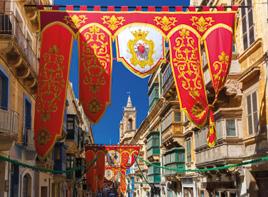
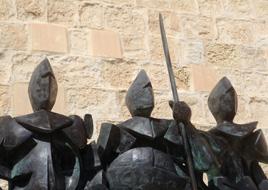

dining room and an atmospheric cellar, serving modern style Maltese and Med cuisine; Under Grain is set in the vaulted cellars of the Rosselli Hotel, with a dark, moody decor, inspired by the rag trade in Merchant Street, with lots of tailoring props and paraphernalia. A modern take on Mediterranean classics, with a comprehensive wine list; ION - The Harbour is a well-lit dining room on Hotel, with a terrace overlooking Grand Harbour. Serving modern Mediterranean cuisine, plates are beautifully presented, accompanied by an imaginatively curated wine list.

Malta’s ancient capital dates back to the 8th century BC, founded by the Phoenicians as ‘Maleth’, perched strategically on a hilltop. The Romans renamed it Melita, the Arabs Medina, and it would remain Malta’s capital until the arrival of the Knights of St John in the 16th century, who moved the administrative centre to the port.
Subsequently, Mdina’s population dwindled and was dubbed the ‘Silent City’, with Valetta becoming the capital in 1571. Today, the town is home to just 250 inhabitants, though visiting here during the high season could see you rubbing shoulders with thousands of tourists in its narrow, cobbled lanes. Mdina is a wonderful miniature city to explore on foot, as long as you pick your moment;
at sunset, after the coaches have left for the day.
Mdina remains Malta’s spiritual centre for the noble classes, with numerous grand houses attesting to a glorious




past. Palazzo Falson was the former home of artist and philanthropist Olof Gollcher, featuring a stunning courtyard, art studio of Central Asian artefacts and furnishings. One curio to be found here is a 1793 clock featuring a 10-hour day, with 100 minutes per hour and 100 seconds per minute, a relic of Revolutionary France’s failed decimalisation effort.
Casa Testaferrata was the 18th century residence of Mario Testaferrata, Marquis of San Vincenzo Ferreri -- a title bestowed on him by King Felipe V of Spain and the Two
palaces in Mdina. Another grand residence is Casa Inguanez, the home
of Malta’s oldest aristocratic family, built in 1370, containing numerous paintings and historical documents. Legend has it that the King of Spain, to this day, still retains the right to take up residence here.
The star architectural attraction in Mdina is St Paul’s Cathedral, completed in 1702 on the site of the villa belonging to Publius, the Roman governor of Malta who welcomed St Paul in AD 60. The building that stood here before, a 12th century church dedicated to St. Paul the Apostle, was destroyed by an earthquake in 1693.
Sharing its bishop with the co-cathedral in Valletta, the exterior features intricate stone carvings, a grand central portal, and a bell tower topped with a dome. The last original 14th century clock bell is displayed in the Cathedral Museum.
Fire and serpents feature on the bell towers, symbolising St Paul’s
Trivia: Mdina and neighbouring Rabat are known for their ornate door knockers, or ‘ abbata’. In mediaeval Malta, visitors would scratch the front door to announce their arrival, which turned into a more practical knock. The grander the residence, the louder a knock would need to be, giving rise to the door knocker as a a piece of functional ironmongery, but a statement in itself.
first miracle in Malta after being shipwrecked here. Paul remained unharmed from a venomous snake bite inflicted while sitting around a fire, upon which he was hailed a god by locals who took him to the island chief.



Inside, don’t miss Caravaggio’s “Conversion of St. Paul”, considered contains marble tombstones of Maltese nobles, while the apse above the altar features a fresco St Paul’s shipwreck.
After spending an hour or two exploring Mdina, exit through Greeks Gate, at the southwestern corner of Piazza Mesquita, and stroll into neighbouring Rabat. A 15-minute walk away are St Paul’s Catacombs, believed to have been in use up to the 9th century CE as a burial site for early Christians. The complex consists of 30 interconnected chambers and passages where individuals were buried in underground tombs.
Another must in Rabat is Casa Bernard, which judging by its exterior, is perhaps underwhelming compared with others in Mdina. However, the interior is a delight and is packed with art, furniture and artefacts. Unusually, it is also the home of its current owners, Josette and Georges, in whose family the house has been for generations. The couple maintain the property as a labour of love and conduct tours themselves, sharing their knowledge with great enthusiasm.


Tip: Fans of Game of Thrones may recognise Mdina’s Gate and Piazza Mesquita, which featured as locations in Season 1 of the popular series
century palazzo. A table on the terrace offers stunning views across the island toward Valletta and the coast.

and visually more unspoiled than its sometimes noisy and overcrowded larger neighbour, Gozo is a relaxed destination for those seeking peace and tranquillity. The island was named ‘Gozo’ by the Aragonese in 1282, after the Castilian word for ‘joy’. It is sometimes nicknamed ‘Calypso’ and thought to be the island of Ogygia, in the writings of Homer, where the nymph Calypso kept Odysseus for seven years.
invaded the island, capturing over 5,000 of its inhabitants to be sold into slavery in Libya. With their mission accomplished,
the Turks moved on and the Knights Hospitaller re-established control, from neighbouring Malta. They would, in turn, be vanquished by Napoleon’s forces in two-year spell, before becoming part of Malta under British rule.
 Michelin-starred restaurant, The Mondion, set inside the Xara Palace
Michelin-starred restaurant, The Mondion, set inside the Xara Palace


To the east lie the unspoiled deep golden bays of Ramla and San Blas. Waters here are calm and a deep sandy bottom makes for easy anchorage. Ramla is probably the best snorkelling spot for plentiful sea life.
Moving up the coast, you will pass Gozo’s ancient salt pans at Billingshurst Sea Cave. Next, ‘World Record Rock’ was named after Nicky Farrugia’s record-breaking 30-hour swim to this point from Sicily, visible far in the distance.
The infamous Azure Window arched landmark at Dwejra Bay is sadly no more, having collapsed into the sea in 2017. However, the surrounding geological formations, including the Inland Sea and Blue Hole, remain popular attractions. Divers who visited here before 2017 will appreciate the new underwater scape that the collapsed arch has created.
Fungus Rock is here too (also known as General’s Rock or Mushroom Rock), named after an endemic fungal
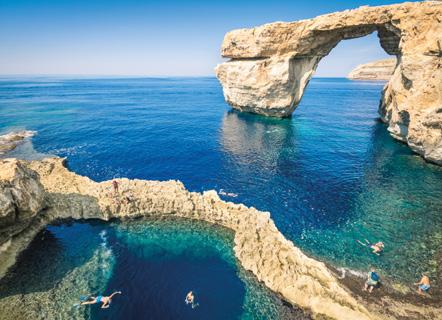
growth that grew here. The fungus was considered by the Knights of St John to have important medicinal properties and climbing onto the rock was strictly prohibited. Trespassers would be sentenced to three years’ enslaved oarsmanship in the galleys.


lagoon and dive site, separated from the open sea by an 80-metre long tunnel rock formation. The shallow, semi-circular lagoon is lined by a
boats sheltering from the waves. It’s a wonderful spot for a swim, dive or snorkel, though, as ever, it can get busy with daytrip boats during high season.
As the name would suggest, the Blue Hole is a luminous geological
underwater formation, created by the erosion of the limestone coastline, forming a vertical 15m deep shaft. Excellent visibility makes it an ideal spot for snorkelling, scuba- and freediving, while an underwater archway at 9 metres depth and the nearby Azure Reef make this the most popular dive site in the Maltese Islands. Aside from boulders and stunning rock formations, expect to and sponges.
On Gozo’s northern shore is Wied il-G asri shingle beach, which you will reach by swimming through a long, narrow creek and is also a favoured snorkelling spot.


At 67 square kilometres, Gozo is somewhat larger than Bermuda, but for a small island, there are lots of sights and activities on offer.
While most visitors by yacht will be attracted to its beautiful waters and coastal activities, on dry land Gozo is fantastic for mountain biking, hiking and climbing, while the gastronomic scene here is worth getting to know.

For sightseeing, start with the Citadel, or ‘Il-Kastell’, in Victoria (also ‘Rabat’ to locals). Perched on a hill in the mediaeval capital, the


military stronghold for the Knights of St John, as well as home to ordinary Gozitans under constant threat from Turkish invaders.

Walk atop the walls to take in the surrounding countryside and views over Malta and beyond. Also worthwhile is a visit to the small number of museums contained in a



recently opened visitor centre; the Gozo Museum of Archaeology, the Old Prison, Gran Castillo Historic and Gozo Nature Museum are all here. While diminutive in size, they provide interesting insight into Gozo’s ancient history dating back to neolithic times. For souvenir or gift shopping, inside the walls are arts and crafts shops specialising in silver jewellery and traditional Gozitan lace.

For a city with a population of a mere 7,000 inhabitants, Victoria is remarkable for having not one, but two opera houses. Split into two competing parishes -- the ‘red’ parish of the Basilica of St George and the ‘blue’ parish of the Cathedral of the

Both founded in 1863, their rivalry is identical productions have been scheduled, while in the 1970s, operarelated hooliganism broke out in the streets. Bottles were thrown and families divided. Opera goers and performers come from across Europe to be a part of Gozo’s ultimate pas de deux. Trying to keep the peace is world-renowned Maltese tenor and opera ambassador, Joseph Galleja, who has to date not performed at either, for fear of upsetting the other.
 Virgin Mary -- each has their own opera house, the Aurora and Astra, located in the same street.
Virgin Mary -- each has their own opera house, the Aurora and Astra, located in the same street.
Going back much further in time, the megalithic temples are the largest uncoverTed in the archipelago, dating back to around 3400 BC. The archeological site is worth more than a passing glance, offering a fascinating insight into the rites and rituals of the neolithic islanders that took place here. The visitor’s centre has a great ancient artefacts, including the infamous ‘Fat Ladies’.
to explore on foot or by bike. There are also several well-kept stables that offer horseback (or horse-drawn cart) treks for all abilities.
Gozo’s classic gastronomy is predictably rustic. Snacks are typically a crusty nagħ dish, while octopus stew with pasta is typical, though freshly caught seafood is always high on the menu here.

remains of wine presses discovered on the island date to 500 BC. That being said, viticulture in the Maltese islands remains a cottage industry, with no local bodega exceeding 60,000 bottles per year, while Italian alternatives are in strong supply.









One glance at Comino from above makes it obvious what this small island’s big attraction is. A nature reserve measuring just 3.5 km², nestled between Gozo and Malta, along with its even smaller neighbour, Cominotto, Camino has a number of lagoons, the most famous of which is the Blue Lagoon.
Having been a smugglers’ paradise and a place of quarantine for plague victims a couple of hundred years ago, Comino’s visitors these days are daytrippers coming for a dip in its ultra turquoise waters. Aside from a single hotel and holiday bungalows at the northern end, the island is undeveloped and is a sanctuary for migrating birds. At the last count, in 2022, Comino was home to only four human year-round inhabitants.
Next to the Blue Lagoon is the Crystal Lagoon (aka Emerald Lagoon), which has some cave formations to be explored by tender.
16:00h, which is when the tour boats depart. The lagoons of Comino get very crowded indeed, even as late-season as October, so pick your time carefully. Quieter will be San Niklaw Bay, on the north coast.

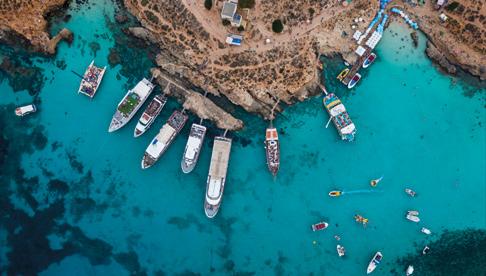




Courage cannot be counterfeited. It is one virtue that escapes hypocrisy


Withalmost two hundred beaches and a thousand kilometres of coastline, Corsica is a beach lover’s dream. The Franco-Italian island is blessed with an incredible diversity of beaches, from intimate hidden

pinnacles can almost look impenetrable, but exploring here by boat offers tropical-style beaches with pure white sands and crystal clear waters.
While the relationship between Corsica and its most famous son, Napoleon I, is complicated, historically the two are inexorably linked. Born in Ajaccio in August 1769, the second of eight surviving children, Napoleone Buonaparte, as he was baptised, left here for mainland France at the age of nine to attend military school.
He was born French, due to the Treaty of Versailles being signed only a year earlier, which ended four hundred years of Genoese rule. The treaty ceded Corsica to France, though Napoleon’s parents’ ancestry was Italian and it was the family’s language spoken at home.

Corsican family and had married the well-educated, but poorer, Carlo


de Buonaparte’ overnight. Being mocked at military school by his French peers for his Italian accent and for his place being scholarship-funded, the young, steely Napoleon responded by adopting a through the ranks.



He didn’t return home until eight years later, the French army, though his political views had been shaped by his Corsican sense of nationalism and pride.
revolted and declared independence from France. Napoleon initially supported the cause and served as a commander in the Corsican forces. However, he later switched sides and aligned himself with the French Republic, leaving the separatists feeling betrayed. The French military ultimately regained control of the island in 1796 and as First Consul and then Emperor, Napoleon’s rule marked a new era for Corsica.
He is celebrated in Ajaccio in the form of numerous statues and monuments, and eponymous streets, public spaces and establishments, including the city’s airport (AJA, LFKJ).


Ajaccio, formerly the Roman settlement of Ajax, today is a romantic, cosmopolitan city with a whiff of Côte d’Azur about it. From its picturesque centre, tree-lined boulevards and open squares, to terraced bistros and restaurants, it feels unmistakably French.
Place Foch is the place to shop for local produce at the daily morning market. Stroll down to the attractive sea front, catch, or head to one of its attractive sandy beaches nearby. Ajaccio is not the prettiest town, but it has a uniquely Corsican ambience to enjoy.
The best nearby beach is at Plage de Porticcio, just 6 km by tender, as the

Hikers may like to take the path from the centre, the ‘Chemin des Crêtes’, which leads up into the lush hills to the west of the town. From here, take in the fabulous views out to Iles Sanguinaires, an island cluster just off Tour de la Parata, a slender promontory at the western tip of Ajaccio. If it’s later in the day, watch the sunset and head back into town for dinner.
There are a host of excellent restaurants in town, with an emphasis on seafood, of course. Though for a rustic Corsican setting and unfancy home cooking, the pick of the bunch is U Licettu, in the hillside village of Cuttoli-Corticchiato.

In terms of attractions, the presence of Napoleon is inescapable. The

museum, set in the ancestral home, Maison Bonaparte, contains many family heirlooms displayed in an uninspiring manner.
The better exhibition is at Musee Fesch, named after Cardinal Fesch, Napoleon’s maternal half uncle, who lived here and whose collection is more art gallery than museum. Aside from a section devoted to the cult of the ‘Little Colonel’, there are busts and statues of Bonaparte family members, as well as many
are works by Botticelli, Perugino,



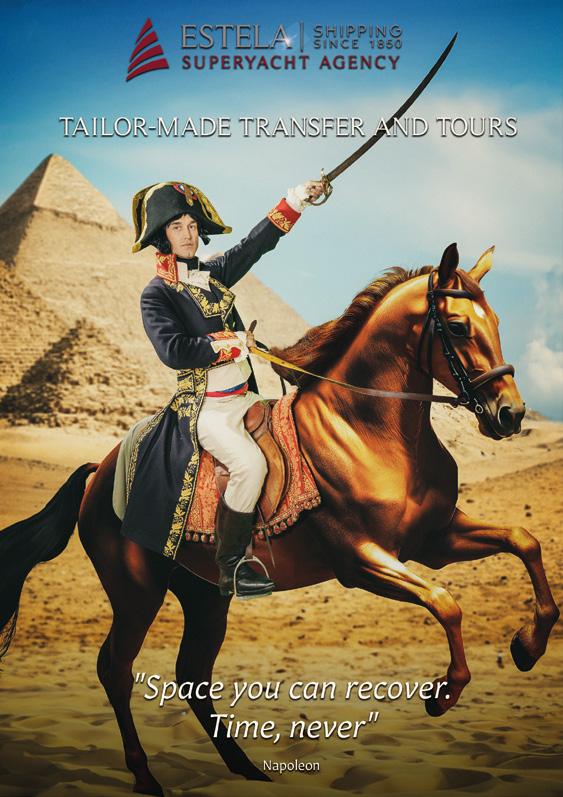
Michelangelo, Fra Bartolomeo, Titian, Veronese and Vasari. A drawback is that descriptions are in French only, so bring a guide, if necessary.


Like the man himself, the grandly named Cathédrale Notre-Dame-del’Assomption, in which Napoleon was baptised, may be diminutive in stature, though appearances can deceive. The 16th century baroque church contains paintings by Delacroix and Tintoretto, and a high altar donated by the emperor’s sister, and is certainly worth a look.
To explore Corsica’s stunning interior, a narrow-gauge rail network runs through tunnels and takes in bridges and viaducts, as you trundle across its mountainous terrain. While trains are modern, air-conditioned and have panoramic windows, they are slow, so a better alternative may be a helicopter tour.



Bonifacio has one of the most dramatic natural marina entrances in the Mediterranean, passing the historic walled Genoese citadel atop the cliffed headland, with grottoes and coves below.
Mediaeval Bonifacio is the oldest town in Corsica, with fascinating architecture arranged in a warren of long cobbled streets and, at its with marvellous views toward Sardinia. Walking up the hillside opposite the citadel offers spectacular views of the walled city and white limestone cliffs, particularly in the evening. Also worth a look at sunset is the Cimetière Marin cemetery, which resembles a small clifftop village with some tombs dating back to the 13th century.
Spend the day exploring the atmospheric town and its ancient
such as the ‘Staircase of the King of Aragon‘, a steep staircase cut into the cliff below the old town. On the trail of Napoleon, in Rue des Deux-Empereurs stands a small house at number 7, where Napoleon lived in 1793.

Alternatively, sail across to the uninhabited Lavezzi Islands for the day. These ten small islands boast a number of secluded beaches, coves and naturally formed pools among granite boulders. These pale blue waters are a haven for swimmers, while underwater formations make for some of the best scuba diving in this part of the Mediterranean.



miles away, around the southern tip of Corsica.
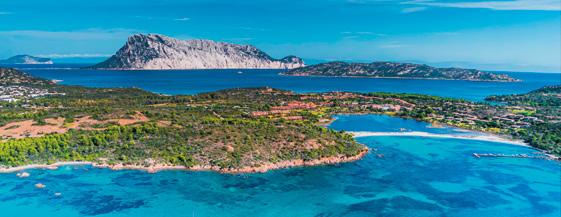
The painter, Henri Matisse, described Sardinia as ‘a true paradise for the senses’, while DH Lawrence in his 1921 book, ‘Sea and Sardinia’, wrote that the island lay ‘outside the circuit of civilisation’. “Neither Romans nor Phoenicians, Greeks nor Arabs ever subdued Sardinia”, the author observed.
Indeed, Sardinia is different. It has a rich cultural legacy dating back to the Bronze Age, and despite having been occupied by everyone from Catalans to Piemontese, its unique character prevails.

The rugged, untamed landscape is home to some four million sheep, it has the last wild horses to be found in Europe and a herd of albino miniature donkeys. But it’s the 1,800 kilometres of coastline that most visitors come for.

Napoleon’s relationship with Sardinia could be described as ‘turbulent’. In 1796, Napoleon led the French army in a successful campaign in Italy, defeating Sardinian forces and occupying various territories, including Piedmont and parts of Sardinia.
The following year, he negotiated the Treaty of Campo Formio, which resulted in Austria ceding the Austrian Netherlands (what is now Belgium) to France. As part of this treaty, Sardinia was compensated by receiving the ‘Mainland State of Venice.’


By 1799 French forces occupied all of Sardinia, deposing local rulers and establishing a French administration. In 1802, Napoleon transformed the subjugated Mainland State of Venice into the Kingdom of Italy, declaring himself King of Italy. Sardinia, along Piedmont, then became part of this Italian kingdom, but only until 1808, when Sardinia was annexed to the French Empire, under the very same Emperor Napoleon.

Trivia:
world that have the highest concentrations of centenarians. There are more than 500 people here who are 100 or older, or 33.6 for every 100,000 inhabitants. The village of Perdasdefogu has the most, pro rata, where its number of centenarians is 13 times the national average. Researchers put this down to an ancestry that survived on ‘famine foods’, such as acorn bread containing clay, cheese ripened in goat abomasum, and soft cheese with worms.
However, this spell under French control would only last until 1814, as Napoleon abdicated and Sardinia was restored to the House of Savoy under the Treaty of Paris. This period in the island’s history found Sardinians to be tough, independent and resilient, self-
On the superyacht trail since the 1960s, Sardinia’s enduring appeal is as clear as the waters that surround it. Unspoilt white beaches, a lush, rustic interior and a sense of exclusivity keep yacht owners and guests returning here season after season.
The jewel in Sardinia’s crown is
palaces tend to congregate, though there is plenty else to explore. Not least, Sardinia’s scuba diving is among the very best in the Mediterranean. Plenty of marine life, some interesting wrecks and natural rock formations, plus great visibility, attracts divers of all abilities.
Tip: Our friends at Seastar Shipping are on hand to provide any support you require and make any necessary arrangements on the spot. +39 349 2456184 info@ seastarshipping.it
Tip: For your stop on Sardinia’s west coast, Marina Alghero, established in 1998, offers 60 berths up to 70m, offering a comprehensive range of services and facilities.



The former Catalan colony of Alghero is a popular stop on the north western side of the island, with a charming historic centre nestled behind a lively port, on a beautiful stretch of coast.

The heart of the old town, ‘Centro Storico’, comes alive in summer, with pretty winding cobbled lanes lined with boutiques, cafés and eateries, and picturesque piazzas with mediaeval churches.
The best known attraction nearby is ‘Grotta di Nettuno’, or Neptune’s Cave, featuring spectacular rock formations, lit up for dramatic effect. The caves date from the Neolithic age and extend some 4 km, though are only partially accessible to the public. For guided access, take a boat trip from Alghero marina, or arrange a transfer to the
clifftop and walk the 656 steps down the ‘goats stairway’. It is worth a passing glance by tender, at very least.
Having soaked up the sun and wandered around the lanes in the early evening, take a walk along the old city walls and climb the towers, such as Torre di San Giovanni and Torre di Sulis, to enjoy the spectacular sunset over the tall cliffs of Capo Caccia.
While Alghero’s indoor market is small, it is a good spot to look for locally grown ingredients. Another reason is to buy in some Sardinian wines, with bold reds made from the indigenous, dark and thin-skinned Cannonau grape. The fruit contains high levels of antioxidant polyphenols and anthocyanins, linked to heart health and may partly explain Sardinians’ longevity.




There is a profusion of touristy restaurants in Alghero, but the best in town are: La Lepanto (Via Carlo Alberto 135, +39 079 979116), where lobster a speciality; Il Pavone (Piazza Sulis 3, +39 079 979584) for seafood and pasta; Al Tughuri (Via Maiorca 113, +39 079 976772) with meat and grill, while it also offers a decent vegetarian menu.


Stintino is a small village founded from Asinara, a small island off the northwestern tip of Sardinia, which is now predominantly inhabited by blueeyed, miniature albino donkeys.
The main draw to this part of the island is La Pelosa a series of white, open beaches in this area, and its sands are regarded as the
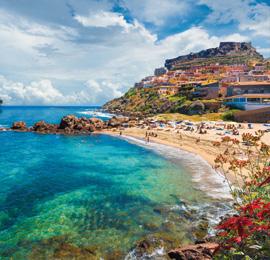

If blue-eyed, miniature, white albino donkeys are your thing, get across to Asinara, at the northwestern tip of Sardinia. A former leper colony and a maximum-security prison until the turn of the 20th century, the only inhabitants of Asinara now are a herd of some 120 small, wild donkeys, many of which are white albino.
There are many theories as to how they arrived here, though favourite is that they are descendants of Egyptian donkeys, brought over by

were reared by the island’s farming community is unknown, but they stayed behind after King Umberto di Savoia ordered their keepers off the island in 1885, to build the prison.
The island is largely untouched and boasts diverse ecosystems, with a

from the donkeys, there are wild
Sardinian hares and several bird species. Marine life also thrives in the surrounding waters, making it a great spot for snorkelling and diving.
Shallow, azure waters resemble a natural swimming pool, attracting large crowds in the high season. If you plan on coming ashore for some beach mat or base under your towel.

At the northern tip of this part of the island is the rugged headland of Capo Falcone, named after the peregrine falcon that nests here. From the Falcone tower, built in 1537, there are stunning views of Isola Piana, a nature reserve islet, to the south west, and of Asinara just to the north.

Skirting east along the Gulf of Asinara, passing the popular wind
we reach Castelsardo , a picturesque historic town. As the name would suggest, its primary feature is the 12th century Castello dei Doria and

Next up is Le Saline, named after the nearby salt marshes in the Gulf of Saline. This beach is layered with crushed pebbles and is a popular spot
crowded in places, but the 9 km long stretch towards Fiume Santo means there’s always somewhere to get away from the hoi-polloi. If you’re an early morning walker/runner, this is the place to come. At Ezzi Mannu, the beach turns pebbly and tends to be quieter at peak times.
The area is popular with birdwatchers, particularly in the autumn when migrating species are can reach a hundred or more, alongside resident birds of prey and a in particular, visit the World Heritage Site at Molentargius in the south near Cagliari, where they congregate in greater numbers.
Passing more beaches inhabited by wind-seekers and family daytrippers, we work our way around to glamorous north-eastern parts.


This exclusive pocket of Sardinia, in the Strait of Bonifacio, is as though it was made for yachting. Comprising

‘isolotti’, Maddalena Archipelago has been a Unesco World Heritage site since 1994, preserving its stunning natural beauty.
With umpteen unspoilt coves, lagoons and beaches to explore, many accessible only by boat, guests are able to play and relax away from prying eyes. Head for Budelli, Razzoli and Santa Maria if it is privacy you seek.
There has been some development of tourism here since the closure of NATO’s naval base on La Maddalena
to spoil things for the elite traveller. In fact, thanks to having become accustomed to US naval personnel and their dollars over the decades, service levels are higher here than in many parts of Italy.
Costa Smeralda, named after the emerald colour of its waters, stretches some 50 km from Cannigione in the Golfo di Arzachena, north around Capo Ferro, and south to Cugnana in the Golfo di Cugnana. It is where you come to rub fenders with the highest of rollers.




Largely undeveloped, aside from Porto Cervo in the centre and, to a lesser extent, Porto Rotondo, Smeralda is about exclusivity and privacy, in contrast with the brash showing off for which, say, St Tropez or Monaco are renowned. Here, any hard partying —‘bunga bunga’ style or otherwise — mostly takes place on board at anchor, or in private villas, tucked discreetly away inland.
Daytimes are for relaxing on a beach, one more beautiful than the next, and enjoying watersports in the clearest waters. For golf, the course at Pevero Golf Club was designed in 1972 by Robert Trent Jones, rated 4/5
in most golf guides, with the bonus of stunning views.
But if it’s shopping you crave, most of the designer ‘usual suspects’ are found around the marina and in the town. Labels include Bvlgari, Dolce & Gabbana, Versace, Valentino, Prada, Gucci, Tod’s, Louis Vuitton, Roberto Cavalli, Missoni, Trussardi, Rossetti and Cartier. There is even a branch of Harrods and many exclusive lesserknown boutiques where you might get a made-to-measure bikini, or even a tailored jacket for your Chihuahua; a visit to Porto Cervo is a wonderful opportunity to give the black card a good workout.


La Maddalena has many lively bars, cafés and trattorias, but for higher-end dining, head back over to the main island.
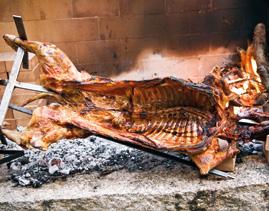
La Gritta, in Porto Faro, Palau comes garden setting with coastal views. Somu, in Baia Sardinia, comes with a Michelin star and offers creative cooking with plenty of vegetarian and vegan options. Phi Restaurant in Forte Cappellini, Baia Sardinia is a beach nightclub-cum-lounge bar with a renowned mainland chef and a Michelin recommendation. The guide also commends Lu Pisantinu in Porto Cervo and awards a star to neighbouring ConFusion, though customer reviews for both are mixed.
Many yachting visitors don’t venture much beyond Costa Smeralda, though the rest of Sardinia’s east coast offers many more secluded beaches and coves, for those who want to get away from it all.

The coastline is protected from westerly winds, making it perfect for paddle boarding or kayaking. Venturing inland, towns, villages and hamlets are small, rich in folkloric heritage and characteristic, gritty architecture. There are plenty of ancient ruins, typical murals, old churches and small museums that document their colourful history, if visitors can be tempted away from the water.



Sardinia’s rugged, sparsely populated interior means great hiking trails and climbs. The Barbagia mountains in the east feature challenging trails for experienced hikers, while on the western side, near Montevecchio are mountainous paths more suited to walkers, offering stunning coastal views, of course.


Its forests meanwhile offer beautiful waterfalls, rock formations and flora to explore. In all instances, it’s advisable to book a local guide, as some of Sardinia’s terrain can be very challenging and unaccompanied explorers regularly require rescuing.
For climbers, Sardinia has some 6,000 sport climbing routes. One of the outstanding favourites is the 148m high Aguglia rock at Cala Goloritzè, a free-standing limestone formation presenting a superb slab climb.
Sardinia has a deep equestrian tradition and offers lots of horse riding possibilities for riders of all abilities, ranging from complex trails to bareback riding on the beach. In the north, the Valledoria area has many paths for experienced riders, while more relaxing trails in the north-east take in the Gallurese coast, with its stunning land- and seascapes. Alongside Sardinia’s population of
four million sheep, indigenous wild boar (‘cinghiale’) are abundant, and hunting season is between November and January. A staple of Sardinian cuisine, these wild hogs can weigh up to 100 kg, roaming around the millions of cork oaks, feeding on acorns. Out of season, there are practice hunts that visitors can join. If wanting to combine cruising and shooting, consider coming during September or October.
Hunting is an intrinsic part of selfwoodcock, snipe, hare and wild rabbit, lark, pigeon and quail are among the many varieties found. For nonhunters, there are alternative country and clay shooting.


For hunting of a different kind, dense forests here are fertile foraging ground

parts of Italy are larger producers, but varieties such as ovolo, gallinaccio and porcino nero, are abundant here, woods around Laconi, you can join organised forages with dogs, to seek
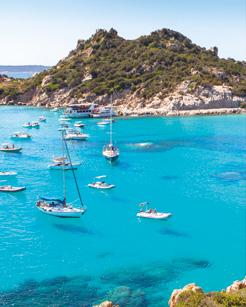
depending on the time of year.



With some 1800 km of coastline and crystal clear waters, Sardinia offers some of the very best diving in the Mediterranean. May offers the best visibility, up to 40 metres, but waters are on the cool side before summer. Sardinia offers well lit dives down to 70 metres and a great variety, including caves, corals and crustaceans. Because of the island’s position along busy strategic shipping lanes, surrounding waters are also littered with a variety of wrecks.
Predictably, the north east part of the island is the busiest, with the archipelago of La Maddalena and Bonifacio Strait boasting some forty dive sites. Its granite rocks, drop offs, overhangs, swim-throughs and caves are


molluscs and crustaceans. Moray eel, grouper, octopus, crab, lobster and lots of nudibranchs are typical.
Off the northwestern shore, near Alghero, Sardinia’s shoreline caves are replicated underwater. Some of Europe’s largest underwater caves are found at Capo Caccia, in a system of over a hundred caverns in its limestone cliffs. Rare red coral can be found here at only 10 metres.
Nereo’s Cave is the biggest marine cave in the Medi-terranean, featuring a system of arches, tunnels, air chambers and caves deep inside the mountain. Falco’s Cave leads to a dry chamber where divers can take off their gear and look around its stalactites and stalagmites, while the cave is teeming with hermit crabs.
Deer Cave is a partially submerged cavern named after an ancient deer fossil found there, thought to be 100,000 years old.





Olbia is regarded as the gateway to northern Sardinia, with the island’s second airport (OLB, LIEO) being closest to Costa Smeralda. It is a popular embarkation point for yachts, with Marina di Olbia just a stone’s throw away.
However, there is more to Olbia than just a transit stop, with a charming old town and pleasant shopping streets leading off Piazza Regina Margherita. There are plenty of boutiques and decent restaurants to while away a few hours in transit, if not a destination in their own right.
Tip: The nearby Auchan hypermarket has been rebranded Spazio Conad. It is open 7 days and located on the SS125, past Olbia airport.


Elba is Italy’s third largest island after Sicily and Sardinia and the largest of seven islands in the Tuscan Archipelago, with a population of 30,000.

Historically, the island is most closely associated with Napoleon, of course, as his chosen place of exile in 1814. Though Elba’s fascinating history goes much deeper. Etruscans, Romans, Saracens, Pisans, Spanish, French and the Medici all settled here at some point, leaving behind their mark.


They were after some of the world’s oldest known iron ore deposits and the island’s strategic location in this part of the Mediterranean. Today’s visitors are generally holiday makers drawn to its countless bays and beaches, beautiful varied landscape and an abundance of great restaurants.

On March 31, 1814 united forces of England, Prussia, Russia and Austria broke into Paris and Napoleon was forced to sign an act of abdication. It was a humiliation for the emperor, following a disastrous campaign to invade Russia, ending in defeat at Leipzig.

The Treaty of Fontainebleau, sealed just eleven days later, exiled Napoleon as the nominal Prince of Elba, allowed to retain a personal garrison of some 600 men for his protection, and granted an annual pension of two million francs. Under the watchful eye of the newly appointed Governor, British Colonel Neil Campbell, Napoleon spent his days on Elba bathing, horse riding, reading and plotting his return to


France. Still styling himself ‘Emperor’, he found time to deal with stray dogs, public sanitation and the construction of new roads, though he had grander plans.
Napoleon pined for his wife, Marie Louise, who had abandoned him, and with the promised pension not materialising, he struggled to pay his expensive army. Local taxes and development of Elba’s mines were not meeting his costs, so he



considered the Treaty void. Having caught wind of plans to move his exile to a more remote location, he set about reconquering France with a band of loyalists.


Just eleven months after being exiled, on February 26, 1815, the ships Inconstant and Zéphir slipped past their guards and set sail for Cannes, for the start of the Hundred Day campaign to retake the throne in Paris.
Elba is worth avoiding in August, when locals from Livorno or Florence are joined by thousands of package tourists from all over Europe, but even then, it by boat, away from the crowds.
If it’s not beach life you are looking for, the island’s varied terrain offers great hiking and cycling, horse riding, or wine-tasting, among other pursuits. Scuba divers have some 30 dive sites to choose from here.
Sightseers can explore Etruscan or Medicean and Spanish fortresses, while there are museums dedicated to Napoleon and to Elba’s mineral production, among others. Also worthwhile is taking the stand-up cable car to the top of Monte Capanne. From Marciana, it is a 20-minute ride in a two-person open gondola, the reward for which is a birds-eye view of the whole island from its highest peak of 1020 metres.
Among the sites worth visiting inland, Museo Villa Napoleonica di San Martino was acquired and transformed by the emperor himself, from a large farmhouse into a cool, statesman-like villa to escape the summer heat. In 1856, it was purchased by the Russian nobleman Anatolio

Demidoff, adding a gallery that houses a rich collection of Napoleonic prints, engravings and etchings.


Elba was Villa dei Mulini is worth a look, though many of its furnishings, tapestries and other items were removed after his sudden departure.
Staying on the Napoleon trail, it’s worth looking in on Teatro dei Vigilanti in Portoferraio. This former 17th century church was turned from a military arsenal, on Napoleon’s orders, into a grand-but-tiny theatre.
Standing above the main port and marina at Portoferraio are the remains of a two-storey Roman villa at Punta delle Grotte, dating from the 1st century BC. The nearby 16th century Forte Falcone and Torre del Martello form part of defences

built around the town by Cosimo l de’ Medici. On the opposite side of the water, at the entry to the port, stands the remains of a16th century tower, Torre del Martello, where Napoleon in Elba. It adjoins the ruins of another Roman villa, La Linguella.
The Museum of Minerals is located inside the Palazzo del Burò, chronicling the geo-mineralogical heritage of the island. Guided excursions to the mines themselves are available by prior appointment. The second mine, Calamita, is near Capoliveri and also has a small museum. This underground mine was the most modern iron ore production site in Europe, before closing as recently as 1981.


Fine beaches and bays are too numerous to mention, though here is a selection of the best around the island.




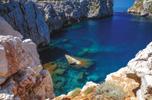







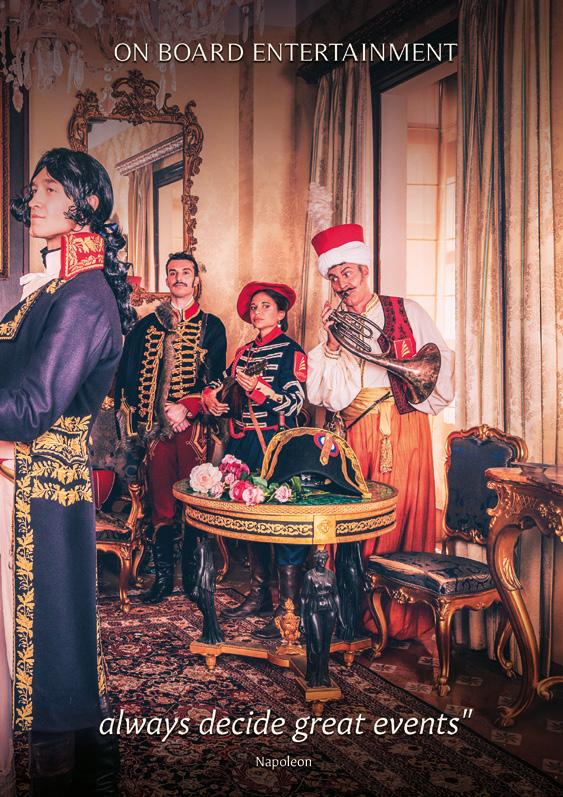


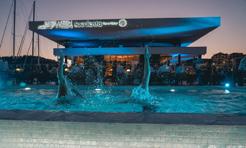
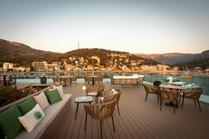














Like many countries, regions and territories around the world, the Balearic Islands changed hands between empires a few times; traded like Panini football cards.
The archipelago was handed over from the Kingdom of Aragon to the Kingdom of Naples in 1806, which at that time was ruled by Joachim Murat, Napoleon’s
Naples and husband of Queen Caroline, Napoleon’s sister. The convoluted multiparty swap also involved Britain and Russia, which received bits of Dalmatia and Istria in return for signing Sicily over to the French. Austria, Prussia, Tobago and St. Lucia and other territories were on the table, as Napoleon sought to secure
thought. The plan had been a ruse by Napoleon, who reneged on the agreement and occupied Spain instead, forcing King Carlos IV to abdicate in favour of Joseph Bonaparte, the Emperor’s brother.



The popular uprising against the French came on May 2nd, 1808, but was put down mercilessly, with hundreds of Madrileños executed. It signalled the start of six years of war against the Gallic occupiers.

The Balearics reverted to Spain after Napoleon’s defeat, in 1815, with the Bourbon monarchy restored in Naples under the terms of the Congress of Vienna.
Napoleon had seized Spain through deceit in 1806, sending his armies across the Pyrenees to conquer Portugal, with the aid of Spanish forces, under the Treaty of Fontainebleau. Or so the Court of Aragon
After a heavy defeat to the Iberians in Bailén that summer, as many as 21,000 French troops surrendered, with 18,000 taken prisoner and the rest returned to France. The problem was where to house such a large number of soldiers. Some ended up being distributed to Cádiz and the Canary Islands, though not before
barges. Nine thousand were dispatched to the Balearics in April 1809.
These prisoners were to be distributed between Mallorca, Ibiza and Menorca, but during a hazardous journey lasting four months, overcrowding in dirty conditions caused dysentery to spread among the passengers. Authorities refused to let them disembark in Palma, sending the ship on to Menorca, though the British navy didn’t want a large number of enemy soldiers near their military base in Mahón.
The prisoners were eventually deposited on the island of Cabrera, off Mallorca’s southern tip. Cabrera had been depopulated by the Spanish army, with the whole island becoming a de facto prison camp, fed and watered by a supply ship every few days.



In return for taking the prisoners and feeding them, at a cost of 400,000 reals per month, the Mallorca junta would receive cash subsidies, tax relief and military concessions from the Spanish mainland. The Royal Navy offered a warship to guard the island.
More prisoners of war were dumped here
thought to have passed through the camp, including Belgian, Swiss, Polish and Italian imperial soldiers. After 14 months, some 1800 Spanish army, or transferred to British prisons. By this time some two thousand of the original prisoners had already perished.
Five years later, on May 16th, 1814, a month after Napoleon was deposed, the French schooner ‘La



command of Captain Lt Jean-Jacques Riouffe, the prisoners were to be brought home.

What he encountered was the horrifying sight of 3,400 of emaciated, ragged and humanity degraded. Some appeared more dead than alive. Historians now consider concentration camp.

A number of survivors have written memoirs of their time, though accounts vary in many of the details of their time
foot Captain Duperrey also wrote a memoir, stories of many prisoners he liberated.
Undisputed is that some prisoners managed to escape, having seized amount to no more than a hundred,
with the remainers resorting even to cannibalism and coprophagy to survive. A storm had claimed a supply ship in the Cabrera channel and it had taken many more days to arrange a replacement vessel, by which time the captives were even more desperate. They tried to seize the ship and attacked her crew, making potential new provisioners to Cabrera even more reluctant to offer their services.
The only livestock on Cabrera had been a solitary donkey, which the prisoners named ‘Robinson’ (or ‘Martin’, according to some). Regardless of its name, the animal’s purpose had been to






carry water between different parts of the island, though by the time new supplies arrived, Robinson had been slaughtered and eaten.
The only other animals available to eat were rats, mice, rabbits and lizards, which
yielded very little, while a handful of wild goats — after which Cabrera is named — were too canny and agile to be caught.
one memoirist noted, with the most senior receiving double bread portions, oats, bacon, pulses and even wine. The rank and enough to keep us from starving, and too weak to live.”
As more prisoners were brought to the camp, the condition of the Cabrera POWs became well known to Spanish and to French authorities, as seafarers returned with tales of what they had witnessed. Napoleon deemed the surrender at Bailén a shameful capitulation and refused to negotiate the release of prisoners. The Spanish, meanwhile, did nothing to alleviate their suffering.
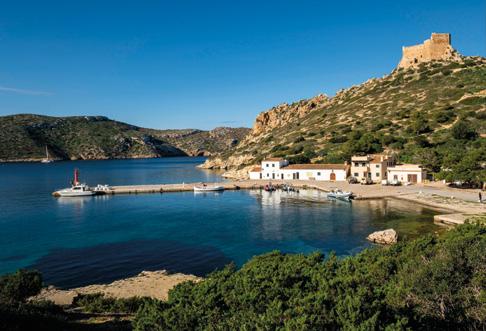

In two convoys, Cabrera’s 3,400 survivors were brought home to France. Upon being rescued, some stoically celebrated with, “Vive le Roy!”, not accepting that their Emperor had left them to rot. However, by the time they sailed the next morning, the chant was, “Long live Louis XVIII. Long live the peace that brings us back to existence!”

On their return to France, there were no parades and marching bands to welcome them home. Instead, they were quarantined. Their former Bailén commander, who had been taken from Cabrera to England, proposed to send them to Corsica, into another island exile, while the former Emperor had been sent to Elba. Instead, Marseille rose up and liberated the Cabrerans, offering them food and drink, clothing, money and their freedom.
Two hundred years after the end of Cabrera’s function as a Napoleonic prison camp, the history of its dark episode continues to unfold. As recently as 2022, a team of French archeologists made a fresh discovery in a cave at Cap Ventos, to the northwest of the island.
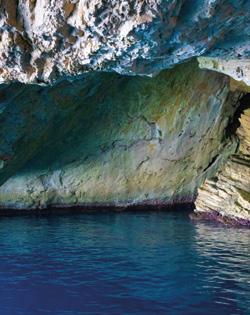


found years earlier, documenting some of the names of those held on Cabrera. However, in this most recent expedition, the team descended 50 metres into a cavern in ‘Death Valley’, named for the hundreds of skeletons and remains found discovered buttons from uniforms of the 67th and 14th French infantry regiments.
The archaeologists described the cavern as “a cathedral of stalactites”, with hundreds of inscriptions found on its walls. Part of the reason for these prisoners staying underground was for shelter, but the cavern also had the only

source of fresh water on the island, which had earlier been described by one of the memoirists. It was just a trickle of water, making it necessary to queue for 24 hours just to receive a goblet full.


Vice Admiral Prince de Joinville, third son of King Louis-Philippe I, visited Palma de Mallorca on board his ship 33 years later in 1847 and noted the name of the nearby island, ‘Cabrera’. He recognised it as the place where thousands of French prisoners had been held and insisted on sailing there to see it for himself. Led by a local who years earlier brought supplies to the prisoners, the prince gathered some sun-bleached bones and requested that a memorial be erected. On top of an ossuary, a casket containing skeletal remains, stands an obelisk with the inscription “In memory of the French dead in Cabrera, the squadron of evolution in 1847, commissioned by His Royal Highness the Prince de Joinville.” The memorial is located in a wood, a little west of the Ethnographic Museum, near a French cemetery.



Islands offer, here is a sample itinerary. Whether your guests enjoy golf, or scuba diving, or need an accessible programme, we are here to help and can arrange anything you need.


Menorca is popular with walkers and though primarily tourists come for its unspoiled beaches and peaceful environs. As the ‘Lonely Planet’ travel guide put it, “Menorca is more birdsong than Pete Tong”, in a reference to one of Ibiza’s most illustrious club DJs.

Full details of suggested anchorages, tours, or other activities in these islands, including our complete list of recommended restaurants, just get in touch.
Remember, in Spain it is compulsory for all operators -- crew or guests -- of personal watercraft (PWC), such as jet skis, to have a licence. Licences also apply national park.
Menorca has two cities, the capital, Mahón (also ‘Maó’) and Ciutadella, which was its capital until the British took over in the 18th century. Either makes a good base from which to make day trips. Depending on your length of stay, yachts may choose to overnight their way around the coast at anchor.
Menorca’s second city, Ciutadella, on the west coast, is a picturesque town, founded originally by the Carthaginians. It has a beautiful old quarter wrapped around a natural port, ‘Es Born’, formed by a deep inlet leading to the town centre.


It is a delightful old city, with mediaeval streets and beautiful ancient architecture to feast the eye, while plentiful cafés and restaurants dotted around the port feast the palate.

Ciutadella’s nearest beaches are only a few kilometres away at Cala Santandria and Sa Caleta, while Cala en Bosch to the south is a popular beach resort with a bustling marina.
and coves are only a day trip away from here, or from Mahón; in Menorca you are spoilt for choice. Those along the northern and southern coasts are not easily accessible by car, so these are particularly good to visit by boat.
Like its second city, Menorca’s capital is a picturesque town set around a deep water inlet, rich in interesting architecture and a bustling atmosphere in the high season. At over 6km long, Mahón’s harbour is the world’s second deepest inlet after Pearl Harbour, explaining why it has been used as a port since the third century BC and as a base for
Apart from being a delightful place for strolling around town or sitting on a terrace to sample the local fare, Mahón has good shopping. Aside from the usual high street names, the Baroque cloister has a market selling local produce such as charcuterie, cheeses, wine, and gin, for which Menorca is famous.
Mahón may not be Milan, but it’s a great place to shop for a wide range of locally-crafted footwear. Just about everywhere sells ‘abarcas’, the simple leather sandal that is symbolic of the island. Traditionally made with hard-wearing goat leather, they are surprisingly comfortable once worn in.


Equestrians should check out a labyrinthian 200-year old family owned store, ‘Armería Escudero’ (C/ Arraval 3), which stocks a bewildering array of horse and riding-related goods. Gin lovers, meanwhile, may want to consider a tour and/or tasting at the Xoriguer distillery right in the port. Gin was introduced by the British in the late 1700s, when this distillery was built. The island’s most famous export, in its distinctive bottle, drink, making a refreshing ‘pomada’ for a summer’s afternoon.
Alternatively, visit the picturesque, Binibeca Vell local shops and a market.




See the online beaches and bays map by ESTELA: bit.ly/Menorca-by-Estela.

On board, explore the north side of the island. The best spots are Platja de Cavalleria (40.05973, 4.07683) and Cala Pregonda (40.05631, 4.04233), which is particularly good for snorkelling. It’s a national park, so please be careful with the protected posidonia seagrass.
whole of the Mediterranean…
Cova d’en Xoroi, Cala en Porter (covadenxoroi.com)


Set deep into west-facing rock-cliff caverns at Cala Coves, Cova d‘en Xoroi is the most famous of Menorca’s party venues. Its dramatic position and stunning sunset views are extra special. ‘VIP terrace’ booking is highly recommended.


Torralbenc (torralbenc.com) (8 min drive from Cova d’en Xoroi)
gorgeous views over the surrounding countryside. Basque-inspired cuisine.
the south of the island. The best bays are Cala Mitjana (39.932236, 3.972037), Cala Macarelleta (39.936395, 3.937060) and Cala Turqueta (39.931069, 3.914679).

Cala Turqueta; a beautiful virgin beach, but one that can get crowded at peak times. Apart from the pristine beach itself, the big draw is that it’s a great spot for cliff-jumping.
Cala Macarelleta; the water here is so clear that yachts appear to hover. Macarelleta is understandably popular, but it’s worth getting here early to secure a spot. Its bigger adjoining cala, Macarella, has a ‘chiringuito’ serving drinks and food, for a casual bite on the Beach.
Cala Mitjana; there are two coves at Mitjana to choose from. The lack of any nearby facilities may make this a decent bet if looking to avoid the crowds.




Cave enthusiasts may want to visit Cova des Coloms, a huge natural cave located in in the middle of nowhere, near Binigaus, inland from Santo Tomas. 110 metres deep, 15 metres wide and 24 metres tall, ‘the Cathedral’ is a striking natural phenomenon.
This is an accessible beautiful water cave for beginners, starting with a short walk to the coast where you will
a headlamp. A short swim of about 200 metres brings you to the cave entrance. From there, you can explore the cave on foot, enjoy the beautiful formations and swim in the lakes.
Ciutadella has many cafés and restaurants along the quayside and in the centre, many serving the daily
catch. These recommendations are tried and tested by us and our guests.
S’Amarador, Ciutadella (samarador.com)




Seafood restaurant overlooking the port.
Godai, Ciutadella (godaimenorca.com)
Japanese-Menorcan cuisine, with a notable sake list, views over the marina.
It’s fair to say that most ‘activity’ in Menorca is focused on its shores and surrounding waters. The interior


Balearic islands, featuring small, sleepy villages surrounded by farmland.


The island is popular with hikers, bikers and horse riders. Menorca’s strong equestrian traditions mean it is a wonderful place to explore on horseback. There are a number of stables that offer horse riding excursions across and around the island.

One popular trail is Camí de Cavalls de Menorca, an important piece of island heritage, started in 1330 during the rule of Jaume II, to enable armed knights to patrol the coast. Extended and completed by the French and British, during their 18th century reigns over Menorca, today it is merely a 185 km loop that circles the entire island, following the coastline closely. It is a stunning path with
Smoix, CIUTADELLA +34 971 38 28 08


On the main road through Ciutadella is this industrial-looking, small restaurant, serving highly-rated local, organic, seasonal produce. Particularly recommended is the prawn ravioli.
Rels, CIUTADELLA, +34 971 48 05 16



Opened in 2015 by two chefs with extensive Michelin-starred experience, Rels serves contemporary Menorcan cuisine, along with one of the most extensive wine lists on the Island.
Depart to Mallorca.

Spain’s most exclusive homes can be found here, hidden among pine trees, with jaw-dropping views. Port de Pollença (also ‘Puerto Pollensa’), is a well-established low-rise resort with sandy beaches wrapped around a horseshoe bay and a seafront mostly unchanged in decades.
It is one of Mallorca’s quieter resorts, popular with families and travellers whose idea of evening entertainment is a stroll along the picturesque Pine Walk, a 3-kilometre cobbled promenade stretching along half of the bay. The seafront offers an array of dining and drinking options, as well as many shops and boutiques to browse.




The north of Mallorca is arguably the most beautiful piece of coastline the island has to offer. Larger yachts frequently anchor off-shore, though mooring in nearby Port d’Alcudia’s commercial

An alliance of Balearic maritime excellence in the heart of the Mediterranean.





Port de Pollença was the spark for Agatha Christie’s short story, ‘Problem in Pollensa
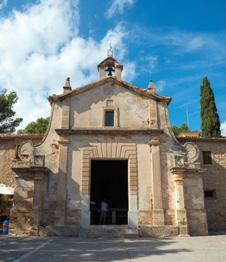


March 1932. Hotel Formentor had been deemed too extortionate for her tastes,

on Pine Walk (which remains open today), inspiring her to introduce the character ‘Mr Parker Pyne’. Today, off-season visitors are more likely to encounter the Team Ineos professional cycling squad, in training on nearby climbs ahead of the Tour season.
See the online beaches and bays map by ESTELA bit.ly/Mallorca-by-Estela


Inland, Alcúdia’s walled old town is worth a visit, where the old gates still stand and where cobbled narrow streets are home to shops, bars and boutiques, while on Sundays it holds one of the island’s biggest markets. Along with the typical Mediterranean marketware, there is lots of Mallorca produce on offer, while chatty locals add to the colour.

Cap Formentor is a peninsula jutting out from the north-eastern corner of Mallorca, featuring 400-metre high cliffs densely covered in pine trees. At the very tip is the lighthouse, ‘Faro Formentor’, one of the island’s most famous landmarks, while its most inaccessible sandy (public) beach lies in front of the exclusive Hotel Formentor, currently undergoing a major transformation to re-open as a Four Seasons resort in 2024.

Waters on this side of the island are particularly clear, with lots of coves and cliffs to enjoy. It is a perfect place for diving. We can organise your diving instructor on board.







Continuing up along Mallorca’s west coast, we head for Port de Sóller, berthed at Marina Tramontana. Port de Sóller is a stunning natural bowl, making it a
of sandy beach, with many seafront shops, bars and restaurants make for a lovely spot to relax.

It is also a great place from which to explore some of Mallorca’s most picturesque villages, with an old wooden train trundling up to the hilltop town of nearby Sóller at regular intervals. The town is famous for its olive industry, but also for lemons and oranges. On a hot day, a locally-made fruit sorbet is a refreshing must.

A stone’s throw from Sóller lies Fornalutx, often voted one of the prettiest villages in the whole of Spain. It’s a small, photogenic village whose attraction is its narrow cobbled streets, pretty houses with red mountain views.

By car, a drive from Sóller to and on to Valldemossa provides views of the most stunning bit of coastline anywhere, while a stop in each town is worthwhile. Deià is known for its literary and musical connections, with many writers and artists drawn here since early in the 20th century. The poet and novelist, Robert Graves settled here and his house is now a museum, while several Spanish-language writers and poets came here for inspiration from the mainland and South America.
In the 1980s Deià became associated with Sir Richard Branson, whose Virgin Group once operated the ’La Residencia’ hotel in the town. The exclusive resort has in the past been host to famous names such as Mick Jagger, Princess Diana and Harrison Ford. In 2023, the group opened the brand new Son Bunyola Resort, along the coast near Banyalbufar.

More recently, it has been nearby Cala Deia many visitors, after the screening of a TV adaptation of a John Le Carré thriller, ‘The Night Manager’. Largely set in Mallorca, some restaurant, h, perched precariously just on the water’s edge.


The eatery is not quite the fancy venue portrayed in the hit drama, but its unique setting with beautiful cove views, and accessibility directly by tender, makes a visit worthwhile.
Valldemossa is an achingly beautiful village, set in the mountains. It is the place where Frederic Chopin once spent an unhappy winter in 1838/39 with George Sand, due to the inclement weather. Chopin was suffering from tuberculosis due to inclement weather, though it was a productive stay for the couple.
The pair rented a ‘cell’ consisting of three rooms in Real Cartuja (Royal Carthusian Monastery), part of the charterhouse that had been a royal residence, until it was donated to Carthusian monks in 1399 until 1835, when the monks were evicted. In one of the rooms, Chopin had an upright piano installed, on which he completed Preludes Op 28 and composed Ballade No 2, Op 38 in F major and Scherzo No 3, Op 39 in C-sharp minor. For her part, Sand wrote an autobiographical travel novel, ‘Winter in Majorca’, documenting their visit.

The quiet and picturesque town has its share of small shops, eateries and art galleries, so it’s a pleasant spot to while away an hour or two. Hikers can choose from a number of trails that originate here. A drive from Sóller in the other direction, north towards Sa Calobra (the snake) is 38km of motoring or cycling nirvana.

This famous stretch of hair pinned tarmac has featured in many motoring TV shows and photoshoots. Taking one’s eye off the road to admire the stunning views is probably inadvisable…





Port D’andratx, Sant Elm, Sa Dragonera
village of Sant Elm, a popular spot for hikers to walk up to ‘Sa Trapa’, a ruined Trappist monastery with stunning views of the coastline and surrounding areas

Sant Elm looks out over Sa Dragonera, a six-kilometre long rock that gets its name from its dragon-like shape, and is home to over 350 different plant species. Many plants uncommon to the rest of the island include wild cabbage, corn chamomile, horseshoe vetch and European fan palm.
The islet is a strategic point during bird migration and many colonies of sea birds and birds of prey can be found here. Gulls, shearwaters and osprey are among the species frequently found patrolling its shores. In addition to birds, a small subspecies of lizard native to Sa Dragonera is characteristic, in fact the name of the island comes from the large number of these lizards you come across while strolling around the island.

Port Adriano is a great base for exploring nearby coves and beaches, as well as scuba diving at Santa Ponsa and other watersports. The marina complex itself has a number of luxury retail outlets, as well as a decent assortment of restaurants and cafés.


The marina also hosts concerts and performances by leading artists throughout the summer season, providing a buzzy atmosphere.

Puerto Portals is a prestigious nautical and leisure complex, where there’s always something going on. The marina has many boutiques, bars and restaurants, offering a wide variety of cuisine and atmosphere, ranging from casual dining to Michelin-rated cooking.


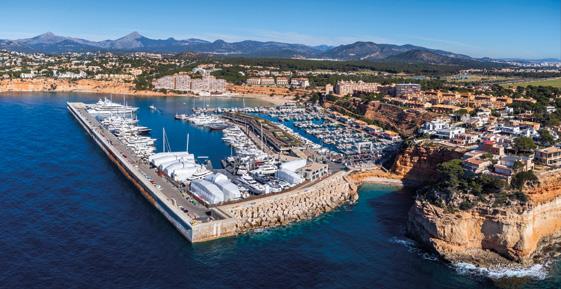



Spending a couple of days in Palma, a great way to explore the city is to stroll or roll around the old town. The whole centre is easily covered on foot.
One of Palma’s main boulevards, Passeig del Born, is directly opposite STP, with the cathedral to your right, bringing you to the heart of the city. Shops, cafés, galleries and ateliers are dotted all along the narrow, either side.
A traditional way to start is to take breakfast at the original C’an Joan de S’Aigua in Calle Sans. Founded in 1700, it is one of the city’s classic bakeries and coffee houses, famous locally for its ensaimadas and cuartos. If stopping by later in the day, this characterful establishment also makes its own artisanal ice cream.
Palma Cathedral, or ‘La Seu’, is the second-largest Gothic cathedral in Spain. It features ‘The Gothic Eye’, one of the world’s largest rose windows with 1,236 pieces of stained glass. Its columns are ringed with wrought-iron candelabra designed by Gaudi.




At the southern end, don’t miss the Portal del Mirador, a 15th-century door by Guillem Sagrera featuring scenes from the Last Supper.








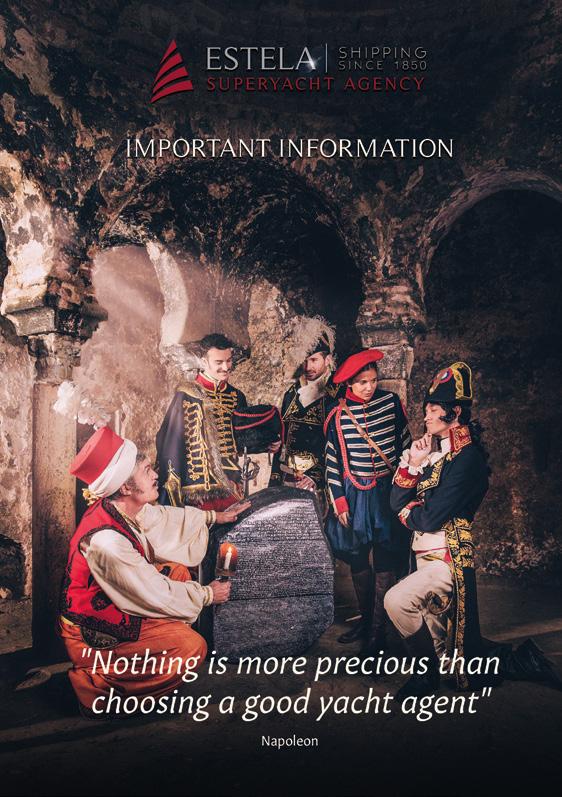

The Royal Palace of La Almudaina dates back to the 14th century and is Remains of the 12th century Arab citadel can still be found in the layout of the present castle.



On the outskirts of the city, Bellver Castle is a Gothic-style building from the 14th century, built for King Jaume II. Uniquely, it is the only round castle in Spain. Used as a military prison for 200 years, now it is a museum and a visitor attraction. The upper Palma Bay.
Other highlights around the city are Plaza Cort, featuring the mostphotographed of all of Mallorca’s millions of olive trees, the ancient baths in the Arab quarter, the Jewish quarter, and many classic Mallorcan patios, tucked away in the backstreets.
Lovers of modern art should head to Es Baluard museum of modern and contemporary art housed in a former military fortress. Its permanent collection includes works by C é zanne, Gauguin, Picasso, Miro, Picabia, Magritte, Giacometti , Motherwell, T à pies, as well as more recent artists such as Horn, Plessi, Polke, Kiefer, Schnabel, Barceló, and Scully.

you need, our personal shopper can collect you from your yacht, making sure you don’t miss out on the best Palma has to offer. Start your shopping experience at Plaza de Juan Carlos I. Then make your way down the picturesque promenade of Paseo del Borne, in the heart of the city.
While ‘El Born’ today is all about boutiques and cafés, its history is



richly colourful. During Roman times and up to the Muslim era, around the end of the no more than a gully, from the torrent of Sa Riera to the sea. It was rerouted after a Palma’s population at the time.

From the early 17th century, jousting tournaments took place here, with the name


‘Born’ given for the Catalan word for the protective piece of wood placed at the end of a horseman’s spear.




By the 20th century it had turned into a smart tree-lined promenade, with stone benches lining the wide pedestrian thoroughfare. This is where debutantes, in tightly corseted dresses and ankle boots, were paraded by their chaperones as though livestock, in front of eligible bachelors looking on from the sidelines. Today, it is where

many of the city’s festivities take place.
Graced with high end labels such as Louis Vuitton, Loewe, Bvlgari, Cartier and Rialto Living, to name just a few, Palma has plenty of exclusive brands on offer. For smaller boutiques and lesser known designer wear, there are plenty of individual shops tucked away in the sidestreets of the old centre. For art, ceramics or antiques, there are many galleries and studios to discover.
Before heading off to Ibiza, we suggest an extra night at anchor, to discover the unspoiled beauty of the south-eastern side of the island.
Some of the small beaches here are less accessible by land than others, so they tend to be quiet even in the peak season. Come ashore for a beach set-up, or simply enjoy the view of pine forests and sandy beaches, offset by the most luminous waters.

Before sailing to the White Island, consider a stop, by tender, at Cabrera. ‘Parque Nacional del Archipiélago de Cabrera’, to give it its full name, is a cluster of 19 islands and islets, with Cabrera (‘Goat Island’, even though there are no goats present) being its largest.
If you skipped this chapter’s introduction, Cabrera became a prison camp during the Napoleonic Wars and later a military base in 1916. Now a protected national park, it is a haven for plant- and wildlife, including turtles and



whales and two hundred

as bird colonies. With underwater caves and coral and crystal clear waters, Cabrera is popular for scuba divers. Contact us to arrange your visit, allowing plenty of notice during the high season, or you may miss out. Max LOA here is 30m.
Depart to Ibiza.

Ibiza, the destination better known for its party scene than for history, art and culture, continues to be the primary superyacht magnet in the Balearics.

If it’s culture your guests seek, just get in touch for an itinerary with ideas for places to visit and things to see that link to its Moorish past. In the meantime, here we focus on the coves and beaches that most yachting visitors come for.
There are many spots worthy of consideration, but assuming you prefer space for your towel without rubbing thighs with the riff-raff, check out our beach and coves map,
where we pick some of the best, going clockwise around the coast.

Ibiza is well known for its hippy markets, street and food markets. The Las Dalias Hippy Market is the best known one, on Saturdays
lots of fashion and jewellery, artisan crafts and paintings. Adding to the atmosphere are street performers, Moroccan tea tents and live music.






Setting off early from Marinas Ibiza, Botafoch, Magna or Sovereign, and heading south, gives guests a chance to visit some of the island’s stunning southernmost beaches and coves.
First up is Es Cavallet, an extensive, picturesque, behind, sometimes windy with rolling waves. Part of it is denoted as nudist beach and there is a lively gay scene at the southern end, with a number of popular restaurants and beach clubs, like El Chiringuito or Sa Escollera drawing a relaxed crowd.


See the online beaches and bays map by ESTELA: bit.ly/Ibiza-by-Estela

At the southern tip is Salinas, one of the busier beaches on the island. This extensive white sandy beach with clear waters is a popular meeting point for locals and celebrities alike, with well-known restaurants like Malibú and Guaraná known to pull in famous faces. Other notable hotspots are Jockey Club and Sa Trinxa beach clubs.
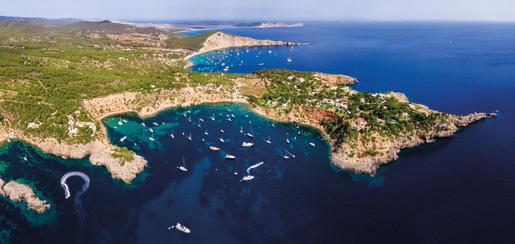
Around the southern tip, 10km west of Ibiza Town, lies Sa Caleta beach, collared by distinctive orange cliffs. Part sand, part rock, the site features some Phoenician ruins dating back to 654 BC.


Further along, Cala Jondal is one of the most popular Ibizan beaches, with a sun worshippers and the odd famous face.
Restaurants like Es Savina, right on the waterfront, or beach clubs like Blue Marlin and Tropicana keep visitors fed, watered and entertained.
Those seeking something quieter might prefer to anchor at Porroig, a stunning cove further along. Later, taking in the sunset off the island’s western tip at Cala d’Hort makes for a stunning end of the day, overlooking the 400-metre high white rock of Sa Vedra before heading back to port.
On land at this spot, adventurous visitors are known to clamber up Sa Pedrera to ‘Atlantis’, above a remote cove considered to have mythical qualities. Its sharp-edged rocks are remnants of an ancient quarry, carved out in order to build the Lost City of Atlantis, so the myth goes.

It is a labyrinth of caves, rocks, holes and sea pools, and is a beautiful spot from which to watch the sun set behind Sa Vedra. On your way down you will pass a ‘witch’s cave’ where, if superstitious, you must leave a possession at the entrance or risk having bad luck...




Another day trip from Ibiza Town, this time up the east coast, initially in the direction of s’Argamassa. A small, secluded southfacing beach, s’Argamassa offers an array of water-sports, while beach clubs like Nikki Beach and Seasoul are perhaps an option for those looking to chill.
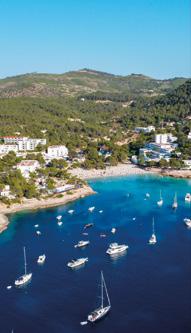
Further up is the white- crested surf of Aigües Blanques , with views over the nearby private island of Tagomago . With white sands and rocky areas, this beach area is less developed and is popular with locals. It is also an official nudist beach. At the northern tip is Portinatx , a resort with three beautiful beaches that are particularly popular with snorkelers and divers.

Formentera, the smaller of the ‘pine islands’ or Pitiusas, as Ibiza and Formentera are collectively known, is sometimes referred to as a ‘secret’ island, being somewhat off the beaten path. Formentera may lack its own airport but it’s been no stranger to ‘A List’ visitors since the 1960s and 70s, when the likes of Jimi Hendrix, Bob Dylan and Pink Floyd came to stay.
Minimal development has preserved this island’s pristine, Maldives-like beaches and waters. Moor up off Ses Illetes, either on a buoy or anchored in sand (with the aid of the anchoring service) and enjoy what is regarded

It’s low-key chic, with much of the

evening action consisting of cocktails and perhaps some dancing outside a ‘chiringuito’ shack with a DJ, on the beach. There are some nightclubs to be found near ‘Es Pujols’ bustling seaside promenade, but that isn’t what most visitors come for.
Off the northern tip of Formentera lies the –connected, at low tide–uninhabited private island of Espalmador, popular with snorkelers and picnickers. The islet is famous in the region for its sulphurous mud

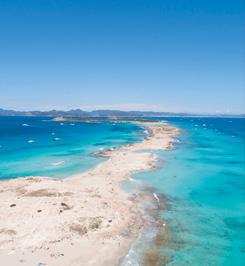
technically not permitted, this is widely disregarded.
Return to Palma
sightseeing, shopping, or activity before



For your own personalised Balearic itinerary, or for guides to golf, diving, wine tasting, gastronomy, hiking, climbing, events, family activities, entertainment, as well as our restaurant recommendations around the islands, just get in touch!





fronda.com















One is more certain to influence men, to produce more effect on them, by absurdities than by sensible ideas

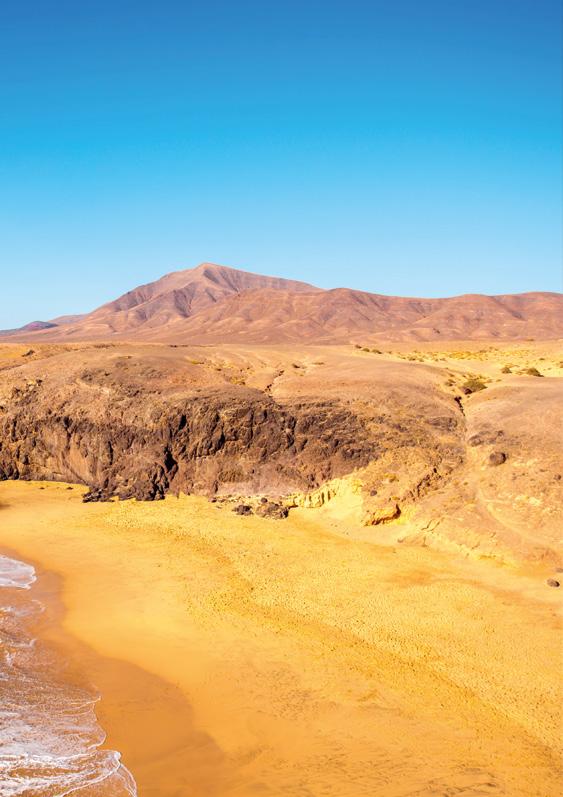

WhileGibraltar isn’t a yachting destination in its own right, it is of course a popular stop for taking on VAT-free fuel and for clearing out of the EU. One way or themselves in ‘Gib’ for at least a couple of days each year.
The Peninsular War started in 1805 and lasted for seven years, as Napoleon’s forces sought to capture Gibraltar -- held by the British since 1713 -- and disrupt British naval dominance in the region.
Having been heavily defeated by the British in the Battle of Trafalgar, despite support from the Spanish and Portuguese, the French continued to launch attacks, but were ultimately unsuccessful. The British victory had important implications for the balance of power in Europe and helped drain Napoleon’s resources from campaigns in Egypt and elsewhere.

The Rock of Gibraltar was an instrumental staging point and supply depot in British military and naval history, and today remains a British Overseas Territory.

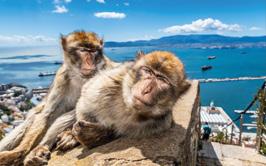
Aside from getting a big shop done at Morrisons supermarket, there are some things to see and do if you’re at a loose end in Gibraltar.
The Gibraltar Museum houses a fascinating array of cultural and natural history collections, prints, paintings, drawings and objects from 127,000 years ago to the present day. The museum’s displays include ‘Nana and Flint’, two forensic reconstructions of a woman and child, based on two pre-Neanderthal skulls found here in 1848.
Memorial, marking the achievements and comradeship of American and British Navies during World Wars I and II.
Gibraltar famously has many tunnels, totalling 52 kilometres in length. An underground mini city was built by the British, housing a garrison of 16,000 men with enough supplies for 16 months. There was an underground telephone exchange, a power generating station, water distillation plant, hospital, bakery, ammunition magazines and a vehicle maintenance workshop. Tours of the World War II Tunnels can be booked in advance.
Moorish Castle 1160, before being destroyed when the Spanish re-conquered Gibraltar in 1309. The Tower of Homage, its main feature, was rebuilt after the Emir of Granada recaptured the Rock in 1333.
The 19th century was Gibraltar’s heyday, as a staging post on the vital route from the Mediterranean to India after the opening of the Suez Canal in 1869. During WWII, ‘Admiralty Tunnel’ became the Royal Navy’s commanded ‘Operation Torch’, the Allied Forces’ invasion of French North Africa in 1942.

Among the many military monuments and memorials are the American War


Gibraltar’s mercantile links with North Africa drew a large number of Jewish merchants after the British
and today it remains home to a sizeable Jewish community. There are four synagogues here, of which

the 1759 Flemish Synagogue and 1724 Great Synagogue are great examples. The old Jewish Cemetery acknowledges the important role the Jewish people have played in shaping Gibraltar’s history.
Barbary Macaques are the territory’s most popular tourist attraction. The tailless monkey is native to the Middle


Atlas Mountains and the Rif Valley in North Africa. The primates here on the Rock are wild, but given the large number of visitors to their patch, they’re unafraid of getting up close and personal with people. A cable car to the top of the rock runs every 10-15 minutes from Alameda Gardens at the southern end of Main Street.
curry. Here are some of our casual dining recommendations:

Indian: Little Bay in Ocean Village Marina; Raj’s Curry House in
Moroccan: Taste of Marrakech in Governor’s Parade.
Spanish/tapas: La Tapilla Sixtina in Chatham Counterguard.
Vegetarian/vegan: The Kasbar in Castle Street.
Grill: Rendezvous Chargrill,
Fish/seafood: Dolphin Restaurant & Beach Bar in Camp Bay Rosia Road.
Italian/pizza: 4 Stagioni, Saluting Battery; Nunos At The Express, Devil Towers Road.
Cafés: Sacarello’s in Irish Town; Café Solo in Casemates Square; My Wines in Chatham Counterguard.
Pub/grub: The Lord Nelson in Casemates Square; O’Reilly’s in Ocean Village Marina.
Another aspect of Gibraltar is its unique legal and tax status outside of the EU. The absence of a VAT system here, but no VAT applies to the purchase of yachts either.
Additionally, there are no capital gains, inheritance, or wealth taxes in Gibraltar, which can be advantageous for yacht owners. has a number of other advantages, both from a legal and practical perspective. Being a Category I member of the Red Ensign Group, the international recognition, security and protection derived from that.
Legal title of ownership upon registration, or transfer of ownership, is straightforward, fast and transparent. The Register and ‘Blue Book’ are public record and open to inspection by interested third parties,

The Gibraltar Register enables owners to dispose of the yacht easily, in a cost-effective and timely manner. All
legal mortgages are required to be registered, enabling interested parties to ascertain whether a yacht is free from encumbrances or registered liens.
As a British Overseas Territory,


procedures for cruising in EU waters or compliance with EU regulations.
carried out under TPA.
Currently, some 800 yachts fly the Gibraltar flag and the Registry prides itself on the fast and efficient turnaround of official documents, while surveys are carried out without delay.
For further information on the Gibraltar Register of Shipping, visit www.gibraltarship.com
Tip: For bunkering and/or agency assistance in Gibraltar, contact our colleagues on +350 200 76761, or email gibraltar@estelashipping.net

Staying on the trail of Napoleon, we arrive at Cádiz. Considered to be the oldest continuously inhabited settlement in Europe, yachts regularly pass by on their passage to or from the Gibraltar Strait, though this ancient city itself is worth a visit.
Founded as ‘Gadir’ by the Phoenicians in as early as 1100 BC, Cádiz became a significant stronghold in the Napoleonic Wars. In 1810, the French army attempted to capture the strategic port in a siege lasting two years.


After successfully fending off the Gallic invaders, Cádiz became the birthplace of the Spanish Constitution of 1812, strengthening democracy and limiting the power of the monarchy.

from the outcome of the Battle of Trafalgar, which had taken place just 50 km south of Cádiz, 5 nautical miles off Cape Trafalgar, in 1805.

coalitions during the Napoleonic Wars, the in a planned joint assault on Naples, Italy.
the leadership of Admiral Horatio Nelson.
Despite being outnumbered, ingenious tactics saw Nelson’s ships outmanoeuvre the enemy, capturing and destroying 22 ships without loss.

will do his duty”, followed by “Engage the enemy more closely” were, famously, to be his last.

The defeat undermined Napoleon’s perceived dominance, turned allies into enemies, and hampered his colonial ambitions. Only three years after the loss at Trafalgar, in 1808,

Start your walking tour in Plaza de España, a bustling square adorned with beautiful gardens, fountains, and palm trees. Here stands the Monument to the Constitution, commemorating the Spanish Constitution drafted here in 1812, during the Napoleonic era.
A ten-minute stroll away is the imposing Catedral Nueva, with its gleaming golden dome. The imposing cathedral took 116 years to complete, so the mix of styles is evident.
Inside are some intricately designed chapels and ornate baroque imagery to enjoy. The composer, Manuel de Falla, is buried in the crypt. His ‘Amor Brujo’ is played by the City Hall clock.
The adjoining belltower, Torre De Poniente, was completed in the 18th century and is the highest point in the city. The walk to the top is mostly via a spiral ramp and absolutely worth it for the 360° view over the city and coastline. Beware the bells ringing every 15 minutes and cover your ears, as the sound won’t do tinnitus sufferers any good at all.
The nearby Roman theatre dates back to 70 BC and had a capacity of 20,000. It was discovered by chance in 1980 and is the oldest of its kind in Spain.

Torre Tavira is the highest viewpoint after the cathedral. Aside from glorious views, its unique attraction

projecting a view of the entire city, in real time, into a darkened room.

The city’s Puertas de Tierra walls divide the new city, built around the remnants of the old defensive wall at the entrance to the city. It separates the Old Town (referred to simply as ‘Cádiz’) and the modern part of the city, popularly known as ‘Puerta Tierra’, built on reclaimed land.
The liveliest part of Cádiz is the La Viña, where there are many bars, cafés and restaurants to choose from. La Viña is also where the city meets the sea at one of its smaller beaches, La Caleta. It is the perfect spot to try a typical local dish of ‘piriñaca’ (mackerel with tomato and pepper salad) or any of the varied
Andalucían seafood dishes. For an informal supper, head for Calle Virgen de la Palma, or Calle Zorrilla’s tapas bars or take a stroll along the 3 km long La Victoria seafront, with plenty of terraces overlooking the ocean.
The neighbouring Santa María area features many historical landmarks, with stately residences and grand neo classical buildings. Walking up towards tranquil San Francisco Square, La Santa Cueva is an underground chapel adorned with Goya paintings.
more than anything by the province’s wines and by the wide selection of including prawns, Norway lobsters,


Nearby Jerez means a wide range of sweet, oloroso, or manzanilla wine from Sanlucar are omnipresent. Local brandies too are typical of the region. While most local dishes involve frying of some kind, there is also a good selection of high end cooking on offer.
Michelin lists no less than four one-star restaurants, plus the outstanding three-star Aponiente , set in a tide mill dating from 1815. Styling himself as “chef of the sea”, Ángel Le ó n wins plaudits for creativity and sustainability, which includes the salvaging of discarded fish. Saltwater, plankton and seaweed all feature, creating what the guide calls “pure culinary magic.” www.aponiente.com



The Canary islands are linked to Napoleon only as one of the locations that housed a number of French prisoners captured by Spanish defence emperor’s elder brother, Joseph (‘Giuseppe’) Bonaparte, installed as king of Spain, some 21,000 soldiers surrendered at Cádiz and in the battle of Bailén.
barges, the prisoners were distributed around Spain and the Balearic Islands, with the Canarian archipelago taking in more than 2,000 over time. After the war ended in 1813, a large number of these soldiers, most of whom had enlisted at 14

to 16 years of age, had become acclimatised to their new ‘home’ and opted to stay. They would be required to swear allegiance to the Spanish king and ‘Castilianise’ their


case with the scorched island of Lanzarote. Beautiful or not, its landscape is striking and unlike anywhere else on the planet. Lanzarote is not your typical superyacht destination.
The easternmost of the Canary Islands with its charred landscape may not have seen violent volcanic activity for two hundred years, but crevices in Lanzarote’s ’Fire Mountains’ remain hot enough to fry an egg. NASA once trained for Apollo moon missions here, to prepare astronauts for the unearthly scenery they would encounter in space.
ESTELA brought a group of superyacht captains and brokers here for a ‘famtrip’ in April 2022, to introduce the island and showcase the facilities that Lanzarote has to offer the yacht industry. It’s fair to say that our guests were very pleasantly surprised.

The island’s most celebrated and artist and architect, planner, designer,

landscape artist and conservationist, César Manrique. The landscape is peppered with Manrique sculptures, wind toys, signs and architecture, while road layouts and planning policy were also directed by him.
Jameos del Agua (or ‘volcanic tunnels of water’) was Manrique’s
to showcase the harmony between

nature and artistic creation. A number of collapsed volcanic tubes were transformed into a concert hall
underground lake and a swimming pool that only the king of Spain is permitted to swim in.
Manrique’s home in the village of Haría is now a museum. Hewn out of volcanic rock, ‘Volcano House’ is an evocative arrangement of shapes and curves, as is his trademark. Preserved exactly how he left it on the day he died abruptly, the studio is scattered
draped over a chair and paint tubes left untouched.
While the landscape in Timanfaya National Park is a creation of a series of volcanic eruptions over six years from 1730, the layout of the park was also masterminded by Manrique and is designated a UNESCO Biosphere Reserve.


Outside the Timanfaya visitor centre, guides give entertaining demonstrations that display the potency of the still-active ‘Islote de Hilario’, while the ‘El Diablo’ cafeteria uses natural geothermal heat to cook food. In an area outside the kitchens, you can feel the volcanic heat coming off glowing magma twelve metres below, while chickens roast above the hot layers of basalt rock.
Another example of Manrique’s method of forging from the landscape, rather than constructing on top of it, is found at Mirador del Río, created in 1973.

Manrique had been stationed at this vantage point during military service in Franco’s army, from where he admired the panoramic view over neighbouring La Graciosa. He returned years later to create a dining space wrapped in glass, burrowed into the hillside, along with an outdoor viewing gallery. Perched on a cliff

400 metres above Famara beach, it provides another stunning view of mother nature in all her glory.

To be expected in an arid environment with the lowest rainfall in ‘Europe’, cacti are popular. As such, in the Jardin de Cactus at Guatiza, visitors can explore more than a thousand varieties of the prickly plants.
The proliferation of cacti on Lanzarote was historically not only for aesthetic reasons. The prickly pear cactus was introduced here from Mexico in the early 19th century, to farm parasitic cochineal beetles, which produced a valuable red dye used in the textile industry.


decimated the demand, Lanzarote remains a small producer, as cochineal is still used in cosmetics and food colouring. And it is even used in Campari, so don’t forget to toast Lanzarote when you order your next negroni!
Continuing on the Manrique trail, short stops to consider are the farming village, Casa Museo del Campesino, and the contemporary art museum at Castillo de San Jose. Arriving at the farming museum, you will be greeted by a landmark Manrique monument, in honour of the island’s farming community.
The photogenic, whitewashed cubed village itself is unmistakably Manrique. It is set in the ‘Valley of a Thousand Palms’, where a new tree is planted each time a baby is born in the area.


Tenerife wines are best known among the Canary Islands producers, though Lanzarote’s viniculture methods aren’t seen anywhere else in the world, apart from Santorini, Greece.
In contrast with most of the vegetation growing before the months-long volcanic eruptions in the 1730s, the grapevines survived intact. The same vines also escaped the phylloxera disease that decimated Europe’s vineyards around a hundred years later, meaning that Canarian wines come from the oldest vines on the continent.

While Lanzarote’s soil is less fertile than others’, the ash coating helps it to retain what limited moisture there is, which is crucial in the absence of spring water. It protects subsoil from erosion, stems evaporation
and retains thermal warmth. Above ground, the vines are dug into a shallow hole, protected by semicircular stone walls that shelter the plants from the wind.
Grape varieties are mostly white, with lots of Malvasia grown here, as well as Gual and Marmajuelo, though Listán Negro and Vijariego Negro reds are also harvested. These wineries are worth visiting for their uniqueness.
There is more to Lanzarote than just its incredible volcanic topography and black sand. In the remote north there are small coves to explore and surfers’ favourite spot, Famara, while there are several golden stretches of beach such as Papagayo, in the south.



Lanzarote’s volcanic scapes are course. Beneath the water lie steep cliffs and extensive shelves with great biodiversity, with drop-offs to 200m around the coast and plateaus between here and La Graciosa or Fuerteventura.

Puerto del Carmen is the most popular spot, with a wall that descends from 15 metres to 40 metres, offering a range of recreational and technical dives. For advanced divers, one of the favourite sites is La Catedral, with a max depth of 33m. Dusky grouper, hammerhead and angel sharks, stingrays, turtles and dolphins can be seen here. Agujero Azul, or Blue Hole, is a volcanic tunnel, lit by shafts of light passing through along the way. It is home to
ending up at a cave with plenty of wildlife. Pecios del Barranco is a dive site containing three sunken

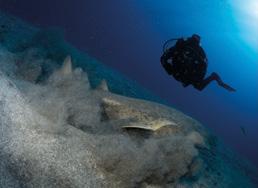
of marine life. Easy shore dives can be found at Puerto del Carmen, to 18m and with good visibility day and night, accompanied by groupers, rays, tuna, barracuda, moray eels, octopus


Lanzarote has remarkable dry-farming prowess, where it comes to cultivating its own produce. Cereals, vegetables and other crops are grown on volcanic
Kamezí in Playa Blanca, Lilium in Marina Lanzarote, Coentro in Puerto Calero, and El Risco, in Famara.

A key consideration when visiting the Canary Islands is anchorage and mooring, places. The good news is that Lanzarote and La Graciosa have a number of anchorages and marinas suitable for yachts up to 80 metres.
Aside from essential facilities such as fuel, chandleries and shipyards, visitors designer boutiques.
Lanzarote’s marinas are a popular stop-off point for passing yachts and with busy social and sporting programmes, they are a lively and safe place to be stationed for cruising or throughout the winter.
engineers with anything they need. Contact us at lanzarote@estelashipping.net
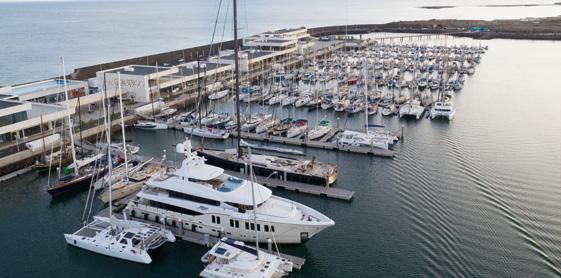



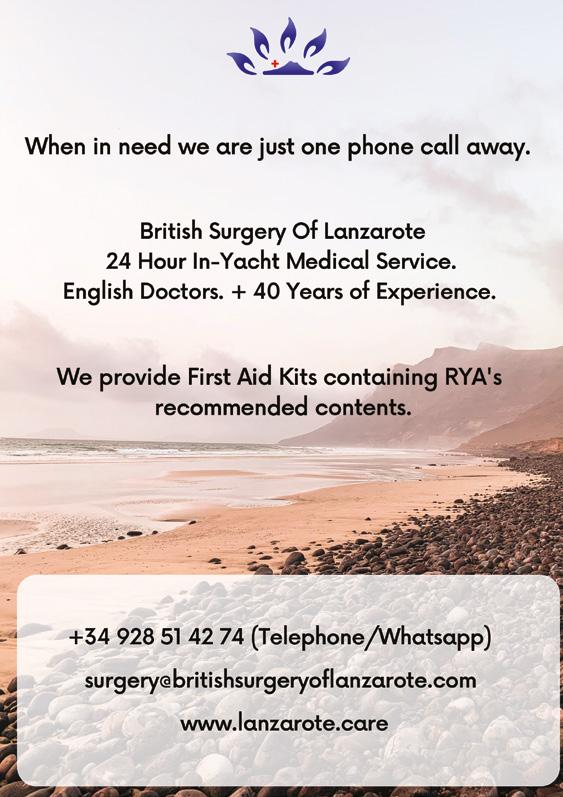











Whatever you ardently and passionately desire, that you obtain.

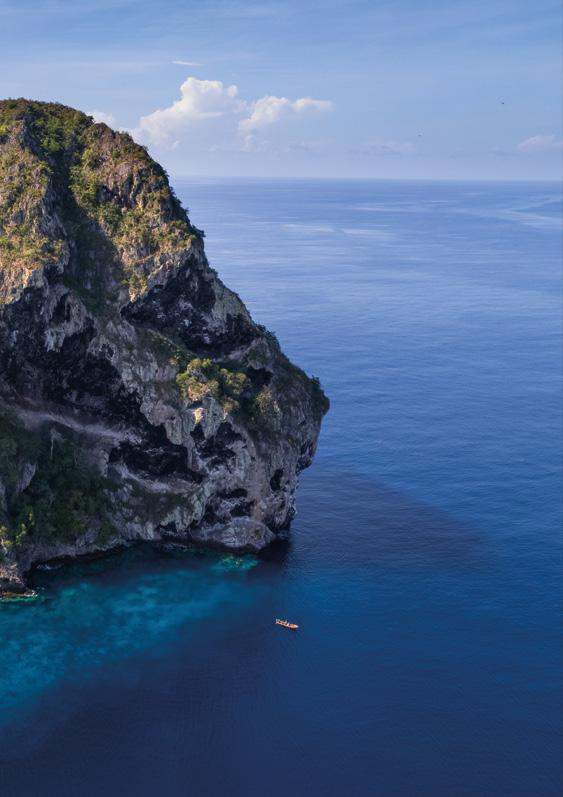


Marie Josèphe Rose Tascher de La Pagerie, in 1796. Rose, or ‘Joséphine’, as the emperor called her, was the daughter of Creole sugar planters, descended from French aristocracy, with a plantation in Trois-Îlets in Martinique. While she was baptised and grew up here, historians now believe she may, in fact, have been born in neighbouring St Lucia.
Like most planters, Rose’s parents grew crops to make money and ultimately return to France. This ambition had them arrange a marriage for their daughter
to politician and general, Alexandre de Beauharnais, shipping her off to Paris in 1779 at the age of 16. They were
children, before his death in 1794. As a suspected aristocrat who was deemed to have performed poorly in his military command, de Beauharnais was arrested and jailed, together with his wife, and subsequently guillotined.
Rose was released three months later and met Napoleon, then just a young and year. She was an elegant, charming and well-connected widow, six years his senior, who spoke with an alluring Creole drawl. He was captivated.
“She had a certain something which was irresistible”, Napoleon later said. “She

letter to her in December 1795, he wrote: “I



the intoxicating pleasures of last night, allow my senses no rest… A thousand kisses, mio dolce amor: but give me none
Without the production of children, let alone an heir, their marriage would eventually be doomed, not helped by numerous affairs and dalliances on both sides. However, their mutual affection ran deep and throughout his ascent to the top and the conquering campaigns, Joséphine was the power behind the throne.

Joséphine’s early life in tropical Martinique had left her with a lasting passion for plants and near their residence outside Paris, which became a sanctuary for rare and exotic plant species and where 250 species of rose could be found.

She


her rare varieties of rose seeds from wherever they travelled, earning her the nickname, “Empress of Roses”. As a patron of botanic science, many of the plant species she collected or cultivated now bear names related to her. However, one variety would remain elusive.
Lacking the required pigmentation, it is scientifically impossible to cultivate a blue rose naturally, even today. This hasn’t stopped historical novelists from fictionalising Napoleon’s search for a blue rose variety, to send to his beloved Joséphine.
your guests demand blue roses on board, ESTELA will move heaven and earth to accomplish something that even an emperor couldn’t pull off!

Like French Guiana and Guadeloupe, Martinique is an ‘overseas department’ of France, meaning that it uses the euro, has Carrefour and Auchan supermarkets, Citroën and Renault main dealerships and even two branches of Galeríes Lafayette.
More densely populated and cultivated than most Caribbean islands, it would be possible to forget that you weren’t actually in mainland France, were it not for the tropical landscapes and the warm winter climate. Martinique is 80 km long and 35 km wide, making ‘The Pearl of the Antilles’, as she is sometimes called, not much larger than New times the size of Antigua.
Also known as ‘The Island of Flowers’, the lush landscape ranges from the peaks of the active



volcano, Mont Pelée (last erupted in 1932) in the north, to pristine white-sand beaches in the south. In between lie verdant rainforests and waterfalls, pineapple and banana plantations
Another feature is an incredible diversity of it resembles a giant botanical garden. Around a quarter of the 400,000 population live on the island’s west coast, in the cosmopolitan capital, Fort-de-France.
Formerly ‘Fort Royal’, Fort-de-France is a busy commercial port (also


is useful for taking on supplies and provisions in the region. The airport (FDF, TFFF) is served by as well as direct North American and other European connections, making it a convenient embarkation point.

While the island’s capital is unlikely to captivate visitors for an entire day, there are a number of points of interest to explore. What was once surrounding swampland is now urban sprawl, though in the centre stands some attractive late 19th century architecture.
In January 1839 the city was partly flattened by a devastating earthquake, while another natural disaster followed in 1890, with 1600 homes destroyed in a wildfire that left half its 12,000 population homeless.



Directed from Paris, the rebuild of Fort-de-France included the piece-bypiece disassembly of the Bibliothèque
Schoelcher, built for the French capital’s 1889 ‘Exposition Universelle,’ before being shipped entirely to Martinique. Standing near the north corner of La Savane park, the 19th century wrought iron, wood and glass library, designed by Gustave Eiffel contemporary, Pierre-Henri Picq, is a lovely nouveau mix of styles that is worth a closer look. Named for the French abolitionist, writer and politician, Victor Schoelcher, he donated 10,000 books to Martinique, to provide culture for all after the abolition of slavery. Less celebrated here is ‘Empress Joséphine’, born across the bay at Les Trois-Ilets and whose statue had stood in the park opposite since 1859. In 1990 the monument was decapitated and doused in red paint,
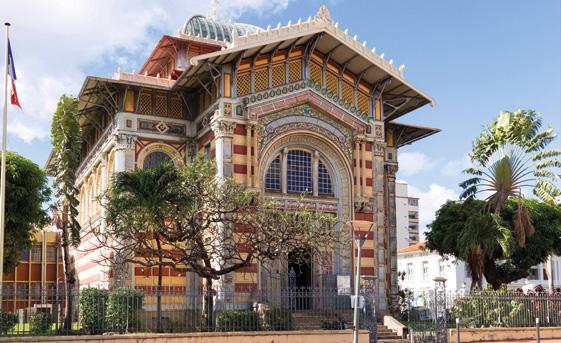
in protest against the commemoration of a woman who brought about the reintroduction of slavery in the French Antilles, to save her family’s plantation with free labour. The statue’s head was never recovered, while the plinth and torso, since then covered in paint annually, was protests in 2020.



constructed entirely in steel, the earthquakes and cyclones, while the interior stained glass tells the story of the city. Being close to the cruise port, pick your time to visit carefully, or risk it with the hordes.

Another nearby building by Picq is the Saint-Louis Cathedral, completed in 1895 on the site of the previous cathedral, which had been destroyed by a cyclone in 1891. With a frame

While the Grand Marché agri market town may be fully stocked for chefs and provisioners at daybreak, there is little to see after mid-morning.




The standout visitor attraction here is the fortress around which the city was built, constructed in the late 17th century to defend France’s new colonial outposts in the region. Set on a rocky promontory above the port, overlooking Flamands Bay, it is the city’s oldest building and one of the best preserved fortresses in the Caribbean.

the French West Indies and Guiana -- its interior spaces are off-limits. However, guided tours of the ramparts are entertaining and educational, and provide wonderful views to the Carbet mountains to the north and Cape Soloman to the south. Green iguanas are also a common sight here, thought to have escaped or been released from a zoo that was housed in the fortress during the 1800s.
Should you be here in mid February, don’t miss the annual Mardi Gras carnival, timed to coincide with the start of Lent. Many elements are shared with other Afro-Caribbean carnival celebrations, but with a few Martiniquan quirks.
It kicks off with ‘Fat Sunday’ (in 2024 this falls on February 11th), which is a day where anything goes, with garishly costumed revellers parading through the streets, playing

by competing towns and villages. The next day of celebrations is ‘Fat Monday’, a day for burlesque; with mock weddings where the men dress up as pregnant brides or blonde harlots, while women parade as glum, reluctant bridegrooms.
Shrove Tuesday is Red Devils Day, with troupes of adults and children wearing devil costumes and carrying spears, reminiscent of Mallorca’s ‘Correfoc’ rituals.
Trivia: Flamands Bay derives its name from the 250 (out of 1,600) Dutch Jews expelled by the Portuguese from Brazil in 1654, who were allowed to settle in Martinique for their sugar growing expertise. Their settlement, ‘Cul-de-Sac Royal’, came to be known by the French as ‘Baie des Flamands’, as the Flemish (Dutch) speakers were referred to.



Ash Wednesday for most Christians means prayer and abstinence, but Martinique goes the other way. It is ‘La Fête des Diablesses’ -- or, the ‘feast of shedevils’-- where some 30,000 people gather to mourn the end of carnival. Only black and white costumes and make-up are worn and the ‘celebrations’ are fuelled by copious amounts of freeflowing local rum.

A 15-minute drive north of Fort-deFrance are the botanical gardens of Balata. In 1982, horticulturist, landscape designer and poet, JeanPhilippe Thoze, returned from world travels to his childhood home, belonging to his grandparents. His travels and passion for botany inspired him to turn this classic Creole house and grounds into a tropical paradise.
as ponds, monkey bridges and treetop examples of botanical gardens in the region. Maintained to a high standard, with stunning views over surrounding hills and valleys, this is a must-see stop on any visit to the island. Hummingbird feeding stations and benches are dotted along the paths, making it an enjoyable experience for young and old.


To see more of Martinique’s lush interior, take a road trip along the RN3, known locally as ‘La Route de la Trace’. This winding road starts at Fort-de-France and ends at the village of Grand’Riviere, on the coast at the northern tip of the island.
Aside from Jardin de Balata, it takes in many of Martinique’s top beauty spots among the rainforests and plantations. After the botanical gardens, next up is Gorges de la Falaise, a picturesque river, popular with hikers.

Continuing on the RN3, you’ll pass by the majestic Pitons du Carbet, a series of volcanic peaks that dominate the skyline. The island’s highest peak, Mount Pelée, isn’t strictly in the Carbet range, but offers challenging hiking and rewarding views for nature enthusiasts.
Continue through Morne-Rouge village, passing a beautiful church with a distinct red roof, then stop at ‘Rivière de l’Émeraude’ which is a scenic spot for swimming and picnics. At Habitation Saint-Étienne take a rum distillery tour and explore the lush grounds.
The end of the road, literally, is at the village of Grand’Rivière. Nestled between the mountains and the sea, this little town has rustic charm and a blackened beach, where the seafront café, Le Grill Riverain serves classic creole cuisine.
Before setting off south towards the best beaches and coves Martinique has to offer, we head to Saint Pierre, 26 nautical miles up the coast, north of Fort-de-France.
The town was the cultural and economic centre of Martinique before Mt. Pelée’s volcanic eruption on 8th May, 1902. The disaster


claimed the lives of an incredible 29,000 inhabitants, with just 123 locals surviving. The warning signs of volcanic activity had been there for weeks, documented in letters to
was a phenomenon new to scientists and caught the town off guard. Hot gases, ash and rock erupted from the volcano with such speed and force,


it obliterated everything in its path. Today, it remains the world’s deadliest eruption since 1883.
Around the town, a number of blackened sites remain on display, including the 18th century theatre, a replica of one in Bordeaux with 800 capacity. An underground jail cell also remained intact. The occupant at the time, one Louis-Auguste Cyparis, had been awaiting trial for stabbing a friend to death in a drunken brawl, but ended up as one of the few volcanic survivors, protected from the inferno by his dungeon’s thick walls. Cyparis would go on to join Barnum’s Circus in the US, under the stage name Ludger Sylbaris, “The Man Who Survived the Last Judgement”, showing off his burns
Other charred remains are the old church, trading houses, and the ‘Maison Coloniale de Santé’


sanitarium, complete with metal restraint chairs. Restored in 1991, ‘Rue Monte au Ciel’ was a seedy stepped alleyway frequented by dockers, sailors and soldiers, here to drink and make merry with ‘ladies of the night’.
Saint Pierre is popular with scuba divers too, with some 40 boats having reefs full of marine life. Sponges and dive sites in the Babody canyons (to 40m) attract shoals of barracuda and other large varieties.

Back in the town, Musée Franck
Perret is a small museum chronicling the history and events around the Mount Pelée eruption, with artefacts, photographs and exhibits. Just out of town is the Centre de Découverte des Sciences de la Terre, an earth-science museum dedicated to
Mont Pelée and volcanology. The presentation of exhibits and displays leaves something to be desired, but the best element is a one-hour cinema showing about the 1902 eruption and the volcanic aspects of the Caribbean
in English, but is highly informative for those interested in volcanology.
Depaz is one of a number of rum distilleries on the island, open to

visitors. Just a short walk out of the town, the Depaz Distillery is famous for its production of rhum agricole, a type of rum made from freshly squeezed sugar cane juice. Visitors can take guided tours of the distillery and learn about the rum-making process, and sample different varieties, such as vintage ‘rhum vieux’ (vintage rum), the


Heading south by boat from Fort-de-France, we cross the bay to the area of Trois-Îlets, the birthplace of Joséphine Bonaparte. This municipality’s western coastline is where Martinique’s most popular anchorages can be found, with sandy beaches, crystal waters, mangroves and the warm, lapping waves of the Caribbean Sea.
The town itself owes its name to the three small islets it faces. It has a small leisure marina and a golf course that is beautifully laid out, but poorly
maintained. While there are some decent enough restaurants, shops and cafés, this is little more than a base from which to explore nearby beaches and dive sites.

The birthplace of Josephine de Beauharnais, or Marie Josèphe Rose Tascher de la Pagerie, the future empress Bonaparte, is now a small museum, set on the former estate where she

The museum offers a glimpse into her life, showcasing the history and artefacts associated with her time in Martinique, with various rooms restored to reflect the period when she lived there. There are personal items, memorabilia, furniture, and artwork that provide insights into her upbringing, family background, and the cultural context of the time. There are love letters from Napoleon as well as a copy of the marriage certificate, doctored to take six years off Joséphine’s age, giving her the same year of birth as her husband.

Additionally, the museum highlights the history of the plantation and its role in the sugar industry, which was a during that period. The grounds are well maintained and only ruins of the sugar mill remain, but the museum is worth a one-hour guided visit.




eco-museum set in beautiful grounds, where a village has been reconstructed, consisting of 15 traditional huts of the kind that would have housed plantation workers. It is designed to provide insight into the slave trade and the history, culture, and daily life of AfroCaribbean communities in Martinique.
Throughout the museum, there are displays of living spaces, workshops, tools, utensils, and artefacts used by enslaved people and their descendants. There are demonstrations of traditional skills and crafts such as basket weaving, pottery making, and herb preparation.
Exhibits, videos and demonstrations are all in French, so arranging a guide or translator is advisable, but this is a highly rated experience for visitors of all ages.
Heading south along the coast from Trois-Îlets, there is a succession of sandy beaches, coves and bays, making it easy to explore any number before deciding where to drop anchor or come ashore for a beach day.
Starting from Anse Mitan, there are Anse Noire and Anse Dufour, before arriving at the long arc of white sand at Grande Anse d’Arlet, best known for its long boardwalk and pretty church just set back from the beach.
Waters here are fabulous for snorkelling and scuba diving, where turtles are often to be found among a wide range of colourful marine life.


Next along the coast is Anse Caffard, where a memorial was erected in 1998 on the 150th anniversary of the abolition of slavery. ‘Les Mémoires des Esclavages’, or ‘ Cap 110 ’, as it is commonly referred to, is a poignant sculpture consisting of 15 busts arranged in a triangle, facing the sea, symbolising victims of slavery in Martinique. It looks out to the spot where an illegal slave ship was shipwrecked in 1830, claiming the lives of 40 people who drowned in shackles, along with many crew. ‘110’ refers to the work’s placement, oriented at 110 degrees, the course at which the ship sailed from its likely origin in the Gulf of Guinea.

Opposite Anse Caffard stands a gemshaped volcanic rock islet, jutting out 175 metres from the sea.
This is the most famous dive site in Martinique, reminiscent of Ibiza’s Es Vedra, with caves, arches and drop offs. The area is brimming with barrel sponges, moray eels, and schools of damselfish among the colourful corals. Green and Hawksbill turtles are not uncommon, while the light and visibility make this site particularly great for photography. The foot of the rock stands at between 15 and 40 metres depth, though strong currents mean this spot is probably for experienced divers only.
Hugging the coastline eastward, we pass a number of coves and small strips of sand, mostly

frequented by guests of the numerous hotels and holiday accommodation along this stretch. The next major beach is the palm-tree lined crest of sand at Anse Figuier, though you
strip, at Pointe Borgnèse, which is less accessible from inland.

The large sheltered bay at the south of the island is home to Martinique’s only superyacht marina, with berths up to 60m, with a draft of 4.6m and a fast fuel dock. There are small shops, boutiques and local restaurants in the marina itself, while close by are French supermarkets Auchan, Carrefour and Leader Price. None are hypermarkets, but are well stocked with a wide variety of familiar brands. Shopping trolleys can be brought to the water’s edge, where a dedicated tender dock is handy if out at anchor.
The Pointe Marin beach at the southern tip of the bay is mostly a locals beach for residents of nearby Sainte-Anne village, who are spoiled for choice with Plage Municipale and La Balançoire beaches close by and Les Salines just down the road.



Sainte-Anne is a typical Creole village with colourful wooden houses, small shops and businesses, a local market, and a number of bars and restaurants. There are several hiking trails starting here, making it a good spot from which to explore this part of Martinique on foot.

Back on the water cruising around the head towards Les Salines, a lesser-known beach is Anse Meunier, often eschewed by drivers put off by a rocky access road, which is great for boat dwellers.
Les Salines


beach in Martinique, but is among the most beautiful in the entire Caribbean.
While this means that it draws larger numbers of visitors than neighbouring sands, being 1.2 km long usually means there’s enough space for everyone.
White, soft sand, lined with leaning palm trees and beautiful shallow waters make this the quintessential Caribbean experience. The nearby salt pond from which it derives its name, l’Étang des Salines, is a protected wetland and home to 40 species of
migratory birds late in the year. If you prefer your beaches a little wild and deserted, rounding the corner brings us to Anse à Prunes, which will invariably be quieter than the previous spots.
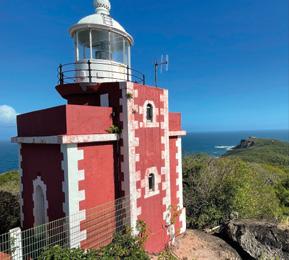

Martinique’s east coast is less developed and more exposed to easterly Atlantic winds, so here you such as Anse Trabaud and the stunning Anse Michel. Here, kite- and while strong swimmers may like to visit the islet, Chevalier, opposite.
Other highlights along this coast include L’Œil Bleu, or the Blue Eye, a rockpool that is as beautiful as it is dangerous, with the swell having claimed a number of foolhardy bathers. The equestrian centre at Cap Macabou offers horse riding treks along the coast, galloping through the rolling waves.
reaching around halfway up the coast, where the Caravelle Peninsula juts out. Before this, at the town of Le Robert, is the largest supermarket on the island, Euromarché, in the Océanis shopping mall.


The Caravelle Peninsula takes its name from the type of ship that carried Christopher Columbus on his voyages, the last of which brought him to Martinique in the late 15th century.

Stretching 12 kilometres into the Atlantic, this nature reserve is a diverse ecosystem of mangroves, dry forests, and coastal vegetation along its cliffs, coves and beaches. It is a superb area for snorkelling, swimming, birdwatching.
The best anchorage here is at Tartane on the north shore, sheltered from easterly winds and where the pretty coastline is dotted with low-rise hotels,

villas and guesthouses among the trees. The vibe in Caravelle is surfer and hipster eco-tourism, enjoying the surrounds of unspoiled nature.
The peninsula’s natural beauty is best experienced on foot through the picturesque trails that wind through the reserve. The longest trail, La Trinité, is an easy half-day hike that takes in all the highlights of the area, including mangrove, tropical forest, prairie, and the best coastal views. One of the standout features is the imposing La Caravelle lighthouse. Perched on top of a cliff, this iconic structure provides the most wonderful panoramic view over Martinique. that housed the island’s largest
sugar and coffee plantations during the 18th century. Château Dubuc was constructed by the Dubuc de Rivery family from Dieppe, who were prominent in the sugar industry. However, during the revolution in the last decade the estate was abandoned and fell into disrepair. A hurricane in

the year that Napoleon was jailed in St Helena -- leaving the château in ruins.
Today, the open air museum consists of a cattle mill and sugar house, former slave dwellings and other structures,maintained with funding
from the European Union. It stands as a fascinating monument to Martinique’s grand colonial heritage, created through the exploitation of an enslaved workforce.
As you would expect, most of the culinary scene on Martinique is of the rustic Caribbean, plastic chairs and tables variety. In Caravelle, however, there are some more chichi bistros and eateries to be found. One upscale boutique hotel and restaurant is French Coco, in Tartane, offering high quality small dishes or a signature menu.






Today’s Antigua is all about tourism and its seafaring visitors tend to be private yachts. They are attracted by its wellequipped marine facilities, making it a great base from which to explore the wider Caribbean region.
An English-speaking population means easy communication around service and repairs, while resident engineers, sailmakers and other service providers here work to high



While for many yachts Antigua is a point of transit, the island itself is an inviting destination. Historical monuments and buildings nod to its naval and colonial past, while its 365 beaches, creeks and coves are among
A busy events calendar, including the annual Charter Yacht Show (on December 4-9th, 2023), RORC 600 regatta in February and April’s Regatta, draws entries and spectators from all quarters of the world.
many of its neighbours is the absence of a lagoon, with Falmouth Harbour Marina and Antigua

in Falmouth Harbour, accessible at all times to the largest of both sailing and motor yachts. Meanwhile, the island’s VC Bird Airport (ANU, TAPA) is well-connected to both Europe and North America.
Another attraction, particularly during the mating season in Spring, is the Barbuda Bird Sanctuary, in Codrington Lagoon, with thousands of frigate birds congregating here in the lagoon when they aren’t in the Galapagos.
Another historical naval military point of interest is Shirley Heights, a restored lookout and gun battery, named after of the Leeward Islands. The Blockhouse a powder magazine, while on a clear day Montserrat and Guadeloupe are visible from here.
Tip: Less easy for captains and yacht managers to navigate in Antigua are its Customs and Immigration procedures, as the country is not part of any customs union or FTZ. For local logistics and agency support, contact our partners at Anchor Concierge

The Victorian Wallings Dam & Reservoir was built around 1900, though the reservoir ran dry during a drought shortly afterwards and was reforested. Now dense with a large number of tree varieties, the area is fertile ground for birdwatchers, with broad-winged hawks, hen harriers, bananaquits and redstarts often seen here.
Betty’s Hope was one of the plantations and mill, founded in 1650. Today, it is a basic, but




Colonised by the British in 1632, Antigua was raided by the French in 1666, drawn by the island’s lucrative tobacco crops and sugar cane. It became a full British colony a year later, with the British having colonised neighbouring Barbuda earlier in 1628, annexed by the larger Antigua in fully independent nation member of the UN and the British Commonwealth in 1981.

Antigua’s Naval Dockyard, in English Harbour, dates back to 1725 when sugar planters offered the port to the British Crown, expecting the Royal Navy to develop it and provide protection from French pirates. The admirals initially saw no strategic need for it, though changed their mind in the 1760s, as attacks from French-controlled Guadeloupe and Martinique increased.
Captain (as he was then) Horatio Nelson arrived in 1784 on board HMS Boreas, and



was stationed here for three years, to protect British interests in the region, enforce law in the colonies and suppress smuggling. This didn’t go down too well with locals, who in turn sought to have Nelson arrested. Thus, he would famously describe English Harbour as an “infernal hellhole” and a “vile spot infested with mosquitos.”

Full scale war in the region wouldn’t break out until four decades later, in 1803, as British, Spanish, Portuguese and Dutch, for Caribbean supremacy.
Later, as larger steam-powered ships were developed, the English Harbour dockyard became disused and fell into disrepair. Restoration only began in the 1950s, when it was renamed Nelson’s Dockyard, as part of a new National Park encompassing other historical and natural sites, becoming a UNESCO World Heritage site in 2016.
interesting, open air museum and restoration project, chronicling the Caribbean sugar cane industry and the slavery that enabled it.
Family or crew activities on-land include shooting, paintball or archery at Reservoir Range in Potworks Dam, ziplines and canopy tours in the rainforest, horse riding, buggy tours and Caribbean cooking classes.
Particularly with children, but for adults too, an outing to Stingray City is a treat. Knowledgeable rangers ensure that interaction with and feeding the wild rays is done safely, treating the animals with great care. This trip can be easily combined with a visit to Laviscount Island, a private island that is home to a Giant Aldabra Tortoise sanctuary, with more than 50 of the prehistoric animals. There are also iguanas, parrots, walking trails, and places to snorkel.


With 365 beaches and bays to choose from, you won’t have to cruise far to some of our favourites.
Rendezvous Bay , on the south coast west of Falmouth and a 30-minute walk away from the nearest car parking.

Half Moon Bay, on the eastern tip of the island, is protected from open sea by a crested reef and from winds by



surrounding woodland. Beyond the reef water can be choppy and is therefore popular with (wind)surfers.
It gets busy on weekends, but is worth a visit during quieter times. Green Island, as the name would suggest, is a small private island off Antigua’s eastern coast and is only accessible by boat, making it one of the quieter spots. There are a number
of sandy beaches to choose from, all offering great snorkelling, soft sand and little else.

Less secluded is Carlisle Bay, with the upscale Carlisle Bay Hotel nearby. As it offers the best snorkelling for tropical can get busier than others.
Hawksbill Bay, to the west, near the island’s capital, St John, has four beaches to choose from, one of which, Eden Beach, is the only dedicated nudist beach on the island.

Deep Bay boasts a wreck as a point of interest for snorkelers and divers, while turtles are often spotted around here.
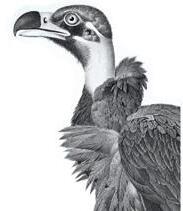

For that unique Instagram photo, there’s an iconic British red telephone
box at the southern end of Dickenson Bay beach, though the beach itself can get crowded. There is a Sandals resort here and a local turf war rages over sunbeds and parasols, so get your shot and then set up camp on neighbouring Runaway Bay beach.
For land-dwellers, Soldier Bay (also known as Bush Beach) is quite off the beaten path, making it quieter for those coming by boat.
Jolly Beach , on the west coast, offers a mile long powder white sand, with a selection of restaurants, water sports and shopping nearby.
Of course, there are no ‘Michelin’ ratings here, but that’s not to say that there isn’t great food, service and atmosphere to be found around the islands.

A long-time crew favourite in English Harbour remains Abracadabra, home to many a crew party, but also serving high quality Italian cuisine.
On Sunday evenings, Shirley Heights Lookout hosts a barbecue and party, where for the past 35 years people have converged to enjoy grill-cooked lobster and cocktails, watch the sunset and dance to soca, reggae and calypso music. If you can’t wait until Sunday, the popular spot hosts a more relaxed Thursday afternoon ‘Reggae Heights’ session too, with a steelband and chilled reggae music accompanying food and drinks. shirleyheightslookout.com
Cecilia’s High Point Cafe in Saint George serves Mediterranean cuisine with a Scandinavian twist, in a romantic seaside setting, right over the beach. highpointantigua.com

Another favourite is The Fox House in Jolly Harbour, serving homegrown farm-to-table Creole cuisine, cocktails and a decent wine list.
thefoxhouseantigua.com
Nomad, in St John’s serves fresh surf & turf, renowned for its steaks and burgers, alongside the catch of the day, with a varied old and new world wine list. facebook.com/nomad.
antigua/


Owned and operated by French proprietors with a deep hospitality pedigree, Colibri in English Harbour serves French/Cajun/Creole cuisine in a rustic garden setting. colibriantigua.com

Onelook at a map of the South Atlantic makes it clear what the British had in mind when they banished Napoleon here. Having rather too easily, they were taking no chances this time…
Napoleon thought he was being banished to America in 1815, so he may have been somewhat disappointed to end up in St Helena. Located 1900 km from West Africa and 2900 km from South America, this British Overseas Territory was the farthest place from anywhere, ensuring no second escape.


He arrived in St Helena after ten weeks at sea aboard the British navy ship, HMS



Northumberland, and was put up in The Briars, before moving to Longwood House. The property was said to be cold, inhospitable and infested with rats.
The Governor of St Helena was charged with guarding the former emperor and supplying his provisions, though the men had a frosty relationship, due to the governor’s refusal to address his


the relationship became more cordial and a new Longwood House was under construction as Napoleon died, on May 5, 1821, aged just 51. He had spent the last African wine and dictating his memoirs.
Armchair sleuths have written countless theories about the cause of death. Napoleon suffered prolonged abdominal pain, constipation, incessant hiccups and thrombophlebitis in the months leading up to his death. Whether he was poisoned deliberately or chose to ingest it voluntarily, perhaps out of despair, the fatal element was a large dose of calomel, a medical treatment high in mercury.
Returning the body to France required permission from the British, though no request came from Paris until twelve years later. Nineteen years passed before

it was the king’s son who brought back the body in September 1840. His frigate arrived at Le Havre and sailed up the


Seine in a snowstorm, with most of the city turning out to watch the procession
place in the Dôme des Invalides. Inside the casket, at his feet, lay an urn containing his heart. In his will, he had requested that it be sent to his wife, Marie-Louise, who declined to accept it.
“I die prematurely, murdered by the English oligarchy and their hired assassin; the English people will not delay in avenging me.” Napoleon
Okay, an admission. We’re including St Helena just for fun and to conclude around these parts you are likely to be either lost, or on an explorer yacht en route to somewhere farNapoleon trail, of course.
Should you call in, the only place to arrive is James Bay at the capital, Jamestown, where the 5,000 locals, referred to as ‘Saints’, will welcome you warmly. The only anchorage is off the capital, Jamestown,
The sole dock, at Rupert’s Bay, is exclusively for cargo vessels. The island welcomes some 200 transiting sailing yachts each year.
Only recently has the island been accessible to visitors by air, with an international
airport opened in 2016, offering Namibia, and Johannesburg. While ‘British Overseas Territory of Saint Helena, Ascension and Tristan da Cunha’, a single territorial grouping under the sovereignty of the British Crown, Ascension island lies 1600 km northwest, and Tristan da Cunha 2,800 km southwest of here. The island is equivalent in size to Disneyworld in Orlando, Florida, or to San Francisco, but with just 0.5% of its population.
Of course, its very remoteness is its claim to fame, being ideally suited to be used as a prison and
resident here was a 16th century Portuguese soldier, who defected to the Indian army during the assault on Goa. Fernão Lopes was tortured
chose to exile here in 1516, living in solitude for 30 years.

built on the instruction of Britain’s East India Company in 1683. Not only was it enough to be gaoled in St Helena, but under maximum security conditions, prisoners were kept in irons and chained inside its hellish dungeon. The original building was replaced in 1827 by a new prison still in use today.
After Napoleon’s time here, the British also sent Prince Dinuzulu Kacetshwayo, King of the Zulu nation, here for

seven years in 1890. Sayyid Khalid Bin Barghash Al-Busaid, the Sultan of Zanzibar arrived in 1917, because the British favoured another successor to the throne. Because of the ‘unsuitable climate’ in the South Atlantic, Khalid persuaded his captors to transfer him and his entourage to the warmer climes of the Seychelles in 1921.
Aside from unsavoury rulers in exile, St Helena has been used to house 5,500 Boer prisoners of war; the dedicated Boer Cemetery is the last resting place of 180 South Africans, with a memorial listing their names. Zulu poll tax prisoners were held here and the ‘Bahraini Three’, prominent members of the National Union Committee in Bahrain, deposited here at the request of the Bahraini government.




“When I am gone, English travellers will sketch this garden created by Napoleon. They will all want to visit it.” Napoleon


After WWII, the new Longwood House was demolished to make room for a dairy, while Napoleon’s

preserved, along with original furniture from 1821. A restoration of the room where he died was completed in 2014, based on a watercolour painting by one of the emperor’s physicians while on his deathbed.
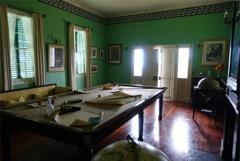


The house, outbuildings and gardens contain some 900 artefacts, though Napoleon’s personal belongings were distributed among family in France. One of the original Longwood chandeliers hangs in
residence at Plantation House.
Today, all of St Helena’s Napoleonic attractions, including Longwood House, Briars Pavilion and Napoleon’s Tomb, are owned by the French Government.
While Longwood House is by far and away the biggest attraction on the island, here are another few sites to visit here.


not to be missed is Jacob’s Ladder, linking Jamestown and the clifftop Ladder Kill Fort, via a 699-step climb at a 40° incline. Rising to a height of 180 metres, a plaque states the fastest recorded ascent at 5 minutes and 16.78 seconds, set by Scotsman Graham Doig, from Inverness, in 2013. The engineer and keen cyclist took part in a charity challenge to raise funds for a local youth charity, beating the previous record on his eighth attempt.


A number of spectacular hiking trails criss-cross the island, the most
popular of which is Lots Wife’s Pond, a 4-hour round trip that takes in many of the key sights. A guide takes you down a steep, bumpy track to the start at Sandy Bay in a 4x4 vehicle, where rusty old cannon lay on a black sand beach, near the remnants of Napoleon-age
along a path along riverbeds and into the Cairns, with great ocean views,
with a rope-guided descent to some pools for a swim.
For something more pedestrian after all these energetic pursuits, perhaps check out the local grog, with a number of homemade products brewed and distilled here, for that special gift or souvenir to take home. The St Helena Distillery, the world’s most remote, of course, makes its own particular ‘White Lion’ spiced rum, prickly pear ‘tungi’ schnapps, and ferments wine from imported South African grape juice.
Alternatively, try the distillery’s own Midnight Mist Coffee Liqueur, a coffee and rum concoction, or the island’s


Scuba diving here can be spectacular. Water temperatures range between 19 and 25°C, and visibility can extend up to 40 metres, in places, with


own Jamestown gin, made with the rare Bermuda juniper berry, which grows here.
Black gold coffee is also grown here, from plants descended from green-tipped Bourbon arabica seeds,

Beans are for sale around the island, or try a cup from the coffee shop in the harbour. Napoleon was said to be a fan, calling the coffee ‘the only good thing about St. Helena’.
peak visibility from December to May. Volcanic rock formations and numerous wrecks are frequented by a wide variety of marine life.

sighted during a single day. St Helena Island is the only known location in the world where adult male and female whale sharks congregate in equal numbers, for mating. Divers must be led by local guides.
Cetaceans are the main attraction, with bottlenose and pantropical dolphins spotted year-round, while rough-toothed dolphins are also seen. Between June and December, humpback whales can be spotted off Jamestown, accompanied by calves from July onwards.

Whale sharks visit St Helena between December and March every year, with more than 30 individuals sometimes


and black marlin, tuna, wahoo, dorado and barracuda. Fishing is an important resource to the island, relying heavily on the sea for fresh produce. Its exclusive territory extends to 200 miles offshore, leaving these waters largely unexplored and unexploited.
It’s fair to say that dining in St Helena doesn’t offer too many options, while seafaring reviewers readily admit that their rave reports may be skewed by best Asian food in a thousand miles” may be inarguably true, but it is also meaningless, of course.
By common consensus, the best place in town to eat is Anne’s Place, a family run business for the past 20 years. Its traditional home-cooked menu includes its ‘legendary’ curry and paella (what’s not to love?); as well as black the world, often signed by the crews that donated them.












Shipyard Services:

• Hoisting Capacity of up to 820Tn
• 14’5mt travel lift pit
• Electricity (220V, single phase +Nup to 63 Amps & 380V, 3-phase +N up to 250 Amps)



• Fresh water
• Fire main
• Air conditioning cooling water
• Grey and black water discharge
• Compressed air
• Forklifts & mobile cranes
• Antofouling
• Painting
• Rigging
• Sail Repair
• Carpentry
• Machining & welding
• Propulsion and auxiliary engines – MTU, Caterpillar, Deutz, MAN, Cummins, Reintjes
• Stabilizers
• Electronics, navigation and communication system servicing and installation

• Refrigeration & AC
• Classification Societies – LLOYDS, ABS, DNV, GL, BV, RINA






In order for us to assist you with your arrival in Spain, please note the following requirements:
Inform us with your ETA and the name of your previous port
Upon arrival, you must present an ARRIVAL NOTICE to the authorities, if your previous port is not in Spain Should your previous port be in a NON-EU country, you must submit an ARRIVAL CLEARANCE
For us to handle this on your behalf, please send us the following documentation:

ARRIVAL NOTICE
Please note you must declare any cash on board above €100,000, or the equivalent in any other currency
CASH TO MASTER
If you require cash on board, you can transfer money to us by bank transfer and withdraw cash, using our CTM transfer above €9,999.
Should any non-EU crew disembark and leave the island -- temporarily or permanently, passports must be stamped by authorities on departure and upon return to the vessel. Non-EU
details or evidence of booked accommodation.
- Crew & Guest List
ARRIVAL/ DEPARTURE CLEARANCE
- Passports (all the crew and guests on board)
- Seaman’s Discharge Books (if applicable) or SEAs/contracts
Captain, to present to immigration authorities.
is required. To obtain a licence, we require the registry of the vessel and photocopy of the passport of the captain, as the licence pertains to activity and passport copy must be submitted.
Certain parts of Balearic waters are protected and a permit is required for scuba diving. Contact us for guidance prior to diving and to obtain your permits.
In the Balearics, it is compulsory for all users (crew or guests) of personal watercraft, such as jet skis, to have a licence. Failure to produce a licence, if a PWC licence can be arranged ON BOARD your yacht.
!It is prohibited to anchor in the commercial port area of Palma -- including in the bay, in front of the cathedral -- without prior authorisation. Without permission, the authoriarrange for permission to anchor, discharge waste and use the tender to come ashore for any reason. Port fees are payable in each instance.
For full PWC regulations in Spain and the Balearic Islands, visit: bit.ly/JETSKIRULES or scan:


All vessels exceeding 500GT must have pilotage in Palma’s commercial port areas. Failure to do so can result in a

Anchoring in National Park and protected areas of the Balearic Islands requires prior authorisation.
DRONE LAWS
bit.ly/ESTELA-SpainDroneLaws
Or scan:


To book a buoy at Cabrera, you can apply up to 21 days in advance of the desired date. Buoys are limited and during peak times, are usually fully booked on the day of release. Contact us to check availability and to book your buoy. Max LOA at Cabrera is 35m, fees and taxes apply.
The Balearic Islands’ Ministry of Agriculture, Environment and Regional Planning has a number of online resources and navigational tools to assist with anchorage in protected bit.ly/ anchorage-Estela


! We strongly advise captains to heed the guidance designed to protect the sea bed, in particular the posidonia seagrass. Fines for anchoring in prohibited areas can be eye-watering and the most egregious cases can even lead to a custodial sentence. Patrols are carried out by
and remotely, by drone and satellite. Offenders are also named and shamed by the authorities on social media.

Cabrera may be freely enjoyed for the purpose of tourism and leisure, including and all activities that do not disrupt or alter the landscape, or natural values and cultures of the park. For any query regarding visiting Cabrera, please contact us.
ACTIVITIES THAT REQUIRE AUTHORISATION
• Scuba diving
• Sailing and anchoring
establishment

• Tourist guiding
PROHIBITED ACTIVITIES
• Disposal of waste
• Smoking, other than in the designated area
• Extraction or removal of any natural material
• Removal or alteration of any archaeological object or element
• Collection/capture of materials or organisms
• Planting or removal of plant and animal species
• Anchoring/berthing outside of the authorised area
• Camping
• Hunting, trapping or shooting
• Fishing
• Walking outside of designated areas, paths and trails
• Diving in Apnea during the months of May
ESTELA’s resident expert on Spanish immigration laws, Kristy Hollingsworth, provides an update on the latest rules and regulations for yachts entering or leaving Spanish ports.
When a yacht arrives from outside the European Union, for example from
Gibraltar, Morocco, Melilla or Monaco, all passports, Seaman’s Discharge
Books and/or copies of crew members’ contracts, stamped and signed crew -
cate of registration must be presented. The authorities will issue an authorisation letter of entry clearance into the EU. The same applies in reverse

if Spain is the last EU port before departure from the Union. Once all documentation has been received and to exit EU waters.

Any crew member who is signed on to a yacht as a seafarer (with Seaman’s Book or work contract) is permitted to leave the boat and move freely around the entire island without coming to Border Control in Mallorca. In ports around the rest of Europe, crew are restricted to a 10km radius from where the yacht is berthed.

Shore travel restrictions
i. If a crew member leaves the yacht and travels beyond the permitted radius, the relationship between seafarer and yacht is broken; in this event they are now merely a tourist. To avoid this, crew members need to present their passport, Seaman’s Book or contract, and copy of yacht’s registry to port authorities.
ii. When a crew member joins a yacht, the same process applies; their passport will be stamped out embarked on the yacht.
iii. Crew members are not permitted to go to eg. Barcelona, France or
signed off and ceased to be a seafarer. If a crew member wishes to leave Mallorca, they are required to present to Border Control and enter the EU formally. Even if a crew member holds an EU passport, they are still required to present to border police, the police database.
iv. Since the beginning of 2023, port police in Palma have been declining to stamp in (ie. OFF the boat) anyone not travelling back to their home country. In other words, leaving the boat for a side trip or shore leave, regardless of whether the destination is in the EU or not (with valid Schengen visa or not), has become disallowed.
published about this, but before planning travel, bear in mind that port police may decline to stamp you off.
‘Consignatarios’ (consignees), like ESTELA Shipping, are required to be used in all visa and transit visa applications, as these may only be requested by cosignatarios, regardless

If a non-EU crew member fails to visit Spanish border control upon arrival by sea to obtain an entry stamp from the authorities before disembarking from a yacht, they are illegal citizens in the country. In a passport check, they can be detained, returned home and refused entry into the EU for up to three years. Such a simple mistake can prove costly and upsetting, so it is advisable to always check with a consignee to ensure you comply.
i. A passport is the responsibility of the crew member to whom it belongs. While the captain must inform crew of their obligations and ensure documentation is complete and up to date, responsibility for the requisite stamps remains with the crew member.
ii. In the event that the captain omits to follow correct procedures, such as failing to advise Border Control when crew are embarking or disembarking, or failing to check crew passports to ensure they have the requisite stamps, they may be considered willfully negligent. Fines, or even a custodial sentence, can be issued if a captain intentionally fails to comply with their obligations.
Where a yacht arrives into an EU port from within Europe but from outside the Schengen Area — such as Melilla, Gibraltar, United Kingdom, Ireland, or Cyprus— they are required to obtain arrival clearance into the EU. Likewise, when they depart the Schengen Area for a non-Schengen jurisdiction.

i. When the yacht is cruising within the Schengen Area, there is no need to inform port authorities.
ii. When the yacht departs the Schengen Area with guests on board, all guest passports must be presented to port authorities.
When a crew member’s contract expires
i. When a crew member’s contract runs out and they are no longer contracted on board, they must attend Border Control to enter Spain. They cease to be a seafarer and are now a tourist, requiring them to complete due process.
ii. In the event that they are

work contract, they must present a valid passport, Seaman’s Book, if applicable, and declare their if needed.
iii. In the event that they intend to stay in the country, they must present applicable travel visas,cal insurance.
iv. If they are EU citizens, they must present their passport to certify that they can legally enter the EU.
A Schengen transit visa provides a limited number of ‘transit days’, enabling seafarers to get to the yacht from their home country, or vice versa. The visa provides a grace period from the time of departure —usually three days— to get to their destination, in either direction. Requirements to apply for a transit visa depend on of the seafarer.
Seafarers from outside the Schengen Area and who are not covered by a valid Schengen tourist visa, are required to have a valid Schengen transit visa whenever they intend to:
a. Join a vessel that is (or will be) in a Schengen port;
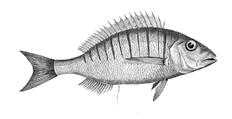

b. Transfer from one vessel to another vessel which is (or will be) docked in a Schengen port;
c. Disembark for any reason, including end of contract, sickness, repatriation, urgent family matters, holiday.

i. A transit visa does not allow for holiday travel through Europe and is valid for transit only. Anyone caught doing otherwise can be detained, returned home and denied entry into the EU for up to three years.
ii. Tourist visas are valid for no longer than 90 days and are valid strictly for leisure travel in the EU. They do not permit the holder to work, or to seek work, on yachts or anywhere else within the EU. Anyone caught doing so can be detained, returned home and denied entry into the EU for up to three years.
If in doubt about visas, travel and work restrictions in Mallorca, Spain or elsewhere, contact us us on +34 971 722 532, or email palma@estelashipping.net

Mallorca is busy year-round and it is advisable to get your bookings in as early as possible.
1. STP (Servicios Técnicos Portuarios)
Muelle Viejo, Palma
39°33’50”N - 2°38’23”E
MAX LENGTH:120M
DEPTH: 7.5M / BERTHS: 53
2. Marina Moll Vell
C/ Moll 8, Palma
39°33’59”N - 2°38’33”E
MAX LENGTH: 42M
DEPTH: 5M / BERTHS: 25
3. Astilleros de Mallorca
Contramuelle Mollet 11, Palma
39°33’59”N - 2°38’22”E
MAX LENGTH: 120M
DEPTH: 7.5M / BERTHS: 53
4. Marina Naviera Balear
Avenida de Gabriel Roca 4, Palma
39º 33’30’’N / 2º 38’00’’E
MAX LENGTH: 30M
MAX DRAUGHT: 4M

BERTHS: 60 / VHF Ch.8
5. Real Club Nautico
Muelle de Sant Pere, 1, Palma
39°33’52”N - 2°38’2”E
MAX LENGTH: 35M
DEPTH: 4M / BERTHS: 971
6. Marina Port de Mallorca
Avenida Gabriel Roca, s/n, Palma
39°33’49”N - 2°37’48”E
MAX LENGTH: 50M
DEPTH: 7M / BERTHS: 200

7. Pantalan del Mediterraneo
Avenida Gabriel Roca, s/n, Palma
39°33’42”N - 2°37’48”E
MAX LENGTH: 128M
DEPTH: 7M / BERTHS: 61
8. Marina Cuarentena
Avenida Gabriel Roca, s/n, Palma
39°33’40”N - 2°37’44”E
MAX LENGTH: 60M
DEPTH: 7M / BERTHS: 70
9. Club de Mar
Muelle Pelaires, s/n, Palma
39°33’22”N - 2°37’45”E
MAX LENGTH: 350M
DEPTH: 10M / BERTHS: 575
A. Port Calanova

Avenida de Joan Miró, 327
39°54’N - 2°59E


MAX LENGTH: 25M
DEPTH: 7M / BERTHS: 172
VHF Channel 9
B. Puerto Portals
Portals Nous, Calvià
39°32”N - 2°35”E
MAX LENGTH: 60M
DEPTH: 4M / BERTHS: 639
C. Port Adriano
Urbanización el Toro Calvià
39°29’21”N - 2°28’40”E
MAX LENGTH: 80M
DEPTH: 7M / BERTHS: 480
D. Club De Vela, Puerto de Andratx
Av. Gabriel Roca 27, Puerto de Andratx
39°32’41.2”N - 2°23’05”E
MAX LENGTH: 60M
BERTHS: 222
E. Puerto de Sóller
C/ Moll Comercial, Puerto de Sóller
39°47’41.7”N - 2°41’21.3”E
MAX LENGTH: 60M
BERTHS: 465
F. Puerto de Alcudia
Paseo Marítimo, 1, Alcudia
39°49’58.1”N - 3°08’20.3”E
MAX LENGTH: 30M
DEPTH: 4M / BERTHS: 744


Online, download the Spain-wide app, ‘1Taxi’, here: www.1taxi.es/’

PHARMACIES
Farmacia Progrés Plaça del Progrés 1
(Santa Catalina)

07013 Palma
MEDICAL SUPPORT
Balearic Pharmacy Finder
bit.ly/BalearicPharmacyFinder

marina delivery
Open 09:00 - 21:00h
+34 673 246 107 (mobile/WhatsApp)
+34 971 733 021
naval@farmaciaprogres.com
Balearic Hospital Directory
bit.ly/BalearicsHospitals
NATIONAL EMERGENCY: 112
HOSPITALS - MALLORCA
Hospital Universitario
Son Espases
C/ Valldemossa 79, Palma
+34 871 205 000
Hospital Son Llàtzer
C/ Manacor
+34 871 202 000
Hospital Quirónsalud
Palmaplanas (Private)
C/ dels Reis 08, Palma (Ma-20 Exit 5B)
+34 971 918 000









Posidonia Oceanica is a seagrass species that is endemic to the Mediterranean sea. It forms underwater meadows that are a vital part of the marine ecosystem and is therefore protected under environmental legislation.

Vessels are strictly forbidden from dropping anchor, or any part of the anchor chain, on the seagrass.

Because superyachts are the anchoring on posidonia can be truly eye-watering, by any measure. To add insult to injury, yachts are also named and shamed by the authorities via social media. The ultimate sanction for the most egregious offenders can be a custodial sentence, so it is vital that you take the utmost care when anchoring.
Each season, hundreds of boats are while transgressions are tracked via AIS

The good news is that entirely avoidable. As Balearic experts, ESTELA keep abreast of local rules and regulations, ensuring that our clients know to avoid anchoring in forbidden locations. recommend that you install the is designed to help you avoid the seagrass. Being an organism, the exact plant locations are variable, so the maps in the app are only as good as their latest manual update. It mustn’t be taken as gospel, in other words, but
If in any doubt about where, and where not, to anchor, contact us at palma@estelashipping.net or call +34 971 722 532 and we will assist you.
Install the posidonia mobile app:







EMERGENCY DEPARTMENTS
Police ............. 091
Civil Guard ........ 062
Fire ............... 080
Medical ........... 061
Coast Guard VHF 16, +34 900 202 202
Pilots VHF 14/16, +34 610 717 876
Medisub Decompression Chamber
+34 666 444 999 / +34 971 73 16 47

Local Civil Guard
Palma ............ 971 774 100
Alcúdia ............ 971 546 908
Local Police
Palma ............. 971 281 600
Balearics-wide ..... 092

Mediterranean Coastal Radio +34 900 507 607

Meteorological information
+34 906 365 307
Croatia joined Schengen on 1 January 2023, obviating the need for clearance upon entering from or to is the euro.
EMERGENCY DEPARTMENTS
Police .......... 192
Fire ............ 193
Medical ........ 194
Search/Rescue .. 195
Coastguard ..... 9155 or VHF 16, 10, 74
Sea Rescue Service
Coastal radio stations (Rijeka, Split and Dubrovnik) receive messages 24h round the clock on VHF-channel 16 and on the following channels:
NATIONAL EMERGENCY: 112
Rijeka Radio: ....... 21, 40, 4
Split Radio: ........ 21, 23, 07, 28
Dubrovnik Radio: ... 7, 4

Detailed anchorages: bit.ly/ESTELA-AnchoragesCroatia

Or scan:

Tourist tax for yachts
Online payment of tourist tax for vessel owners or users: https://nautika.evisitor.hr/product/ vessel-over-20-meters/


NB. Tourist tax is payable by vessel length or number of people on board)
Waste disposal for yachts over 45m Registration of waste is mandatory for representatives or agents of ships with 300GT or more, and yachts with LOA of 45 metres and over.
A “Declaration of Ship Waste” form must be submitted with the port authority. To open the interactive map, visit: bit.ly/ESTELA-CroatiaMarinas

ROVINJ
ACI Marina Rovinj
+385 52 813 133 aci@aci-club.hr
45°05,0’ N 13°38,0’E

To 100m
PULA
ACI Marina Pula
+385 98 398 837 aci@aci-club.hr
44°53.2’ N 13°47.7’ E
To 55m
OPATIJA
ACI Marina Opatija
+385 51 704 004 aci@aci-club.hr
45°18.9’ N 14°17.8’ E
To 40m
ZADAR
D-Marin Borik
+385 23 333 036 borik@d-marin.com
44°07’ 54’’N, 15°12’36’’E
To 70m
KORNATI ISLANDS
+385 22 786 0278 aci@aci-club.hr
43°53.2’ N 15°18.8’ E
To 40m
ACI Marina Piškera
+385 91 470 0091 aci@aci-club.hr
43°45.8’ N 15°22.4’ E
To 40m
Marina Betina
+385 22 434 497 info@marina-betina.com
43°83.6’ N 15°64.8’ E
To 40m
ŠIBENIK
D-Marin Mandalina
+385 22 460 800 mandalina@d-marin.com
43°43’ 0’’ N, 15°54’ 3’’ E
To 70m
ACI Marina Skradin
+385 22 771 365 aci@aci-club.hr
43°82.9’N 15°92’ E
To 70m
Port Authority of Šibenik
+385 22 218 001 www.portauthority-sibenik.hr
Port Authority of the Šibenik-Knin Region
+385 22 219 852
info@cpa-sibenik-knin.hr
PRIMOŠTEN
Marina Frapa Rogoznica
+385 22 559 900 frapa@marinafrapa.hr
43°31.80’ N, 15°57.78’ E
To 50m
SPLIT ACI Marina Split
+385 21 398 599 aci@aci-club.hr
43°50.4’ N, 16°43.6’ E
To 90m
Marina Kastela
+385 21 204 010 marina@marina-kastela.hr
43°32.7 N 016°23.9 E

To 100m
TROGIR
ACI Marina Trogir
+385 21 881 544 aci@aci-club.hr
43°30.7’ N 16°14.6’ E
To 30m
ACI Marina Milna
+385 21 636 306 aci@aci-club.hr
43°20.3’ N 16°24.9’ E
To 35m







HVAR
ACI Marina Vrboska
+385 21 774 018
aci@aci-club.hr
43°11.5’ N 16°42.1’ E
To 35m
Korkyra Marina
+385 91 141 4700
info@marina-korkyra. com
42°57’38.9”N 16°42’49.2”E
To 100m
STON
DUBROVNIK
ACI Marina Dubrovnik
+385 20 455 020
+385 98 398 813
aci@aci-club.hr
42°40.2’ N 18°03.5’ E
To 45m
+385 21 744 995
aci@aci-club.hr
43°10.1’ N 16°23.8’ E
To 40m
ACI Marina Slano
+385 20 441 721
aci@aci-club.hr
42°79.8’ N 17°91.9’ E
To 50m
Marina Frapa Dubrovnik
+385 20 422 266
+385 20 422 275
dubrovnik@marinafrapa.hr
42.6575° N, 18.0821° E


To 100m
+385 20 711 661
aci@aci-club.hr
42°57.8’ N 17°08.4’ E
To 50m





Most yachts visit Egypt only to transit the Suez Canal and the country’s superyacht industry is still in its infancy, so it is essential to use a local agent not only for transit, but for coastal navigation too. We recommend working with our partners, Leth Agencies, as a knowledgeable and dependable local agency (lethagencies.com/egypt).
NATIONAL EMERGENCY: 112
currently neither foreign nor local charter operators.
EMERGENCY DEPARTMENTS
Police ............ 122
Fire .............. 125
Medical .......... 123
Tourist police .... 126
Search/Rescue
Cairo: Tel: +20 22418 4537
jrcc136@mod.gov.eg
Alex: Tel: +20 3 484 2058
Port Said: +20 66 322 0625
PORTS OF ENTRY
Alexandria..... 31°11’N 29°52’E
Port Said ...... 31°15’N 32°18’E
Suez .......... 29°58 N 32°33’N
Port Ghalib .... 25°32’N 34°38’E


Safaga ......... 26°44 N 33°56’E
Hurghada ..... 27°13.30°N 33°50’E
Abu Tig ....... 27°24.60 N 33°41’E
Sharm el Shk... 27°51’N 34°17’E
Taba Heights ... 29°22.30´N 34°47.40´E
Coastguard
VHF 16 or +20 62 319 1085
Marina El Alamein (to 60m)
30°49’36”N 29° 0’14”E
+20 46406 1015 info@seagullegypt.com
Marassi Marina Yacht Club (to 140m)
30°57’N 28°45’E
VHF 73
+20 127 848 4107 info@marassimarinayachtclub.com www.marassimarinayachtclub.com
Hurghada (to 100m, stern-to)
VHF 71 and +20 65 34 44 920 info@hurghada-marina.com
El Gouna (Abu Tig Marina to 60m, 3.6m draft)
VHF 16 and 73
+20 65358 0073 info@orascommarinas.com
Port Said Yacht Club (to 40m, 4.0 draft)
VHF 12 and 73
+20 66 3337 165
+20 10 1098 3878
Port Ghalib (to 50m, draft to 4.8m)
VHF 10 or 16
+20 653 700 240
+20 1000 167 679
+20 103 434 708
https://portghalib.com/marina/ services
sherif.fawzy@portghalib.com
Hurghada Marina (to 100m)
VHF 16 or 74
Marina is not a port of entry; yachts
+20 65 34 44 920 info@hurghada-marina.com
Taba Marina (to 40m)
VHF 16 or 77
29°22.30’N 34°47.40’E
+20 1223 972750 marinataba@orascomhd.com
Soma Bay Kiriazi Marina (to 40m)
26.8492789N 33.980991
+20 122 326 0700
Sharm El-Sheikh, Na’ama Bay Yacht
Club
27.90N 34.33E



VHF 12 or 16
+20 69 366 0209
+20 1103 310 351
Safaga Port
26.44N 33.57E
VHF 12 or 16
+20 65 325 6018 contact@mts.gov.eg

Detailed marinas: bit.ly/ESTELA-CorsicaSardiniaElba Or





Marina Bay (to 90m)
36°8’5”N 5°22’5”W
VHF: Channel 71
Tel: +350 200 733 00
Ocean Village (to 90m)
36°8’5”N 5°22’5”W
VHF: Channel 71
Tel: +350 200 733 00

Queensway Quay (to 90m)
36°8”N 5°21’3”W
VHF: Channel 71

Tel: +350 200 447 00
info@queenswayquay.com (Stern-to and bow-to
Alcaidesa Marina (to 90m)
36º09’31”N, 5º22’03”W
VHF 9
+34 956 021 660 marina@alcaidesa.com
Cádiz
Marina Puerto de Tarifa (to 60m)
36.0091°N, 5.6056°W


VHF9
+34 699 594 196 puertotarifa@apba.es
Lanzarote
Canary Islands Pharmacy Finder bit.ly/CanariesPharmacyFinder-Estela (turn off auto-translate in browser)
Health Service
For anchoring information, visit www. noonsite.com/place/canary-islands/ lanzarote/ or contact ESTELA: lanzarote@estelashipping.net
Marina Lanzarote, Arrecife (to 70m)
28º57”N, 13º32”W
VHF 9
+34 928 66 32 63 marina@marinalanzarote.com
Calero Marina, Puerto Calero (to 80m)
28º91”N. 13º70”W
VHF 9
+34 928 511285 info@caleromarinas.com
Marina Rubicón (to 90m)
28.8600°N, 13.8147°W


VHF 9
+34 928 519 012 info@marinarubicon.com
Lanzarote
Hospital Doctor José Molina Orosa
+34 928 807 050
Download a Lanzarote/Fuerteventura
Navigation Chart, here:
+34 928 51 42 74
Avenida de Las Playas, 67, Puerto del Carmen, 35510, Lanzarote, Spain
MARTINIQUE NATIONAL EMERGENCY: 112
Police: 1517
Medical: 15 (or +596 596 75 15 75)
Fire 1518
Maritime 196 (VHF 16, or
+596 596 70 92 92)
Local police +596 596 741 844
SOS Doctors Martinique
+596 596 63 33 33
Nautical gendarmerie
+596 596 741 859
Customs +596 596 749 164
Borders & Air Police
+596 596 528 970
Sea Rescue (Le Marin)
+596 696 24 81 13
La Marina du Marin (to 60m)
14.4716N, 60.8670W
VHF 9
+596 596 74 83 83
contact@marina-martinique.fr
www.marina-martinique.fr Medical
ANTIGUA
ANTIGUA: 911 / 999
Police/All Emergencies 911 / 999
Medical +1 (268) 562-2433
Ambulance +1 (268) 462-0251
Fire Station +1 (268) 462-0044
Coast Guard +1 (268) 462-0671
Red Cross +1 (268) 462-0800
+1 (268) 460-9599
Air/Sea Rescue +1 (268) 462-3062
Hospital – Mount St. John’s Medical Centre +1 (268) 484-2700
Antigua Barbuda Search & Rescue
(ABSAR)+1 (268) 562-1234
Emergency Dental - Dr Sengupta

+1 (268) 464-9738
Falmouth Harbour Marina (to 115m)
18.5004N, 61.9623W
VHF 10, 68
+1 268 460 6054; +1 268 720 5751;
+1 268 464 6055
antiguafalmar@gmail.com
www.antigua-marina.com
Nelson’s Dockyard Marina (to 67m)
17.0069N, 61.7643W


VHF 68
Harbour Master +1 268 464 6941,
+1 268 481 5033, +1 268 481 5035
Immigration +1 268 460 1397
WhatsApp +1 268 764 5022
info@nelsonsdockyardmarina.com
Jolly Harbour Marina (to 61m)
17.0658°N, 61.8865°W

VHF 68
+1 268 462 6041
info@jhmarina.com
jhmarina.com/superyacht-dock-2/
Jamestown
15°55’24.3”S; 5°43’3.5”W

Harbourmaster VHF 14
Emergencies
International Distress:
MF 2,182KHz

VHF 16 (callsign ZHH)
ITU 1217, 807, 414
General hospital +290 22 500.
Customs
When you arrive you will need to check-in with Immigration. This is conveniently located in the Customs Building on The Wharf - the one with the clock tower. Arrival procedures sainthelenaisland.info/informationforyachts.pdf
Banking services on St Helena are provided by the Bank of St Helena from whom further information may be obtained. There are no ATMs on the island and cards are not accepted; cash can be drawn by card over the counter at the bank. Local businesses may accept cash payment in GBP, USD, Euro and ZAR.
The local currency in St Helena is the Saint Helena Pound (SHP) which is linked at parity to the British Pound (Sterling; GBP).
Napoleon was historically one of the world’s military geniuses.

The army is the maximum tool of logistics, and Napoleon’s end began in Russia due to the winter weather and lack of logistics.
Therefore, the yachting business is very close to the art of war, and there is a thin line between a glamorous day and an unfortunate event.
The difference between this is
works to make your dreams reality.
The yachting business is a great engine which must be in perfect conditions and depends on many performance.
Our legal team is used to have an assistance 24/7 to provide in any moment the tailors suit assistance in any event directly or through our correspondents in Europe, Africa, and other parts of the world at suitable prices.
Within our scope we can advise owners, managers, charterers,

enquiry of services. Furthermore, we can cover crew members, and other legal casualties related to them, agents, petrol suppliers and ship handlers. Our assistance goes from a preventive level up to a criminal court defence, and we support legal services of a wide range.
P & I club claims and hull and machinery claims including the repair cost of the casualties are state control detentions - pollution matters, documentary faults. Occasionally a dream-like experience may very quickly turn into a nightmare, therefore legal be of great use. to protect your dreams and defend your rights.
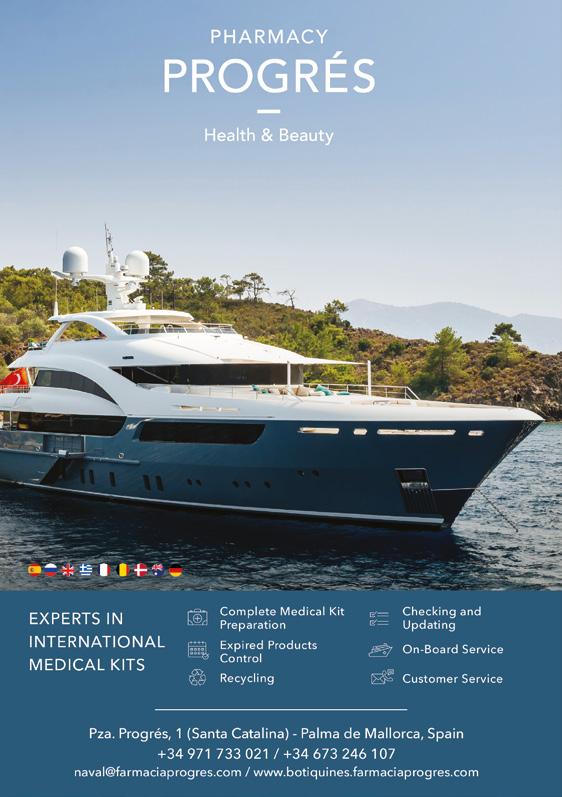


Port Adriano is one of the most modern marinas in the Mediterranean, with an exceptional base for small, medium and large yachts. A unique space for yachting lifestyle.
In the wonderful bay of Calvià, designed by French designer Philippe Starck. Only 20 kilometers from the city of Palma, it offers a surprising experience for its innovative concept in terms of facilities and technology.
The port has a large comercial area and houses a wide range of restaurants, retail and branded fashion shops, real estate agencies and important companies related to nautical with yachts sales and charter, as well as water sports including a sailing, diving and Stand Up Paddle school. The marina’s has 10 restaurants, have large terraces with wonderful views of the yachts. The whole harbour is an idyllic place for a stroll at any time of the year.
In addition to an essential part of the island’s leisure offer due to its attractive calendar of events throughout the year, which makes it a benchmark in the marine sector.
Mallorca is well known destination for Superyachts, which translates into a great number of advantages for

From a technical point of view, it has the latest technologies applied to the marina and exclusive services for crew and customers that make this base, a reference within the marinas of the Mediterranean and the ideal place from which to explore, the incredible offer that Mallorca proposes.
The managers, captains and members of the crew during the winter, and the owners during the international services offered by the private infrastructures, the varied and rich gastronomic offer and the widest leisure offer.


Port Tarraco is located in Tarragona, Catalonia, a destination in the heart of the western Mediterranean. Tarragona is a 2,000 year old World Heritage city.
Thanks to an excellent network of land and air connections, the city is within easy reach of Barcelona and very close to Madrid and Valencia. The marina is a deep-water marina in Tarragona (Spain) designed to provide superyachts with the highest quality services and offers 33 berths from 45 to +160 metres with a 24-hour security service.
Created and equipped to offer absolute privacy and security protocols to ensure personalized services to any kind of superyacht available on the market today, their owners, managers, captains and crews without any limitation. A variety of specialized companies can provide services and supplies to all the superyachts that are moored in the marina.


Designed to combine work and quality of life, Business Pier is a business complex that is at once urban and marine, delivering the best of both worlds. Located within the marina, it provides a truly unique experience. Located just 5 minutes from Tarragona’s city centre and less than 1 hour from Barcelona, Business Pier has been designed to provide an unprecedented location to carry out any sort of business project with vision and scope.
Built with high-quality materials, it is comprised of 6 buildings, with a total built area of more than 13,000 sqm. Numerous companies of very different sectors have established their headquarters in Business Pier’s complex. Our space is designed to welcome all sorts of business.


This map is for guidance only and is subject to changing local regulations and restrictions, which must be observed at all times. Coordinates are approximate only. Anchoring on, touching or disturbing posidonia seagrass in any way is strictly prohibited and must be avoided at all cost. Fines are severe and adherence is
policed vigorously by local authorities, including use of patrol boats, satellite imagery and AIS information. For more information, see bit.ly/ESTELA-posidonia
For real-time support in anchoring, please contact us at palma@estelashipping.net or call +34 971 72 25 32




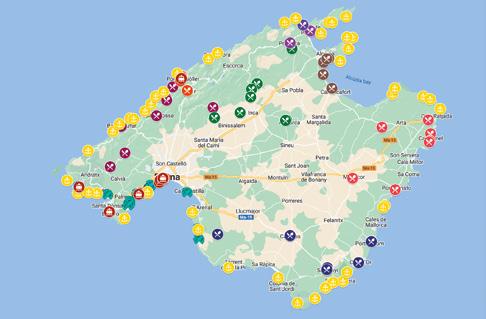





Whether you want to meet superyacht captains, brokers, or B2B industry colleagues, ESTELA can introduce you.ed throughout Spain, Gibraltar and Latin America, and an agency network that covers most major yachting centres, ESTELA’s network is unrivalled.
Face-to-face events are the most effective way of making connections, and in recent years we have developed a highly successful events programme. Whether you are a destination looking to host yacht captains on a promotional ‘fam trip’, a shipyard, or a supplier wanting to meet new customers, we can help.
ESTELA hosts several social gatherings and networking events for captains, crew and B2B partners. We have a presence at the Palma Superyacht
Show, FLIBS, METS, Boot Düsseldorf and others.
In October 2023, we will again host our famous ‘END OF SEASON PARTY’ in Port Adriano. Last year, we were joined by more than 300 captains, crew and industry guests (watch here: bit.ly/EndOfSeasonParty2022), so get in touch if you would like to collaborate.
Next April, 2024, we will be presenting more SUPERYACHT BREAKFAST SEMINARS, where we discuss hot topics in the industry with expert panellists, in front of an audience of 75 captains, senior crew and guests.
During the Palma Superyacht Village, we will also host our annual ‘CAPTAINS’ DINNER at the MUSEUM’, at a prestigious venue in Palma, with 180 invited captains and guests. View the 2023 photo gallery here: estelashipping.es/captains-dinner-at-the-museum-2023.
For more details and sponsorship and collaboration opportunities, please contact Francesco Gennai, on +34 638 816 803 or email
francesco.gennai@estelashipping.net





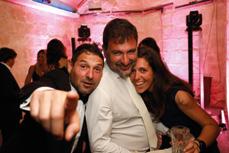





In the Balearics since 1850, Estela Shipping Superyacht Agency (‘Estela Barcelona, Gibraltar, Panama and surrounding areas. We are part of Estela Portugal, Gibraltar and Latin America.
+34 971 722 532 estela@superyachts.agency


Delivery address:
ESTELA Shipping Palma SA
Avenida Gabriel Roca, 37 C (entrada en C/ Pedrera)
07014 Palma de Mallorca - Illes Baleares - Spain
Contacts:

Francesco Gennai (ES, IT, EN, RU, RO)
+34 638 816 803 francesco.gennai@estelashipping.net
Aixa Seri (ES, EN)
+34 682 62 25 74 aixa.seri@estelashipping.net
Erin Bloom (EN, ES)
+34 619 655 955 erin.bloom@estelashipping.net
ESTELA Barcelona
+34 934 853 869
yachts.barcelona@estelashipping.net
ESTELA Gibraltar
+350 20044122
gibraltar@estelashipping.net
ESTELA Lanzarote
+34 683 620 837
lanzarote@estelashipping.net
Itinerary planning - Event tickets - Flights and transfers
Courier/parcel services - Car rental/taxis/chauffeur services
Tax-free shopping - Internet and telephony - Medical support

Arrival, departure, immigration - Visas, licences, passports
Cash to Master, banking - Fuel and lube oil - Charter authorisation Logis-
Provisioning and supplies - Laundry - Accommodation - Transfers Crew activities - Recruitment and training - Medical support

Editor
James van Bregt
Publisher
Miguel Arcos
Director
Francesco Gennai
Production
Graphic Designer
Javier Tubert
Photography
Tito Bosch
Camera
Susana Bravo Serra
Photo Editor

Daniel Mellado
Wardrobe
Vito Tous
Costumes
Sastreria Cornejo
Peris Costumes
Assistant
Aixa Seri
Production Accountants
Silvia Benito
Javier Aradillas
Commercial Support
Enzo Cataneo
Erin Bloom
Props
Arte y Antigüedades
Xarreque
Fronda
Make Up Artists
Cati Duran
Jean Pierre Faivre
Grip
Javi Guardiola
Cast
Alvaro Torres (Napoleon Bonaparte)
Romina Lodeiro
Fernandes (Vivandière Estela)
Ivan Espinoza Navarrete
Damiano Tosi
Pablo Lopez
Nani Mas
Juan José Calero
David Vilamosa
Rita Benedetti
Andrea Cano Fernándes (Josephine)
Jaume Rigo (Joachim Murat)
Guillermo Martínez (General Belliard)
Mahayana de Souza (Pauline Bonaparte)
Francesco Gennai (Mameluke Rustan)
Location
Arab Baths – Palma de Mallorca
Vito’s Home – Palma de Mallorca
A special thanks goes to our partners and advertisers who continued to support support is highly appreciated.

Please click on the link to view our fun promotional video:


If your company would like to collaborate with the 2024/25 edition, please contact us at estela@superyachts.agency for more information.

Francesco Gennai
industry. Francesco is Italian and speaks English, Spanish, Russian and Romanian.
+34 638 816 803 / francesco.gennai@estelashipping.net
Aixa Seri
after day-to-day yachting operations in Palma. Aixa speaks native Spanish

+34 682 62 25 74 / aixa.seri@estelashipping.net
Erin Bloom
to-day yachting operations. Erin spent eight years as Chief Stewardess on has worked in VIP hospitality and events in Scotland and in Spain. In


+34 619 655 955 / erin.bloom@estelashipping.net

Silvia Benito
Silvia joined ESTELA in 2017, bringing with her experience in VIP and Concierge services, and administration management. She heads up yachting and shipping administration and supports our operations. Silvia

+34 687 569 782 / silvia.benito@estelashipping.net
Alvaro Torres
Alvaro joined the commercial shipping team of ESTELA in 2018, and is responsible for commercial shipping operations in Palma. Alvaro speaks
+34 661 385 800 / palma@estelashipping.net
James van Bregt
manages our communications and social media, and hosts our superyacht seminars at the Palma Superyacht Show each April. James is Dutch/ English bilingual and, (still) just about, gets by in Spanish.


+34 696 598 403 / editor@estelashipping.net



Miguel Arcos
Miguel is Managing Director of Estela Shipping. Having assembled a capable team of professionals, empowered to run day-to-day operations, Miguel is always on hand to guide and advise where needed.
miguel.arcos@estelashipping.net


Romy Bourguignon

in French and Spanish and also speaks English.
+34 650 395 113 / yachts.barcelona@estelashipping.net

Gemma Castiñeira
Gemma is a senior yacht agent, having worked in the industry for more than 20 years in Barcelona. Native in Spanish and Catalan, she is also

+34 682 20 36 10 / gemma.castineira@estelashipping.net
Javier Aradillas
Javier is responsible for managing fuel supply and administration. javier.miranda@estelashipping.net



Jorge Marín & Cristina Campos
Jorge and Cristina part of Estela’s shipping team in Barcelona, managing logistics and forwarding.
forwarding.bcn@estelashipping.net
Monica Iren Lungard
operators of Marina Lanzarote and Calero Marina on the island.
+34 683 620 837 / monica.iren@estelashipping.net

Alejandro Lobeiras
In addition to our existing bunkering service, ESTELA now offers a complete range of agency and concierge services on the promontory, under the leadership of manager Alex Lobeiras.

+350 200 76761 / gibraltar@estelashipping.net
+507 832 0834 / Fax. +507 838 8992 panama@estelashipping.net / www.estelashipping.net
Eric Velasquez

Country Manager
+507 661 84615 eric.velasquez@ estelashipping.net

COSTA RICA
Allan Lucas C.

+506 871 11262 costarica @estelashipping.net
Julio Villamil

Magdalena del Mar 15076 Lima (Perú) +51 377 5011 / peru@estelashipping.net
Juan Carlos Shafer

URUGUAY



Diego Cabral
uruguay @estelashipping.net
PRE ARRIVAL
Berth Booking
Arrival Formalities
Visas & Immigration
Customs Formalities
Itinerary Planning
Hotel Bookings
Flyght Tickets
ON ARRIVAL
Cash to Master
Car Hire
Logistics & Forwarding
Repairs
Storage
Recruitment
Laundry
DURING YOUR STAY
Concierge Services
Information & Assistance
Flowers & Decorations
Transfers
Logistics
Events/Entertainment
Restaurants booking
Medical Support
PRE-DEPARTURE
Fuel

Lube Oil
Departure Formalities


Throw off your worries when you throw off your clothes at night. I would rather have a general who was lucky than one who was good. To extraordinary circumstance we must apply extraordinary remedies. Generals who save troops for the next day are always beaten.
You become strong by defying defeat and by turning loss and failure into success.
Nothing is lost as long as courage remains. Act swiftly and vigorously, without ‘buts’ and ‘ifs’.
An order that can be misunderstood, will be misunderstood.

The art of war is to gain time when your strength is inferior.
Courage cannot be counterfeited. It is one virtue that escapes hypocrisy.

The superior man is never in anyone’s way.
Over-preparation is the foe of inspiration.
The secret of war lies in the communications.
There is one kind of robber whom the law does not strike at, and who steals what is most precious to men: time.
Never interrupt your enemy when he is making a mistake.







